


























FREE YOUR EMPATHY COLD SNAP WCSS on the search for emergency weather shelter 14 GROWTH SPURT As Pemberton grows, officials eye housing supply 24 NEW NORMAL Whistler Film Festival returns to in-person events 42 DECEMBER 1, 2022 ISSUE 29.48 WWW.PIQUENEWSMAGAZINE.COM
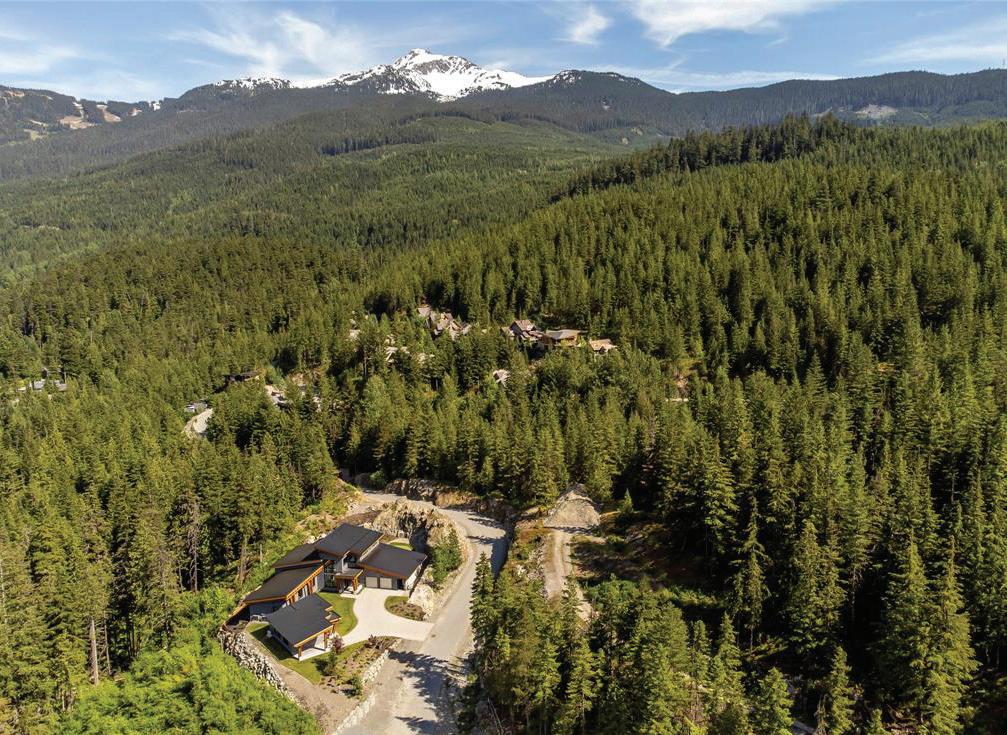













Staying Wyld is a state of mind fueled by the extensive benefits of medicinal mushroom power. To that end, they produce their organic medicinal mushrooms in North America where they have strict controls on their product. They steam their mushrooms to maximize their bio-availability. They put the environment first by not contributing to the plastic problem. Products are packed in glass bottles with metal lids making them infinitely recyclable. Soon to be stocked at Nesters.































































Nesters Market 604.932.3545 Pharmacy 604.905.0429 nestersmarket.com 7019 Nesters Road (Just 1 km north of Whistler Village) 2021 Pharmacy & Wellness PRESCRIPTIONS WHILE YOU SHOP 8am to 6pm. 7 days a week Prices Effective At Whistler Nesters From: Thursday, December 1st to Wednesday, December 7th, 2022. We reserve the right to limit quantities. Sale limited to stock on hand. Some items subject to Tax, plus deposit, recycling fee where applicable. Stay Wyld
CHRISTMAS TREES Arrive December 1st Fraser, Canaan & Noble Firs 6’ – 8‘ various prices.
$7.99 EACH Slow-Dried, Super Traditional Pasta INGRAIN
PLEASE NOTE: The store will close at 6PM on Wednesday Dec. 7th for our annual staff Christmas party.
The other battle
Far from the frontlines, local firefighters and first responders fight another challenge: mental illness. - By Robert Wisla

14 GIMME SHELTER
With the municipality’s emer gency cold weather shelter plan set to kick in at -20 C, WCSS searches for space that could open in -10 C or warmer.
15 LEGENDS OF THE HALL
Few have had a bigger influence on Whistler’s development than Peter Alder and Paul Mathews, who were inducted to the Canadian Ski Hall of Fame last week.
20 KEEP ON TRUCKIN’
The Garibaldi Volunteer Fire Department recently purchased a new wildland fire truck that will better equip crews for the rising number of callouts to the backcountry.
24 GROWTH PLANS
As Pemberton’s population surges, Village officials want to ensure the community will have enough housing supply to keep up.
36 MOMENTUM SHIFT
IBSF World Cup action returned to Whistler at a pivotal moment for sliding sports in the province, following a leadership shakeup at Bobsleigh Canada Skeleton.

42 NEW NORMAL

After several years of pandemic workarounds, the Whistler Film Festival returns this week to a semblance of normality, featuring 41 feature films and 45 shorts in all.
COVER The whole alpha dog theory is a myth, based on short-sighted science from the 1940s. Truth is, in a wolf pack as well as within a hunter-gatherer society, the strongest take care of the weakest like family and there is no power struggle. Enough with all the strongman bullshit. - By Jon Parris // @jon.parris.art
32 42 36 THIS WEEK IN PIQUE
4 DECEMBER 1, 2022





























































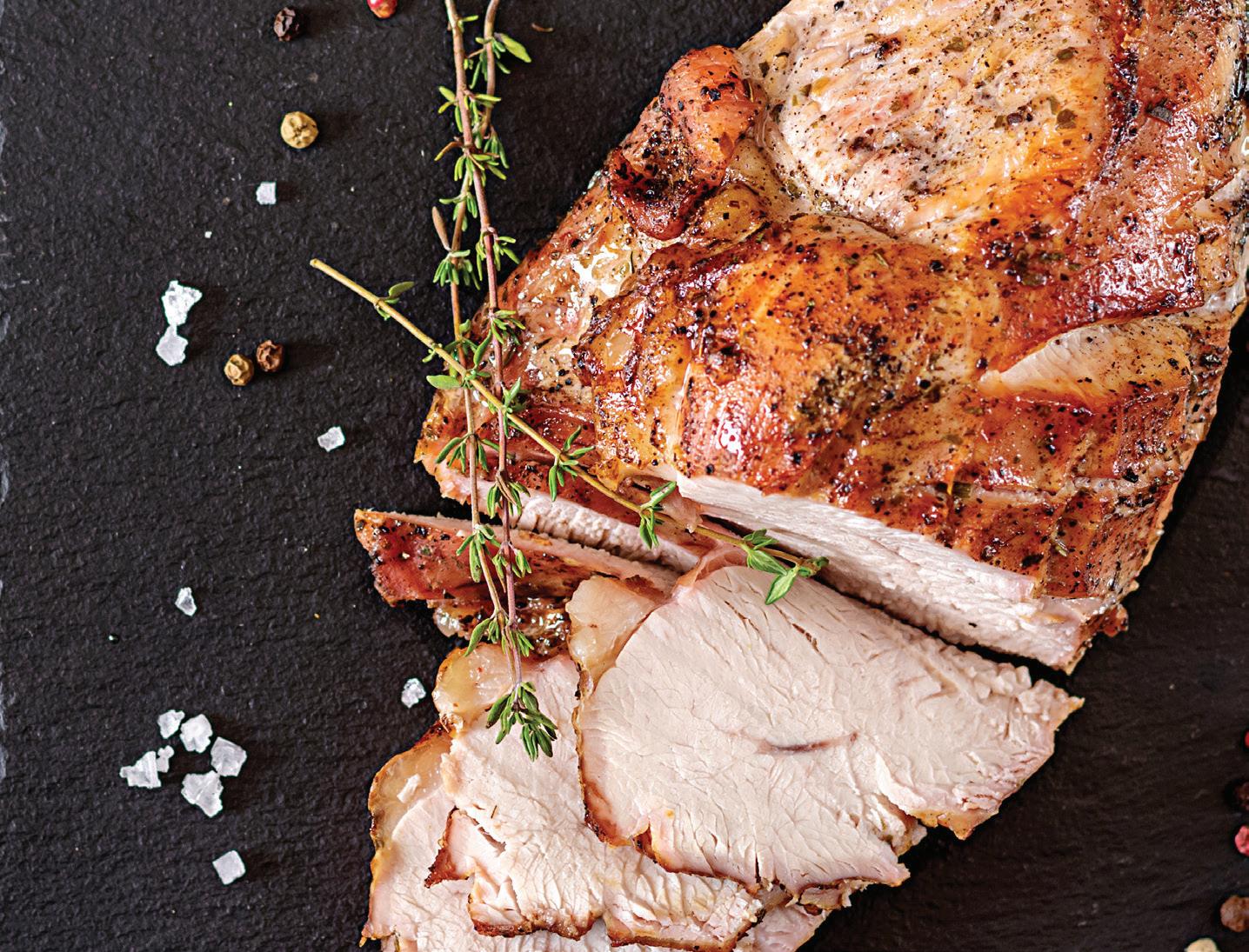






































IMPORTED Fresh Organic Mandarins 1.81 kg 9 99 EA LOCATED IN WHISTLER MARKETPLACE VILLAGE NORTH • FRESHSTMARKET.COM apply online AT FRESHSTMARKET.COM Grow us with PRICES IN EFFECT FRIDAY, DECEMBER 2 - THURSDAY, DECEMBER 8 799 Jesse Tree Fine Foods Olives assorted 400 g – 500 g 699 each 379 /100 g Cracker Barrel Shredded Natural Cheese or crumbled feta 300 g – 320 g Ocean Wise Wild Pacific Sockeye Salmon Fillets previously frozen butter board figlicious 749 EA 999 EA COWS CREAMERY Butter 250 g LE MEADOW'S PANTRY Handcrafted Preserves 250 mL 4 lb CANADIAN GRAIN FED Fresh Boneless Centre Cut Pork Loin Roast or Chops family pack 11.00/kg 4 99 LB IMPORTED Fresh Blueberries 1 pint weather permitting 3 99 EA * Promotional voucher must be presented at time of purchase. Excludes applicable taxes, bottle deposits, tobacco, eco-fees & gift cards. This voucher has no cash value so we cannot give cash back. One voucher per person, per household, per purchase, per day. promotional voucher valid for instore purchases only. This voucher is only validat Fresh St. Market in Whistler. 4330 Northlands Blvd Whistler, BC V8E 1C2 Expires december 8, 2022
Opinion & Columns
Founding Publishers KATHY & BOB BARNETT
Publisher SARAH STROTHER - sstrother@wplpmedia.com
Editor BRADEN DUPUIS - bdupuis@piquenewsmagazine.com


Sales Manager SUSAN HUTCHINSON - shutchinson@wplpmedia.com
Production Manager AMIR SHAHRESTANI - ashahrestani@wplpmedia.com
Art Director JON PARRIS - jparris@wplpmedia.com
Advertising Representatives
TESSA SWEENEY - tsweeney@wplpmedia.com
GEORGIA BUTLER - gbutler@wplpmedia.com
Digital/Sales Coordinator AMELA DIZDARIC - traffic@wplpmedia.com
Production production@piquenewsmagazine.com
Features Editor BRANDON BARRETT - bbarrett@piquenewsmagazine.com

Arts Editor ALYSSA NOEL - arts@piquenewsmagazine.com
Social Media Editor MEGAN LALONDE - mlalonde@piquenewsmagazine.com
Reporters
BRANDON BARRETT - bbarrett@piquenewsmagazine.com
MEGAN LALONDE - mlalonde@piquenewsmagazine.com
ALYSSA NOEL arts@piquenewsmagazine.com
ROBERT WISLA - rwisla@piquenewsmagazine.com

DAVID SONG - dsong@piquenewsmagazine.com
Classifieds and Reception mail@piquenewsmagazine.com
Office and Accounts Manager HEIDI RODE hrode@wplpmedia.com

Contributors G.D. MAXWELL, GLENDA BARTOSH, FEET BANKS, LESLIE ANTHONY, ANDREW MITCHELL, ALISON TAYLOR, VINCE SHULEY, LISA RICHARDSON


President, Whistler Publishing LP
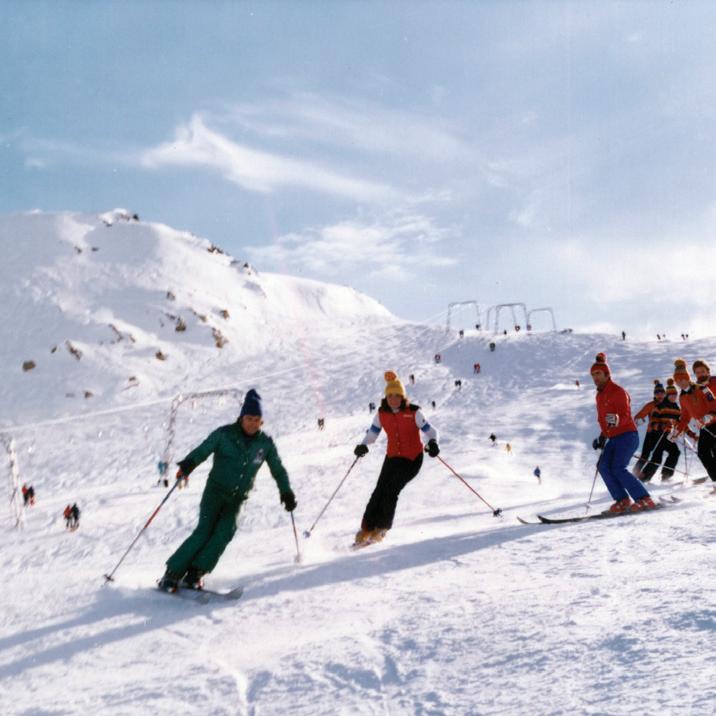

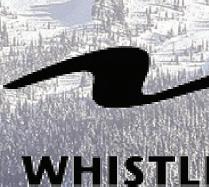
SARAH STROTHER - sstrother@wplpmedia.com
Subscriptions: $76.70/yr. within Canada, $136.60/yr. courier within Canada. $605.80/ yr. courier to USA. GST included. GST Reg. #R139517908. Canadian Publications Mail Product Sales Agreement #40016549.
Environment & Adventure
THIS WEEK IN PIQUE 46
13 PIQUE’N
08 OPENING
is
10 LETTERS
30 RANGE
Leslie
40 EPICURIOUS
MUSEUM MUSINGS Whistler’s growth into a world-class ski destination defied experts’ early warnings in the 1970s that the community wasn’t the right fit for a resort destination.
YER INTEREST Winter in Whistler is a state of readiness as much as a state of mind, and it pays to be prepared mentally, physically and financially in your first season, writes Andrew Mitchell.
REMARKS With the seasonal churn and many longtime locals leaving for greener pastures, Whistler
at risk of losing its institutional memory, writes Brandon Barrett this week.
TO THE EDITOR Letter writers this week decry ageism in the workplace, thank the community for commemorating a beloved local, and argue for lower speed limits on Highway 99.
ROVER
Anthony takes a deep dive into the evolution of the RECCO system, a vital tool for search-and-rescue teams used the world over to locate people in the backcountry.
The husband-and-wife team behind Whistler pastry start-up Lily Food Creations draw inspiration from the delicate and delectable cream puffs of France.
62 MAXED
40 46 We acknowledge the support of the Government of Canada #202 -1390 ALPHA LAKE RD., FUNCTION JUNCTION, WHISTLER, B.C. V8E 0H9. PH: (604) 938-0202 FAX: (604) 938-0201 www.piquenewsmagazine.com Pique Newsmagazine (a publication of Whistler Publishing Limited Partnership, a division of Glacier Media) distributed to over 130 locations in Whistler and to over 200 locations from Vancouver to D’Arcy. The entire contents of Pique Newsmagazine are copyright 2021 by Pique Newsmagazine (a publication of WPLP, a division of Glacier Media). No portion may be reproduced in whole or in part by any means, including electronic retrieval systems, without the express written permission of the Publisher. In no event shall unsolicited material subject this publication to any claim or fees. Copyright in letters and other (unsolicited) materials submitted and accepted for publication remains with the author but the publisher and its licensees may freely reproduce them in print, electronic or other forms. Letters to the Editor must contain the author’s name, address and daytime telephone number. Maximum length is 250 words. We reserve the right to edit, condense or reject any contribution. Letters reflect the opinion of the writer and not that of Pique Newsmagazine Pique Newsmagazine is a member of the National Newsmedia Council, which is an independent organization established to deal with acceptable journalistic practices and ethical behaviour. If you have concerns about editorial content, please contact (edit@ piquenewsmagazine.com). If you are not satisfied with the response and wish to file a formal complaint, visit the web site at mediacouncil. ca or call toll-free 1-844-877-1163
Lifestyle & Arts
OUT Max prepares to do something he dreads every year—donate to the food bank—the consequence of a wealthy country and resort community that still hasn’t figured out how to feed its most vulnerable.
for additional information. This organization replaces the BC Press council (and any mention of it). ISSN #1206-2022
6 DECEMBER 1, 2022 Interested in ski race volunteerism? Come out and meet the famous Weasel Workers. The Whistler Mountain Ski Club is hosting the Alpine Nor Am Cup Finals this March. We invite you to join us for an informative evening to lear n from the best and how to get involved in volunteering for the race! December 10th @ 6pm WMSC Club Cabin 2028 Rob Boyd Way




































SUPPLYISTIGHTTHISYEAR, RESERVEYOURSTODAY! FRESH, FREE RANGE TURKEY ANTIBIOTIC & HORMONE FREE Christmas Trees ARRIVE THUR, DEC 8 All proceeds proudly donated to the Rotary Club of Whistler Millennium F ee di n g the Sp irit o f Wh i st ler Si n ce 198 8 100's of free dry & warm underground parking spots available. CREEKSIDE VILLAGE 604.938.9301 TRANSIT PASSES on sale instore @whistlercreeksidemarket /CreeksideMarket BEST CUSTOMER SERVICE 2020, 2021 Current Opening Hours: Daily from 7am-8pm Follow us on Facebook & Instagram for changes to our opening hours. BC GROWN ROYAL GALA APPLES $5 3LB BAG KIMBERLY’S BAKESHOPPE HOLIDAY COOKIES Gingerbread or Sugar $5 284G HEINZ BEANS 7 Varieties to Choose From $2 398ML PHILADELPHIA CREAM CHEESE 7 Flavours to Choose From $4 227G PRODUCE DELI BAKERY GROCERY DAIRY/FROZEN FRESH LINGCOD FILLETS $4 /100G MEAT/SEAFOOD BC GROWN POTATOES Red or Yellow $4 5LB BAG CREEKSIDE’S OWN CROISSANTS Baked Fresh Daily $5 3 PACKS KELLOGG’S NUTRIGRAIN BARS 5 Flavours to Choose From $3 295G DR. OETKER FROZEN PIZZAS Ristorante or Casa di Mama $5 330-410G ROSSDOWN FARMS ROASTING CHICKENS $4.69/LB 10.33/KG SOUP ETC RETAIL READY SOUPS 12 Flavours to Choose From $6 700ML SAPUTO BOCCOCINI Regular, Pearls or Cocktail $5 200G SPECIALS: DECEMBER 1-7 MADE IN VANCOUVER
The long and short of it…


“SO, HOW LONG have you lived here?”
It’s an age-old question that gets asked time and again here in Whistler, where the number of seasons under your ski boots is as much a badge of honour, if not more, than the black diamond runs you’ve conquered.
A loaded question if ever there was one, it’s a quick way of measuring one’s localness versus another, which becomes all the more
BY BRANDON BARRETT
crucial in a tourism destination that welcomes a fresh batch of newbies to town with every ski season.



That same transience means that Whistler has a short memory, even by the standards of a community that didn’t officially incorporate until 1975. The seasonal nature of our town can feel like spinning on a hamster wheel at times, something that became readily apparent to me as a reporter when I realized how many of the same events and issues, big and small, I was covering on an annual basis.
Some of that is simply inherent to the reality of a community with a population makeup that is constantly in flux. Of course, we can’t expect newcomers to be aware of, say, the proper Bear Smart practices, so we understandably have to educate and re-educate every spring.
But I would posit there’s something else at play that helps speak to Whistler’s short memory: the luxury of distraction. Having
reported in this town for a decade now, I’ve come to learn that, as a general rule of thumb, Whistlerites mostly fall into two camps: the passionate, engaged bunch who are up to speed on virtually every happening in town; and the blissfully unaware who typically don’t care about a new development until it impacts them directly.




Often, this dividing line is drawn along demographics, which, again, makes sense when you consider the young adults who come here for a season or two don’t have the same level of investment as someone who has set down roots and built a life here.
been a ski resort—say it with me, folks: housing, affordability and staffing—we would do well to try to extend our collective memory as a community.

This becomes an even harder task when we continue to lose the kind of institutional knowledge that can only be gained through years of lived experience. While hard data on this is tough to come by, anecdotally, it sure seems as if the resort has lost and continues to lose a not-insignificant number of long-time locals, with the pandemic and fast-rising cost of living proving to be the final straw for many.
involved the team from Whistler’s awardwinning First Nations museum, the Squamish Lil’wat Cultural Centre (SLCC), were. It was also heartening to see Whistler Blackcomb hold its own orientation events for new staff this winter at the SLCC, which seems to be developing into a popular hub for local organizations and an essential place for learning. I can’t think of a better introduction to the community, and, by extension, Canada.
Life in Whistler didn’t begin when the ski lifts started chugging, nor did it begin when the first European settlers set foot in the area, and if we as a community are sometimes
They say ignorance is bliss, and I believe many Whistlerites have taken that old adage to heart—and why wouldn’t they when you’ve got as many compelling distractions as we have surrounding us?
But, to trot out another well-used aphorism: “Those who cannot remember the past are condemned to repeat it.” Given the number of complex challenges that have persisted here for as long as we’ve
It’s a troubling trend that makes events like this month’s Connect Whistler even more crucial. Formerly known as Welcome Week, this week-long slate of social events and information sessions organized by the Whistler Community Services Society gets newcomers acquainted with life in their adopted home and the resources available to them. Looking over this year’s schedule, it was encouraging to see just how deeply
guilty of having a short memory, perhaps it’s the original inhabitants of this place that can shake us out of our collective amnesia. The first example that comes to mind is all the talk of how “unprecedented” the coronavirus was for our society and our community, when, in fact, for Nations like the Lil’wat and Squamish, the memories of the devastation wrought by a widespread epidemic do not sit in some distant past. ■
OPENING REMARKS
While hard data on this is tough to come by, anecdotally, it sure seems as if the resort has lost and continues to lose a not-insignificant
time locals, with the pandemic
of living proving to be the final straw for many. 8 DECEMBER 1, 2022 O wn in one of the best locations in Whistler, the Aspens This is a true sk i-in/sk i- out location on Blackcomb Mountain with an incredible pool and 3 hot tubs Renovated and bright 1-bed/1-bath unit Unlimited owner use with nightly rental option. Asking price: $1,249,000 345-4800 Spearhead Drive Dave Brown Personal Real Estate Corporation davebrown@wrec com www davesellswhistler com Cell: 604 905 8438 / Toll Free: 1 800 667 2993 ext 805 Take a v r tual tour WWW.WHISTLERLAWYER.CA adam@whistlerlawyer ca | 604 905 5180
number of long-
and fast-rising cost








Surprised by ageism in the workplace
When you get older, people treat you differently, but it’s not something you ever expect. On my first day working for Whistler Blackcomb, working at the Roundhouse, a new employee informed me that I was “too old” to be working there. It is true that ski resorts are places where young people traditionally work, but one would hope that everyone would be equally welcome.
Another time when working at the base of the Creekside Gondola, a ticket-scanner asked me if I knew what Instagram was. Presumably he thought that because I was an older person, I wouldn’t have heard of an app that is used by 1.4 billion people.
On another occasion, while working at the base of Fitzsimmons Express, a guest called out to me, “You’re the oldest liftie I’ve ever seen.” There was one other guy in lift ops who was older than me, but again it’s not something I would expect to hear while working.

And finally at Whistler Blackcomb, a lift operator I was working with called me an “old man” after being scolded by a supervisor. Now it is true that I am an old man, but I don’t want to be reminded of it.
I do appreciate having jobs at these places, but it would be nice if I could be treated like everyone else.
Chris Brossard // Whistler
Remembrance of Whistler local ‘an epic success’
On Sept. 26th, a celebration of life for longtime local Bruce Rowles was held on the Woodlands Terrace at the Fairmont Chateau Whistler.
The weather was beautiful, as was the venue,
the art show and the attendance. It was beyond my expectations.
On behalf of myself, and the Rowles Family, a big thank you goes out to: Joanne and her amazing team at the Fairmont; Mike Douglas, for the best damn job as MC; Ace MacKay-Smith, for spinning the tunes; Steve “Cuz” Cousins, one of Bruce’s best friends, who passed away earlier this month and was owner of Spicy Sports, which donated ski racks for the ski display; everyone who helped with the art show set-up, who contributed their skis, artwork and stories; as well as everyone who spoke, giving moving tributes to Bruce and their times with him.
With the love and support of my family and friends, along with Bruce’s family and friends, the day was an epic success.
I know Bruce was smiling in heaven.
Big love to you all, Mandy Dobbs and the Rowles Family // Qualicum Beach
Speed limit on Hwy. 99 through Whistler should be lowered
The 80 kilometre/hour speed limit [on Highway 99] from Function Junction to Creekside is too fast.
If we have a 60 km/h limit past Emerald, all the way to the heliport, why is 80 km/h OK going through the sharp turns before or after Creekside (depending on the direction of travel)?
We have the highway warriors heading to town at full speed past Function, towards Spring Creek Community School, where the drivers are trying to get in and out.
Along with regular traffic, there are loaded logging trucks ripping downhill, at the maximum speed limit, on snowy, icy roads from Creekside.
Let’s have the speed limit changed to 60 km/h from Creekside to the highway bridge in Function.
Please give enough time and distance in winter conditions. Be courteous and patient. Drive safe. Thank you.
Pierre Gillot // Whistler
Something needs to give with housing in Sea to Sky ‘before our communities break’
This piece (“’It’s grim’: Whistler’s housing crisis continues to deteriorate ahead of another winter,” Pique, Nov. 17) was a great deep dive into the everworsening rental housing situation in the Sea to Sky. The young workers profiled and the incredibly challenging position they find themselves in trying to secure any sort of housing should be a wake-up call for everyone in our region.

The lack of housing available for those working on mountain, in service positions at local businesses, tradespeople, young families, and those on reduced incomes is a real threat to the viability of our towns.
This has been stated again and again but it remains true: Without any rental housing available at prices people can afford, we will continue to see reduced services, businesses closing on days
S H A L L V I N E R
9580 Emerald Drive
Spectacular with breathtaking mountain and glacier views! Looking across Green Lake to the Ar mchair Glacier and Wedge Mtn, you will feel you are living and working on top of the world! The expansive living room, dining and kitchen offer spectacular views of the surrounding mountains from 20 ft windows, as does the spacious wrap around deck


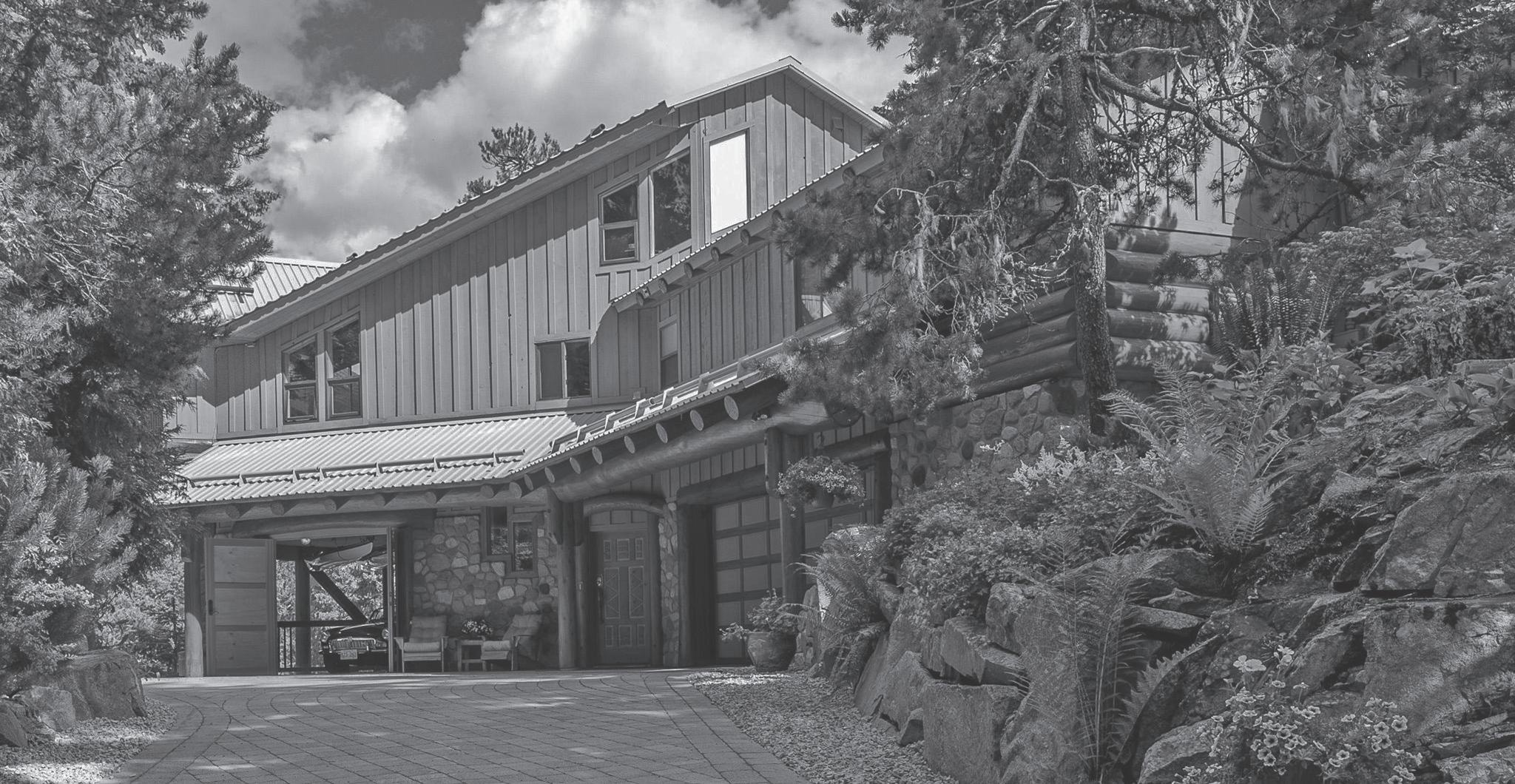

The two unique work from home spaces are quiet, private, and bright with a small deck to soak in the inspiring vie ws. This spacious and rare home office space is just one of the many features of this 3350 ft ² home Four bedrooms w ensuite bathrooms spread over 3 floors, offer separation and privacy for
family/guests
An immaculate 620 sf garage with workshop area, and fully refinished car port w swing doors is perfect for the car enthusiast, snowmobile, kayaks etc , and has easy access to covered storage
LETTERS TO THE EDITOR
10 DECEMBER 1, 2022 t: 604.935.2287 e: marshall@marshallviner.com marshallviner.com
P E R S O N A L R E A L E S T A T E C O R P O R A T I O N Register at marshallviner.com to receive weekly real estate updates.
M A R
$3,749,000
they would normally be open, and the on-mountain experience deteriorating. We are a world-class, yearround destination, and as our service levels drop, those choosing where to take their holidays or to relocate to work in a mountain town will consider other destinations.
The housing situation becomes more critical every day. It is time for the municipalities of Squamish, Whistler and Pemberton to work together to enact immediate short-term solutions to this crisis. A good start would be to enact a housing roundtable comprised of renters, landlords and representatives of all three local governments to try and find shortterm solutions. The suggested municipally approved areas for campers and RVs deserves immediate consultation and implementation. Restrictions on short-term rentals and tax credits for those providing long-term rentals must also be considered. Renters are pleading for support. Landlords are raising rents as high as the market will bear. Something needs to give before our communities break.
Tania Chiasson // Pemberton


Young workers’ Whistler experience should include reasonable rent








In almost every edition of Pique Newsmagazine there are articles about the housing crisis, including the article, “It’s ‘grim’: Whistler’s housing crisis continues to deteriorate ahead of another winter,” in the Nov. 17th edition.

Most of us have heard about irresponsible tenants, but let’s look at irresponsible landlords and landladies. I recently heard about a two-bedroom suite rented eight (yes, eight) young men, each paying $1,200 per month. That’s $9,600 per month! Although I do not know the suite owner’s investment cost or expenses, it looks like the owner is gouging. That’s plain greed. That is an irresponsible landlord or landlady. Everyone wants a good return on investment, but, if true, this is plain gouging. This is not a safe nor healthy environment for tenants.
Most young men and women come to Whistler for the life experiences—skiing, riding, biking and yes, partying. Whoever comes to Whistler for a season or two or four with the idea of making money is naïve. However, it is our responsibility to give people the opportunity to have a good Whistler experience—and that includes reasonable rent. Governments must create incentives to develop affordable rental housing.
Every young person who leaves Whistler will say either good or bad things about their Whistler experience. We want them to say good things, as they are the sales force that spreads the word around the world. Some of them will have good careers and return to Whistler as guests.
As a young man, I travelled extensively in the early 1970s. I was a tenant on four occasions. Not once did I feel over-charged or ripped off. My landlords were all reasonable businessmen. My experiences were very positive. This was before rent controls, when there were choices and a healthy vacancy rate.
Cuthbert Huckvale // Whistler

 - STEVE ST. ARNAUD
- STEVE ST. ARNAUD
Stating facts doesn’t make me a climate denier
I read, with great interest, Max’s summary of Canadian politics in last week’s
Pique (“The irrelevance of Canada’s ‘only relevant’ political party—The Greens,” Nov. 24). I couldn’t help but notice your scathing assessment of the Conservatives.
You made a very small point of our climate mitigation being “a fart in the wind.”
As Canada contributes 1.5 per cent of the world’s emissions, we could shut down our entire economy and have virtually zero impact on global emissions. Making this point does not make me or anyone else a “climate denier”—as it’s a fact.
Now I would like you to tell me how the Liberals are going to have any impact on world emissions by taxing Canadians to death.
The rich countries of the world need to share our technologies as well as our energy (natural gas) to those countries that are still burning coal.
If we help them, it will help the world.
Right now the Liberals are standing in the way!
Steve St. Arnaud // Whistler ■
Backcountry Advisory
AS OF WEDNESDAY NOV 30
Welcome to winter! The first weekend of December will be cold and dry, with clearing skies inviting you into the mountains. To make the most of a trip into the backcountry at this time of year, it’s important to know about the overall snow cover as well as the associated avalanche conditions.
Early-season storms have coated alpine terrain with 100 to 150 centimetres of snow, but depths taper off dramatically below 2,000 metres. There are still lots of rocks and trees poking out at treeline and below treeline elevations, which pose hazards to you and your gear. Slopes with enough snow for a smooth
surface, a.k.a. slopes that look good for riding, have the potential for avalanches. Until we get a few more snowfalls down to the valley bottom, the best recreation will be at treeline and above.
Following Wednesday’s storm, there should still be dry powder in terrain that is sheltered from the wind. The main areas of concern this weekend will be where the recent snow has settled into a slab or where the wind has blown it into a slab. Steep alpine slopes will be the most suspect, but as usual it will be important to evaluate the snow and terrain carefully and travel with a transceiver, shovel, and probe. Stay warm and have a safe winter!
Write to us! Letters to the editor must contain the writer’s name, address and a daytime telephone number. Maximum length is 450 words. Pique Newsmagazine reserves the right to edit, condense or refrain from publishing any contribution. Letters re ect the opinion of the writer and not that of Pique Newsmagazine GOT GOOD VIBES TO SHARE? Send them to goodnews@piquenewsmagazine.com
LETTERS TO THE EDITOR
CONDITIONS MAY VARY AND CAN CHANGE RAPIDLY Check for the most current conditions before heading out into the backcountry. Daily updates for the areas adjacent to Whistler Blackcomb are available at
or surf to www.whistlerblackcomb.com/mountaininfo/snow-report#backcountry or go to
■
604-938-7676,
www.avalanche.ca.
now the
“Right
Liberals are standing in the way!”
DECEMBER 1, 2022 11 Engel & Völkers Whistler T 604 935 2287 E marshall@marshallviner com marshallviner com 8271 Alpine Way • 3 Bedrooms + Study, 2 Bedroom • Quiet lot with loads of sunlight & fabulous mountain views • Home and property are meticulously maintained $3,499,990 Register at marshallviner com to receive weekly real estate updates W H I S T L E R ’ S #1 RE/MAX AGENT 3111 S T MORITZ Walk to Alta Lake or the Wh is tler Village from th is 4 bedroom end unit townhome. Nig htly Rentals allowed. $2,775,000






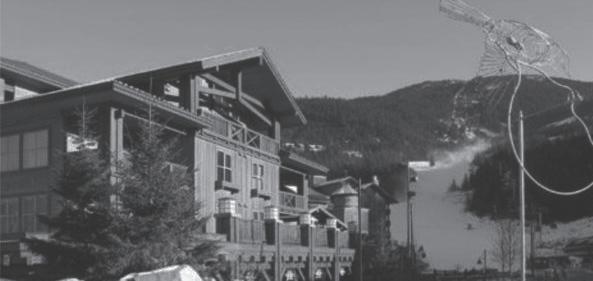
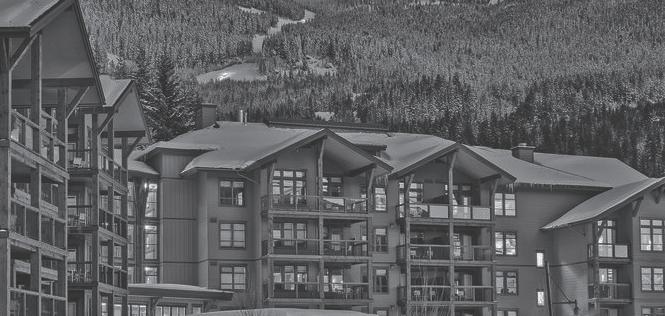




12 DECEMBER 1 , 2022 SAT DEC Whistler the grocer y store everything’s good here Mountain Psychology a n d N e u r o f e e d b a c k C e n t r e S t e p h e n L M i l s t e i n , P h D , R P s y c h B C # 7 6 5 6 0 4 9 3 8 3 5 1 1 D a w n a D i x x M i l s t e i n O T C O T B C # A A 0 2 0 1 6 0 4 9 3 8 3 5 2 3 Squamish: 38077 2nd Ave, Squamish, B C. // 604.848.9273 Whistler: #107 4 368 Main St, Whistler, B.C. V0N 1B4 Serving sea to sky for 18 years Nick Davies, Whistler local and exper ienced family lawyer pr actising across BC and Yukon. Call at 604-602-9000 or visit www.macleanlaw.ca Maclean Law is headquar tered in Vancouver with offices across Br itish Columbia JAMES COLLINGRIDGE CALL JAMES, THE LEGENDS & EVOLUTION SPECIALIST Direct: 604-902-0132 Toll Free: 1-888-689-0070 james@whistlerrealestate.net www.whistlerrealestate.net FULLY FURNISHED 1/4 OWNERSHIP CONDO/HOTELS IN WHISTLER CREEKSIDE THINKING OF BUYING OR SELLING? CALL JAMES FOR MORE INFORMATION. CONTACT JAMES FOR AVAILABILITY
The season is the reason
ANYBODY WHO HAS lived in Whistler for more than a few years will soon realize that we really only have two seasons here: our eagerly anticipated winters, which usually last a full six months; and please-don’t-catch-fire summers, which may only last a few weeks and are by no means guaranteed. The rest of the time is generally grey and wet and doesn’t deserve
BY ANDREW MITCHELL
a name (although you should always make a point of getting out and doing stuff anyway, otherwise life here can get boring).

Winter in Whistler is a state of mind as much as a state of readiness, and it pays to be prepared mentally, physically and financially. This will be my 24th winter season in Whistler, and I’ve learned a few things in that time, usually the hard way. At the risk of sounding patronizing, here’s the best advice I can give to newcomers:
Stock up on extra food because you don’t need, or want, to go on errands during a blizzard. It doesn’t matter how awesome a driver you are, or how good your tires might be, you’re in the way—the plows do a far better job making things safe when the roads are empty and untracked. Honestly, sometimes it feels like people wait for the flakes to start falling to
realize they’re running low on orange juice. A snowstorm is never business as usual.
You should also be ready for a power outage that can last for hours. You need flashlights, candles, food that doesn’t need to be cooked, etc. We get blackouts every winter, usually during storms when trees fall on powerlines or transformers spontaneously combust.
In that vein, we also live in a region that’s prone to rockslides, floods, washouts, and car accidents that can close the road for a long time, so make sure you have an emergency kit in your vehicle and at home. Always keep your car gassed up as well–saving three cents a litre by waiting to fill up in Squamish isn’t worth the stress of sitting in traffic behind an accident and wondering if and when you’re going to run out of gas.
On the mountains, always spot landings before getting airborne, know where you are to avoid getting lost out of bounds, and always stay out of closed areas in the early season—I cannot stress this enough. Closed zones are not secret powder stashes even though they often look that way from the top. These are areas with open creeks, exposed trees and stumps, tree wells, bare patches of mud, and all kinds of other hazards. I learned this lesson standing up to my knees in freezing water, trying to figure out how to unbuckle my board without drowning. Speaking of hazards, please do Future You a favour and put some money away. There’s a surprisingly high chance that you and/or one of your roommates is going to be injured at
some point in the season and will be unable to work. Whoever sells the Whistler Health Care Centre crutches and arm slings could probably buy and sell Elon Musk.
If (and it’s really more of a “when”) you get hurt, you’ll still need to cover rent, utilities, groceries, Netflix, weed, etc. Start building a nest egg early, putting enough away to get you through a four- to six-week broken bone or ligament strain. And if you make it through the entire season unscathed, then hey, money for a bike!
expensive. By all means, say your goodbyes but avoid the expensive sushi dinners and nights out on the town every single time someone leaves because (and it will take a while to realize this) there’s a good chance you’ll never see those people outside of social media again.
Getting back to the “six-months-ofwinter” thing, it’s a lot. You need things to do. Video games, board games, puzzles and hobbies. And you need patience, which can get frayed being cooped up with the same people for months on end.
Take your wellness seriously. Go outside. Buy grips for your shoes and get steps. Take vitamins; C and D are particularly important. Eat well. Go to a gym. Go snowshoeing or crosscountry skiing if you can afford the extra gear. Wash your hands often, don’t touch your face, and avoid all the viruses that go around and around all winter long as the whole world comes to Whistler to cough on our door handles.
It really helps to keep a budget and to go out a little less to keep your costs down. It’s an easy town to find work—you could have five jobs if you want them—but it’s just as easy to max out your cards, party away your savings and go broke. Or broker. I came to Whistler with $24,000 in student debt and a credit card with a $500 limit and as a result had a second job for my first eight years here.

Learning to say “no” is key and, as cruel as this sounds, avoid “going-away” parties like the plague. You’ll get invited to a lot of them in a transient town like this, enough that it gets
Warm clothes and good quality gear are a must to keeping your sanity—underlayers, snow boots, mitts for those days when gloves don’t cut it, and waterproof outer layers for those days when the snow is two degrees away from falling as rain. Being comfortable outside is everything here.



Most importantly, keep a sense of humour. Ignore all the long-timers like myself who complain about everything and think Whistler is going downhill—and not in the good way we’re all here to enjoy.
You’re going to have the time of your life. n

PIQUE N’ YER INTEREST
DECEMBER 1, 2022 13 604.938.1616 CANADIANWILDERNESS.COM EAGLE LODGE
Warm clothes and good quality gear are a must to keeping your sanity.
How cold is too cold?
BY MEGAN LALONDE
WHEN TEMPERATURES plunged below the -20-degree-C mark between Boxing Day and New Year’s last December, Whistler did something it had never done before: opened an overnight emergency shelter at the Whistler Public Library. The shelter was activated for six nights and jointly facilitated by the Resort Municipality of Whistler (RMOW) and Whistler Community Services Society (WCSS). A total of 19 people sought refuge in that time, according to the RMOW, or about six occupants per night, according to WCSS.
“After that, we started meeting as a group again, and saying, ‘That was really successful [and] much needed in the community,’” explained WCSS executive director Jackie Dickinson, “‘and with the impacts of climate change and the increase of precariously-housed individuals in our community, how can we work together and what can we do to continue this type of initiative moving forward?’”
The result is the RMOW’s new Extreme Cold Weather Shelter Plan (ECWSP), approved by mayor and council for use at the Whistler Public Library (WPL) as needed from now until March 31, 2023.

The RMOW will activate the plan whenever Environment Canada issues a cold weather warning for the resort, more specifically when temperatures reach at least -20 C with the wind chill for a minimum
of six hours, or -35 C for at least two hours. The shelter was activated for the first time on Wednesday night, Nov. 30, as overnight temperatures in Whistler were predicted to hit -23 C with the wind chill.
Based on Whistler’s typical weather patterns, RMOW staff expect to see the EWSP activated once or twice over the course of the winter, tallying up to about 10 nights each year. Funds for the shelter will come from Emergency Management BC.
As bitter temperatures settled into the Sea to Sky this week, Dickinson was working diligently to find a warm, safe space where any local who needs one can spend the night, even when conditions don’t meet that threshold. For the WCSS, that -20 C threshold is too high to leave Whistler’s more vulnerable community members out in the cold. The organization is currently working with BC Housing to establish another emergency shelter this winter that will activate when temperatures instead reach -10 C. The issue? WCSS hasn’t been able to lock in a location.
As per the definition of “extreme weather conditions” set out by B.C.’s Assistance to Shelter Act for communities within the Vancouver Coastal region, Whistler’s threshold for shelter activation could be set as high as -4 C, Dickinson explained. “Our ultimate goal would be to be able to activate [a shelter] at -4, but we’re still in the process of finding a location that could meet that criteria,” she said.
The RMOW’s -20 C threshold was determined “based on what we had to put in place last winter, and then also looking at the number of activations that the library could practically operate,” explained Ginny Cullen, the RMOW’s chief administrative officer. Activations are defined as “the number of
times [the library] would need to be opened as a shelter—so one activation could be for a number of days—but it’s the activation of opening it up as a shelter and then closing it down again, when we look at what the library is able to support operationally.”
In a letter to stakeholders seen by Pique, RMOW manager of protective services Lindsay DeBou said emergency extreme-weather shelters often provide facilities like laundry, showers, and secure storage, in addition to a supervised place to sleep.
“Given the limitations of the WPL, this facility cannot provide all the basic needs for long-term or frequent shelter care,” DeBou wrote. “However, it can provide an important community asset for the most extreme cold weather temperatures of the season.”
With WCSS staff in place and funding from BC Housing and the Whistler Health Care Foundation lined up, the last hurdle for WCSS’ lower-threshold emergency shelter is finding space.
The non-profit even investigated the possibility of accommodating an emergency shelter in their Nesters Road office, but an operation of that nature “is currently not permitted at the Whistler Community Services society site” due to a stipulation in WCSS’ lease agreement, Whistler Mayor Jack Crompton explained.
Crompton said the RMOW is “grateful” to WCSS for pursuing a lower- threshold shelter and is working with the organization to ensure any potential locations are “free from constraints, zoning, or otherwise.”
He added, “We’re supportive of this work and enthusiastic about finding a location that is ideally suited for the task.”
Dickinson, for her part, said WCSS is similarly thankful to the municipality for its willingness to activate a shelter at -20 C.
“And yet, we still strongly believe that an activation at a temperature of -4 or colder will work to ensure we mitigate the risks related to adverse health-care outcomes when it comes to being homeless and outside in the cold,” she added. “We’re going to continue to work with the key stakeholders in the community to find a location and, and I hope I can report back sometime soon that we have that location available.”
Officials from both the RMOW and WCSS acknowledged the number of temporary shelter visits last winter does not accurately represent the community’s current needs, and agree more work is needed to better understand the demand for temporary shelters in Whistler. The municipality has secured funding to carry out a vulnerable population study that will, ideally, provide more clarity. The assessment will be conducted “with input from WCSS and other non-profit organizations,” Cullen explained in a follow-up email, “because they have the best connections to this particular demographic.”
According to B.C.-based data-tracking website currentresults.com, Whistler sees temperatures fall past the -20 C mark on just one or two nights a year between November and February, and an average of 19 days where temperatures drop below the -10 C mark.
The minimum temperature hits -2 C far more frequently, on about 90 days each year, on average.
Hypothermia occurs when the body loses more heat than it can produce and its internal temperature drops below 35 C. The Canada Safety Council warns cold air “does not have to be frigid,” to be hazardous. “Hypothermia can happen at under 10 C,” according to the organization, “so it’s a threat even with aboveaverage winter temperatures.” n
WITH RMOW EMERGENCY SHELTER PLAN SET TO KICK IN AT -20 C, WCSS SEARCHES FOR SPACE THAT COULD OPEN IN -10 C OR WARMER
DEEP FREEZE The Whistler Public Library, pictured, was activated as an emergency cold weather shelter on Wednesday, Nov. 30, as temperatures dipped below -20 C with the wind chill.
NEWS WHISTLER 14 DECEMBER 1, 2022
PHOTO BY MEGAN LALONDE
Whistler legends Peter Alder and Paul Mathews inducted into Canadian Ski Hall of Fame
THE SKI RESORT BUILDERS WERE HONOURED IN A VIRTUAL CEREMONY ON NOV. 24
BY MEGAN LALONDE
NEWLY-MINTED Canadian Ski Hall of Famers Paul Mathews and Peter Alder are two men responsible for helping create the Whistler that is enjoyed by millions of visitors each year, but building one of the world’s top ski resorts wasn’t always on top of their respective to-do lists.
When Alder first arrived in the Sea to Sky corridor from Switzerland in the 1950s, his workdays were spent stringing power lines between Bridge River and Squamish.
It would be a decade until he became the ski-area manager of Red Mountain, near Rossland, in 1962, before moving on to Silver Star, Big White, and eventually to Whistler in 1978, when he was appointed GM and vice president of Garibaldi Lifts Ltd.
At around the same time Alder was managing resorts in B.C.’s Interior and working to establish the first Ski Area Management course at Castlegar’s Selkirk College, Mathews was in Whistler dreaming of how he could build a career designing ski resorts at a time when the trailhead to that career path didn’t exist.
Born in Denver, Mathews had arrived in Whistler in the late ’60s, heading north in search of snow after moving to Washington with his family and swiftly discovering Snoqualmie Pass didn’t measure up to the terrain he was used to skiing back in Breckenridge.
“I looked at the blue skies and the snow we have here and I was smitten,” Mathews remembered. “I just decided Whistler was going to be my home. I was a ski bum for a few years, skied 120 days a year, then said, ‘Well, I gotta find a profession [that will allow me] to live up here.”
There was certainly no post-secondary course for resort design, Mathews added, meaning he “had to sort of patch together [a degree]” himself.
Hugh Smythe, who moved to Whistler in 1966 at the age of 19 to work as a ski patroller and went on to become president of Blackcomb and then Intrawest Resort Operations Group, still remembers his response when Mathews told him about his plans to study forest ecology and landscape architecture at Washington State University in hopes of becoming a ski-area planner.
“I said to him, ‘Are you nuts?’” Smythe recalled.
“It was an impossible dream,” Mathews acknowledged. Still, Mathews would go on to become an expert in sustainable planning, purchasing a business license for $1 in 1975 to become one of the newly-incorporated Resort Municipality of Whistler’s first businesses. That venture was Ecosign, now the world’s leading ski resort design firm.
As for Smythe? “He ended up being my best customer, probably,” Mathews said with a laugh.
Smythe also served as the catalyst for both
Mathews’ and Alder’s inductions this month to the Canadian Ski Hall of Fame and Museum (CSHFM). Inducted into the CSHFM himself in 2010, Smythe nominated the two Whistlerites individually in the “builder” category.
Sadly, Mathews was the only one on hand to receive the honour himself. Alder earned the accolade posthumously, following his death in July 2021 at the age of 91. His wife Trudy and two sons, Rick and Doug, accepted on his behalf.
Though both left an immeasurable mark on Whistler, their contributions to the ski industry extend far beyond the resort’s boundary ropes.
Under the Ecosign umbrella, Mathews has overseen the master plans for Whistler Mountain since 1976 and Blackcomb Mountain since 1986, was responsible for the design of six Olympic venue sites, developed Sun Peaks, and was the mastermind behind the merging of Zermatt, Switzerland’s five competing lift operators in 2002.

Still, among the hundreds of other projects Ecosign has completed in 46 countries and six continents, the development of his home mountains will always be one Mathews most cherished.
“We first became the biggest [resort] in Canada, but then we became, without question, the biggest in North America,” he said. “The guys at Vail used to say, ‘Oh no, that’s actually two separate ski areas, you’re not one resort’—you know, trying to cut our numbers—but when we put up the Peak 2 Peak, they had to shut up.”
Alder, meanwhile, initiated the first-ever ski-area master plan for Whistler Mountain, including the north-side lifts that would eventually service the sparkling new Whistler Village in 1980, serving as then-Blackcomb manager Smythe’s “arch competitor,” he joked.
Alder “was rightfully regarded as a founding father of the ski industry in British Columbia,” Smythe wrote in the nomination form. “Very few people were as deeply involved, for so long and at so many levels, as Peter was over his lifetime.”
Mathews’ and Alder’s paths converged several times over the years, in particular when Alder joined Ecosign as a consultant following his retirement, helping the firm move into the European ski industry. “I’ve had many, many mentors from the ski business. One of the oldest and most trusted has been Peter Alder,” Mathews said in his acceptance speech.
Though Alder’s work in the ski industry was an important part of his life, “there was another side of him that not everyone knew,” his son Doug said during the ceremony.
“His curiosity combined with a fearlessness meant that he would talk to everyone. He made people feel valued and special and it seemed that he was often helping someone get a job, a loan, open a business, figure out a career. I think this induction into the Canadian Ski Hall of Fame class of 2022 would have brought a tear to Peter’s eye, to be recognized in this way.” n
2 bedroom, 2 bathroom lock-off apartment at the base on Whistler Mountain, featuring King bed and 2 queen beds, full kitchen, fireplace, owners storage and balcony Generate income or enjoy unlimited owner use Amenities include pool and spa, sports bar, restaurant, shuttle ser vice, in-room dining, concierge and 24 hour front desk.


Nick Swinburne

Personal Real Estate Corporation Engel & Völkers Whistler
Phone: +1 (604) 932 8899
Email: connect@whistlerforsale com
NEWS WHISTLER DECEMBER 1, 2022 15
702-704 Hilton Whistler Resort & Spa
Great Views!
11 TREELINE, BENCHLANDS $2,395,000
Myrtle Philip Community School surpasses fundraising goal with some ‘OldSchool’ help
PARENT ADVISORY COUNCIL’S FALL FUNDRAISER NETS MORE THAN $10K AS SCHOOL CELEBRATES 30 YEARS
BY MEGAN LALONDE
WHISTLER’S MYRTLE Philip Community School turns 30 this year, but its history goes back a little further.
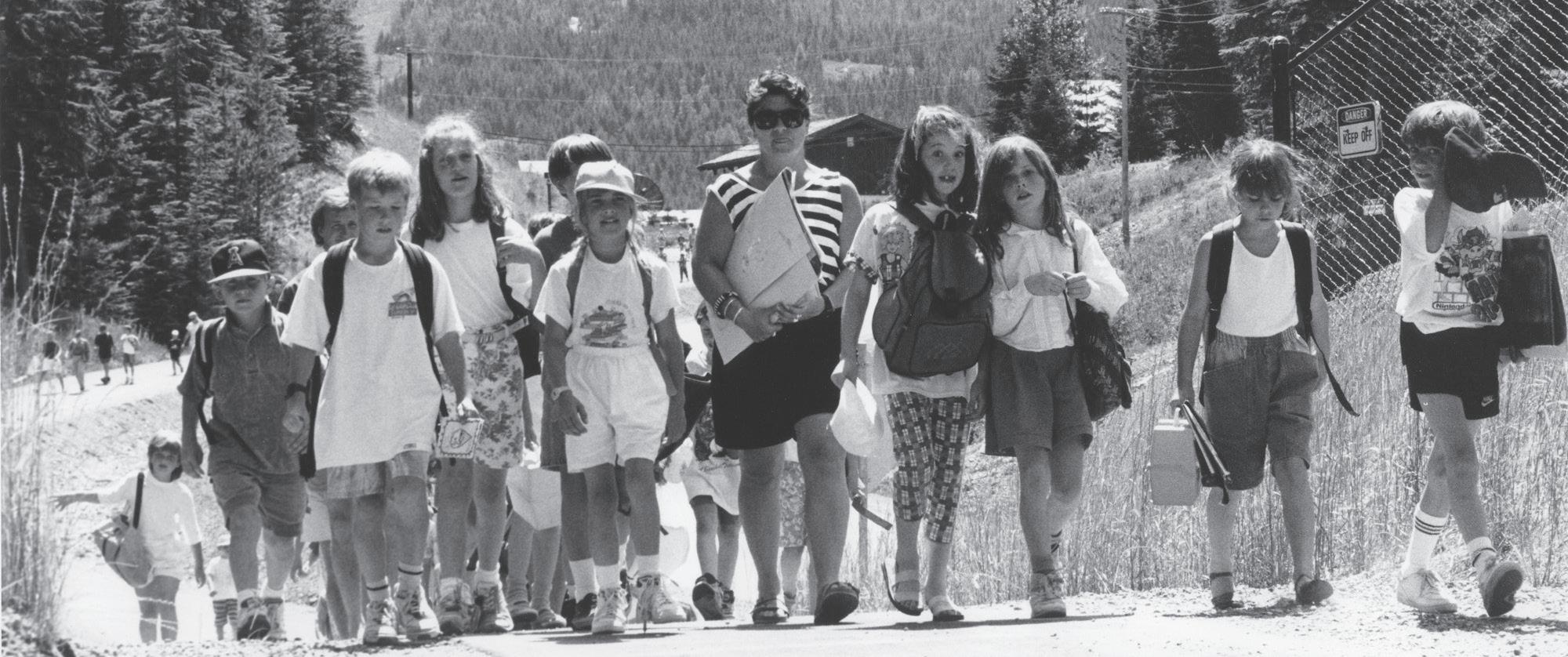
No, not just to the Whistler pioneer who serves as its namesake—she built Rainbow Lodge on the shores on Alta Lake in 1914—but to the first Myrtle Philip School that opened its doors in 1976, right around where the delta sits in what’s known today as Whistler Village.
The milestone proved the inspiration for the school’s Parent Advisory Council (PAC) annual fall fundraiser, which this year went “Old School” by reminding parents that while “times have changed,” the school’s “technology has not.”
According to the PAC, Myrtle Philip classes are currently in need of a tech upgrade, including tools like iPads, Chromebooks and interactive whiteboards.
Usually when it comes to school fundraisers, “You’re doing galas or you’re selling something,” explained organizer and PAC member Jodi Carter. “Finally, we were like, ‘Let’s just put a call for donations out,’ and it worked out well for this year.”















When the fundraiser came across Beau Jarvis’ desk, the message resonated immediately—and
not just because the fundraiser’s theme matched the moniker of the non-profit organization he founded in recent years.
“I went to the old Myrtle Philip in the village before this was built, and I feel like I still remember those days like it was yesterday, and now this new school is celebrating 30 years already,” he said with a laugh.












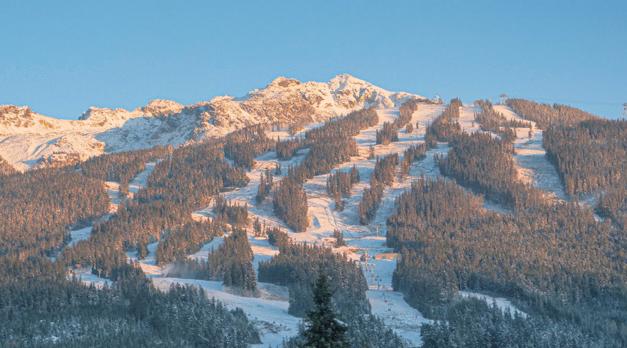





Jarvis, who today is president of Vancouver-based Wesgroup Properties, launched the Old School initiative to help support Whistler’s community, with a
particular focus on up-and-coming athletes and clubs who tend to spend most of their time on skateboards, snowboards or skis.
Jarvis’ Old School initiative donated $1,500 to the PAC; an amount matched by his friends at both Coast Mountain Excavations and JBJ Investments.
Between those donations, plus $500 from an organization called DANCEPL3Y, which donated funds raised from a Halloween dance, the PAC surpassed its $9,000 goal to raise $10,340 as of Tuesday afternoon, Nov.
29. Current MPCS teacher Gerhard Reimer was one of the teachers who made the jump to the ‘new’ school in 1992.
“I think when I started it was 150, 160 students,” he remembered. “It was not even quite one class per grade.”
While the school might be advancing in age, learning technology has been evolving at almost the same rate, he points out. “We started off with a small little computer lab,” Reimer recalled. “Even when we came to this school, we still had a computer lab, where each class would go and still be doing a lot of keyboard and word processing.”
Then came the Internet, followed by Wi-Fi, and laptops and iPads and Chromebooks and other state-of-the-art tech.
“It’s a bit overwhelming, actually, as a as an older teacher, how much technology has come into schools,” he added with a laugh, “But the Whistler Blackcomb Foundation and Parent Advisory Council, they’ve all been big supporters and enabled us to have the technology in our school, which we’ve always been so appreciative of … You know, technology just seems to go obsolete so quickly, so it’s always good to update.”
With the fundraising target hit, the Myrtle Philip school community will celebrate the big 3-0 with a birthday celebration in May. n
NEWS WHISTLER
OLD SCHOOL Students and staff relocating from the old Myrtle Philip Elementary School in the village to the new Myrtle Philip Community School on Lorimer Road in 1992.
16 DECEMBER 1, 2022 $1,201,999 SADIE BRUBAKER 604 907 1400 1 1 893 sqft • • • • 2 07 3 2 1 7 B LU E B E R RY D R I V E , W H I ST L E R $8,200,000 JEREMY FAIRLEY *PREC 604 935 9150 3 1 750 sqft • • • • $6,499,000 JOSH CRANE 604 902 6106 5 5 3,618 sqft • • • • $3,288,000 DANA FRIESEN SMITH *PREC 604 902 3878 3 2 1,550 sqft • • • •
WHISTLER QUESTION COLLECTION / COURTESY OF WHISTLER MUSEUM



100% silk scarf
4350 Blackcomb Way, Whistler, BC | Open Thursday to Sunday 11am to 6pm (Open Monday starting December 5) Give the Gift of Art This Holiday Season The Museum Shop’s annual sale starts November 25! Free shipping for online orders over $100, plus Members receive 15% off purchases in-store and online. Sale ends December 10. For sale terms and to shop visit shop.audainartmuseum.com
featuring a reproduction of Butterfly Transformation Theme, 1981 by renowned BC
artist, Jack Shadbolt.
Photo by Mirae Campbell
Revamped Whistler Security Association seeing success five months in
FROM ACTIVE SHOOTERS TO FIRE SAFETY, GROUP HOSTS WIDERANGING SPEAKER SERIES ON SECURITY TRENDS IN THE RESORT
BY ROBERT WISLA
WHAT SHOULD A business do when a shooting takes place nearby?
It’s a question that local business owners and hotels have been forced to ask themselves since a fatal shooting in July that saw two Surrey men open fire in the middle of the village in broad daylight.
Police soon after caught the reportedly gang-connected suspects, who were later charged with first-degree murder in what investigators said was a targeted hit. Although only a two-hour drive away, Whistler has mostly been insulated from the kind of gang violence that is becoming increasingly common in Metro Vancouver.
But this summer’s brazen public shooting was a stark reminder that even a ski resort catering to the wealthy jet set isn’t immune to the harrowing effects of gun violence. How businesses should deal with an active shooter is just one of the many topics the recently re-formed Whistler Security Association (WSA) seeks to address in its speakers series.
Formerly the Whistler Hotel Loss Prevention Association, the WSA reformed at the end of June as a forum for hotels and local businesses to discuss and hear from experts about the latest security trends affecting the resort.


































The Westin’s loss prevention manager, Darren Stackhouse, who spearheaded the
organisation’s return, said being prepared for the worst-case scenario is always a good idea.
“We must be prepared because our world is changing, and people say it could happen here. Well, it did happen here. So will it happen again? Hopefully not. But the thing is, we want to ensure that we’re prepared,” he said.

“Whistler is a playground, and certain gang elements have money to burn. They will go to a
- DARREN STACKHOUSE
playground; we’re one of them. So it’s not as if we don’t get these people up here; we do.”
On Dec. 14, the WSA is holding an event featuring Whistler’s new fire chief, Thomas Doherty, who took over the position in midJuly. Doherty will explain how businesses can best prepare for fire-related emergencies.
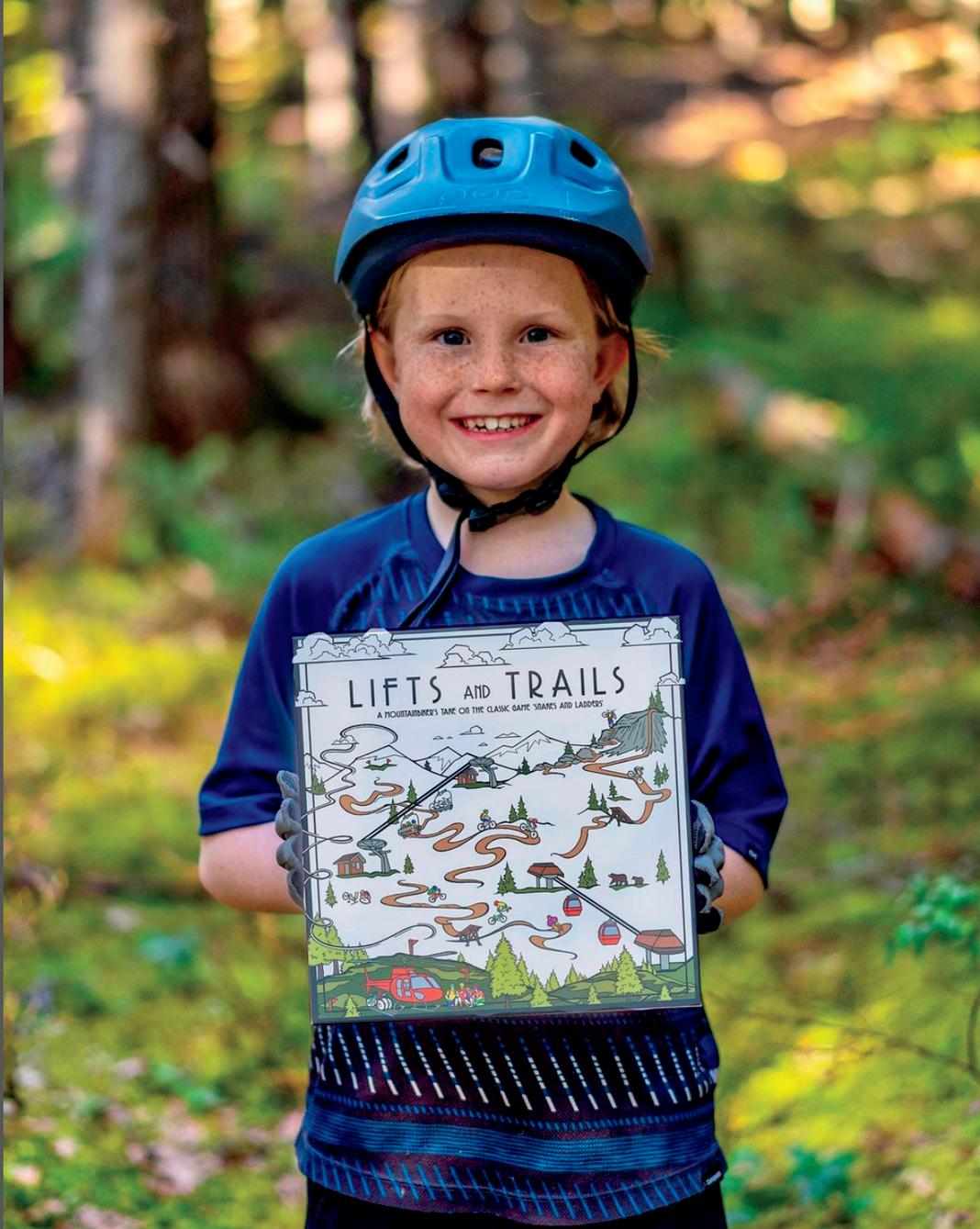

The free information session will take place at the Westin at 4 pm. All are welcome to attend.

If you wish to attend or ask questions about the upcoming forum, please email darren.stackhouse@westinwhistler.com. n


THEY WEREN’T EXACTLY caught redhanded, per se, but you can hazard a guess the suspects that broke into a car in Whistler this week only to make out with a single mitten were probably experiencing some colouration on their digits in sub-zero temperatures.

In a release Wednesday, Nov. 30, police said a vehicle parked in the 2400 block of Cavendish Way in Creekside was broken into and rummaged through sometime overnight on Sunday, Nov. 27.
Curiously, Mounties said only the mitten was reported stolen, although there were other items and documents in the car. Investigators did seize some of the items left behind for evidence, but nothing turned up that would point them in the direction of the mitten bandits.
With no other information to go off of, police said they have closed the file.
WHISTLER RCMP ISSUED FIVE SUSPENSIONS FOR IMPAIRED DRIVING IN PAST WEEK
As winter conditions set in, Whistler police were kept busy over the past week, issuing five suspensions for impaired driving between Nov.
22 and 28.
In the first instance, police said a member on foot patrol spotted a driver doing donuts in Day Lot 5.
In the second file, officers reportedly observed a driver on the pedestrian-only Village Stroll.
The third driver that was suspended tipped police off after they were seen idling their vehicle in a parking lot.
Then, in the fourth file, police said the driver was seen driving an unlicensed individual’s car.
In all four cases, the RCMP said the drivers’ failed a breathalyzer test, which got them suspended from driving for 90 days and their vehicle impounded for 30 days.
Three of the four 90-day suspensions were handed to local drivers, police noted.
A fifth driver from out of country was also issued a three-day driving suspension, and had their vehicle towed, after providing breath samples in the “Warn” range, indicating a breath alcohol level of 0.05 or greater. The legal limit in B.C. is a blood alcohol content equal to or greater than 0.08.
Whistler police dealt with a total of 112 files in the past week, including six vehicle collision investigations. n
NEWS WHISTLER
“We must be prepared because our world is changing.”
Vehicle break-in in Whistler nets thieves a single mitten 18 DECEMBER 1, 2022 Fuse & Sip night! Come and taste the flavors of Fuse & Sip Infusion cocktails! G A M E S G A M E S N I G H T N I G H T wit i h Rio with Rio MacDona nald MacDonald 4 P M 7 P M D E C E M B E R 1 2 1 7 2 0 6 3 L A K E P L A C I D R D , W H I S T L E R , V 8 E 0 B 6 J O I N U S F O R C H R I S T M A S L A T E N I G H T S H O P P I N G Come and do a spot of Christmas shopping at Get The Goods We will be giving out wine and you can meet Rio MacDonald Rio is a young entrepreneur that created two best selling games Lifts and Runs and Lifts and Trails 6 0 4 9 3 5 7 8 7 8 s h o p g e t t h e g o o d s c a @ g e t t h e g o o d s w h i s t l e r S c a n t o b o o k F R E E t i c k e t s Purchase anything in store and get it engraved on site for FREE Or buy a book and have a small calligraphy inscription written inside by Melissa Mallari Taste the difference! Try out a Riedel wine glass compared to a regular one. Sample some delicious BC wines while you’re at it! Wine provided! Register Event upcoming events Dec 8th: Riedel wine night Dec 15th: Engraving and Calligraphy night Dec 22nd: Fuse and Sip night

New wildland fire truck a ‘game-changer’ for GVFD
THE GARIBALDI VOLUNTEER FIRE DEPARTMENT PURCHASED THE RAPID RESPONSE TRUCK AND DRONES TO ASSIST WITH FIREFIGHTING
BY ROBERT WISLA
THE AREA BETWEEN Whistler and Squamish is better prepared for future wildfires after acquiring new state-of-the-art equipment.
On Nov. 28, with Squamish-Lillooet Regional District (SLRD) chair Jen Ford in the driver’s seat, the Garibaldi Volunteer Fire Department (GVFD) pushed a brandnew wildland fire truck into its fire hall adjacent to Black Tusk Village, followed by a demonstration of the vehicle in action.
Wildland vehicles are essentially rapidresponse fire trucks designed specifically to transport fire personnel, water, pumps, hoses and other equipment to the scene.
Fire Chief Dan Ross called the wildland truck “a game-changer” for the department, allowing fire personnel to respond quickly and safely to incidents—particularly in the backcountry, where call-outs have increased in both frequency and complexity.

“We started to realize there are more people taking into the backcountry and more calls that are more remote, along service roads. We needed a different vehicle to better suit our needs,” Ross said at Monday’s ceremony.
“As the wildfire risk grows, it’s no secret it grows here in the Sea to Sky for us, so
what we’re doing is adding a new tool to our toolbox.”
The wildland truck replaces a 17-year-old pickup truck, and is designed to drive through rough terrain.
Along with the new fire truck, two new
drones have been purchased that will be used for scene assessments and lookouts to enable quicker and more efficient decision-making in real time. The GVFD currently has five trained drone pilots with the applicable licences.
The GVFD has about 20 volunteer
firefighters and services the areas of Pinecrest, Black Tusk Village and a 16-kilometre stretch of Highway 99. The department commonly extends its response area along the highway to assist other partner agencies.
After the push-in, a demonstration was held to show off the vehicle’s capabilities. Volunteer firefighters lit a small chimney fire and used the new truck to put it out—with help from Area D director Tony Rainbow, who suited up in bunker gear for the occasion.


The acquisition of the new equipment was made possible through grants provided by the Whistler Blackcomb Foundation, Woodfibre LNG, and the GVFD Society, as well as the SLRD, which provided $100,000 for the purchase of the vehicle.
“You make a commitment to come here and practise and leave prepared to go out on calls. Our responsibility as a board is to make sure that you have what you need to be able to do that job and to be able to do it safely,” Rainbow said.
“I don’t ever want to hear about a firefighter being hurt out on a call because the equipment they had wasn’t satisfactory; that should never happen,” he added. “There is an increased risk of wildfire. We’re not going to see a decrease in the amount, so it’s even more important that we make sure you’re prepared for the work that you volunteer to do.” n

NEWS WHISTLER
KEEP ON TRUCKIN’ The Garibaldi Volunteer Fire Department’s new wildland fire truck is designed to handle tricky backcountry terrain.
20 DECEMBER 1, 2022 R e s t a u r a n t + B a r f r o m 5 p m L a t e N i g h t B a r WINTER WARM UP 3 COURSES FOR $69 @ w i l d b l u e r e s t a u r a n t 4 0 0 5 W h i s t l e r W a y W h i s t l e r V i l l a g e C L O S E D S U N D A Y S / M O N D A Y S p r i v a t e u n d e r g r o u n d g u e s t p a r k i n g s c a n f o r r e s e r v a t i o n s o r c a l l 6 0 4 9 6 2 2 2 3 3 TUESDAYS / WEDNESDAYS / THURSDAYS E N D S D E C E M B E R 7 " T h e h o t t a b l e t o b o o k t h i s s e a s o n i s n e w s u s t a i n a b l e s e a f o o d s p o t W i l d B l u e R e s t a u r a n t + B a r " C O N D É N A S T T R A V E L E R
PHOTO BY ROBERT WISLA































































































































Outdoor Recreation Council of BC calls on new premier to prioritize parks and trails
NEARLY 40 OUTDOOR GROUPS AND BUSINESSES SIGN ON TO LETTER ADDRESSED TO PROVINCE AHEAD OF NEXT YEAR’S BUDGET
BY ALYSSA NOEL
DOZENS OF OUTDOOR organizations and businesses across the province have signed a letter urging B.C.’s new premier to prioritize funding for BC Parks, Recreation Sites and Trails BC, and community-based trail groups in next year’s budget.
Spearheaded by the Outdoor Recreation Council of BC (ORCBC)—whose varied membership includes everyone from BC Marine Trails to the BC Federation of Fly Fishers and Protect our Winters—the goal was to connect with the newly appointed David Eby.
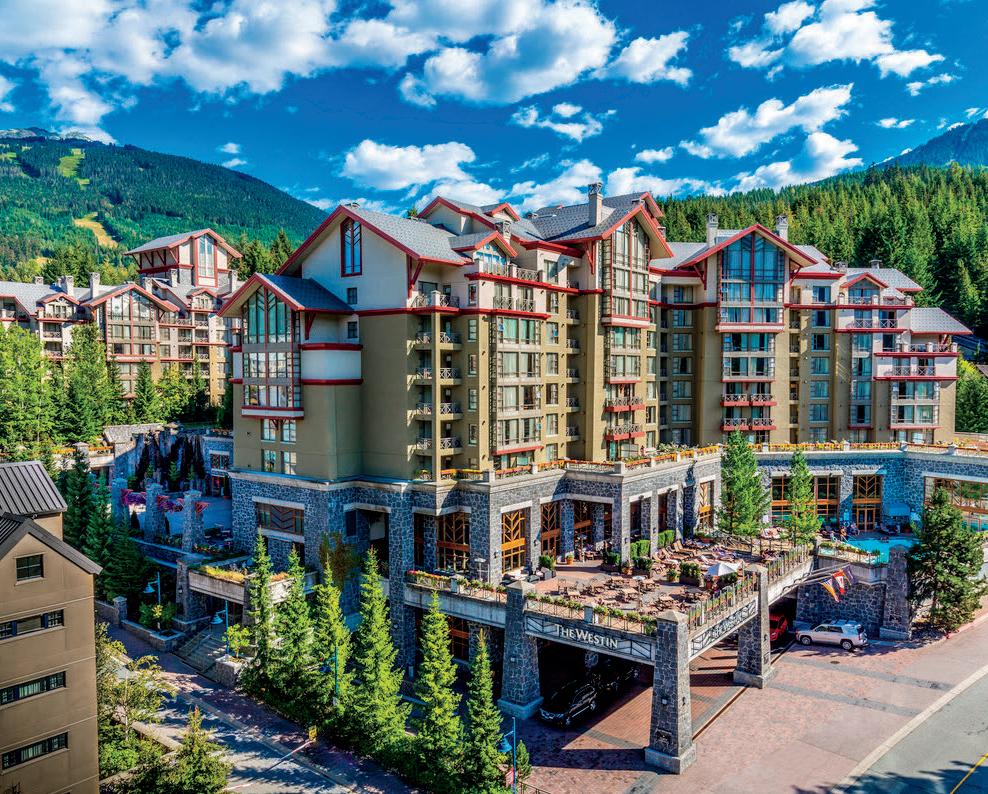

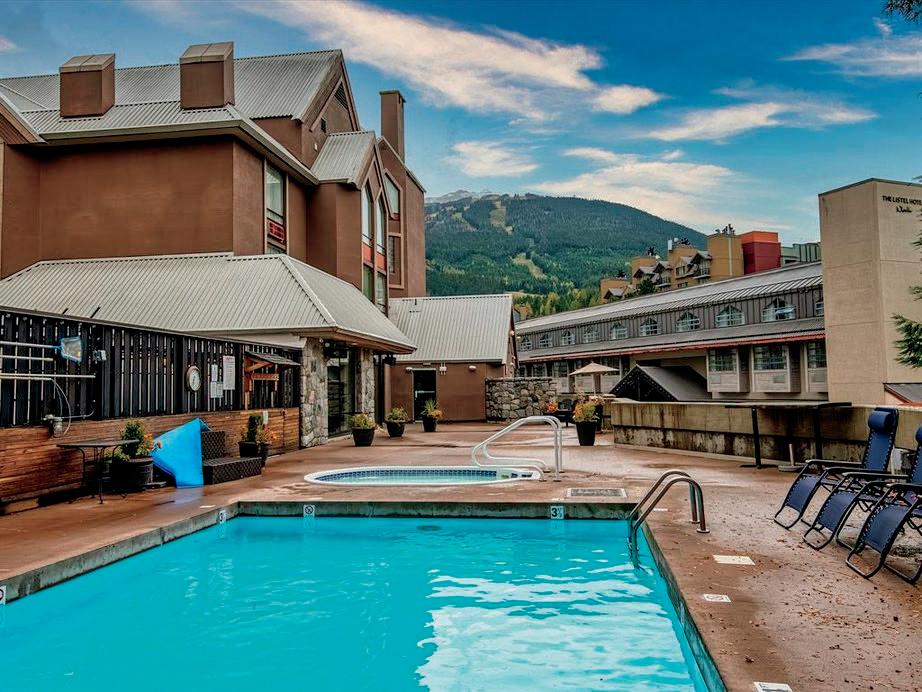


“We all feel there’s such a desperate need for more interest from the province in solving the urgent problems and nurturing the sector as a whole,” said Louise Pedersen, executive director of the ORCBC. “We really feel outdoor recreation is important to the vast majority of British Columbians.”

An Ipsos survey cited in the letter says that “85 per cent of outdoor recreation participants support more government investment in the development and maintenance of trails, parks and other recreation amenities in the province.”
In the letter, the ORCBC highlights three areas it says most need funding. They include increasing the annual operational budget of Recreation Sites and Trails BC to $20 million and the annual budget of BC Parks to $100 million; amending the Trails Strategy for British Columbia and supporting the implementation of the updated trails strategy; and investing $10 million in a BC Trail Fund to offer community-based organizations support for maintaining local trails.
“Those three requests are our highest priority requests at the moment,” Pedersen said. “In all our interactions with our members we always hear one of the big barriers to any sort of progress is a layer of capacity within BC Parks and, to a greater extent, Rec Sites and Trails BC. They don’t have the
capacity to work with trail-based volunteer groups. We need to make sure they’ve got the capacity they need to do a good job planning, managing, and also making sure recreation interests are protected.”
As highlighted in the letter, while Rec Sites and Trails BC oversees 15,000 kilometres of trails and 2,200 rec sites on Crown land, it only has a staff of 50 and an $8-million operating budget.
On the trail maintenance front, ORCBC is advocating for a dedicated fund that could offer money to groups across the province.



“We have talked to the province about that,” Pedersen says. “There seems to be a lot of nodding, ‘We need to do something like that.’ Right now, if you’re a trail group, you’re spending way too much time fundraising when really, as a province, we’re much better off if we can support community-based trail groups with a mechanism [for funding].”
Whistlerite Todd Lawson, who signed the letter on behalf of Mountain Life Magazine, said more support would be welcome for local trail builders.

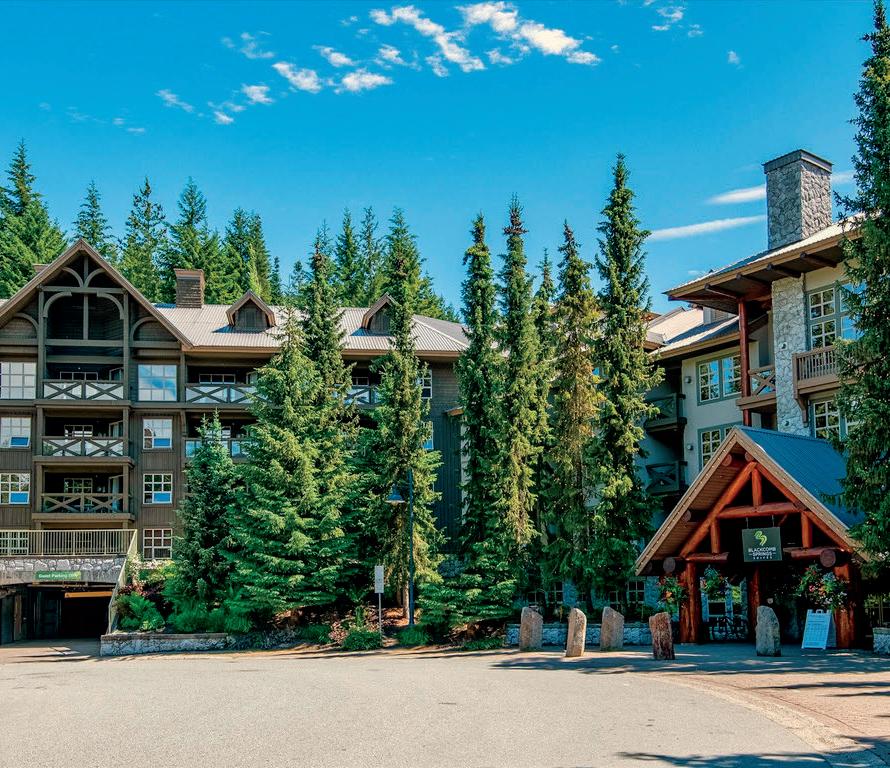
“Whistler in particular is home to some of the world’s best trail builders,” he wrote in an email. “They are passionate, selfless individuals who should be properly appreciated and compensated for their efforts, full stop. They need financial support to keep adding to this vast and varied network of trails growing responsibly into the future.”
For her part, Pedersen is hopeful Eby will pay attention to their advocacy work.
“We know the finance minister and treasury board are actively looking at all the many recommendations that the select standing committee on finance and government services have made,” she said. “They’re mulling over all these recommendations. It’s about everything under the sun, so right now is a key time to speak up about this.”
To read the full letter, visit orcbc.ca. n
NEWS WHISTLER
22 DECEMBER 1, 2022 RACEANDCOMPANY.COM 604 932 3211 332 4370 lorimer road s shaw@raceandco com WILLS & ESTATES BUSINESS LAW REAL ESTATE LAW FREE CONSULTATION Meet with me via video conference, telephone, and email SHOLTO SHAW JOIN THESE CONDOS AS PART OF MY BESPOKE MARKETING PROGRAM 604-902-2033 Denise@Whistler-RealEstate.ca RE/MAX Sea to Sky Real Estate 304 ASPENS 4800 SPEARHEAD DRIVE BLACKCOMB MOUNTAIN $1,200,000 1 bedroom, 1 bathroom, 578 sf Renovated, fully furnished & equipped ready for airbnb View of ski hill A true slopeside location Outdoor Pool & 2 hot tubs. 1 bedroom & loft, 1 bathroom, 811 sf Vaulted ceilings, lots of windows & balcony with views of Whistler Mountain Outdoor hot tub & pool Phase 2 zoning 301 ADARA 4122 VILLAGE GREEN WHISTLER VILLAGE $500,000 911 WESTIN RESORT & SPA 4090 WHISTLER WAY WHISTLER VILLAGE $620,000 1 bedroom, 1 bathroom, 590 sf 4 Star, luxur y hotel, next to the Whistler Gondola A favourite for personal use & investment Restaurants, gym, spa, outdoor pool/hot tubs, concierge, ski/bike valet Phase 2 zoning 435 BLACKCOMB SPRINGS 4899 PAINTED CLIFF BLACKCOMB MOUNTAIN $400,000 Studio , 1 bathroom, 427 sf Slopeside to Blackcomb Mountain right on the ski out to Blackcomb Gondola An owners favourite in the summer and winter Outdoor pool/hot tub right on the ski slope Phase 2 zoning.
LOVe OF LOCal










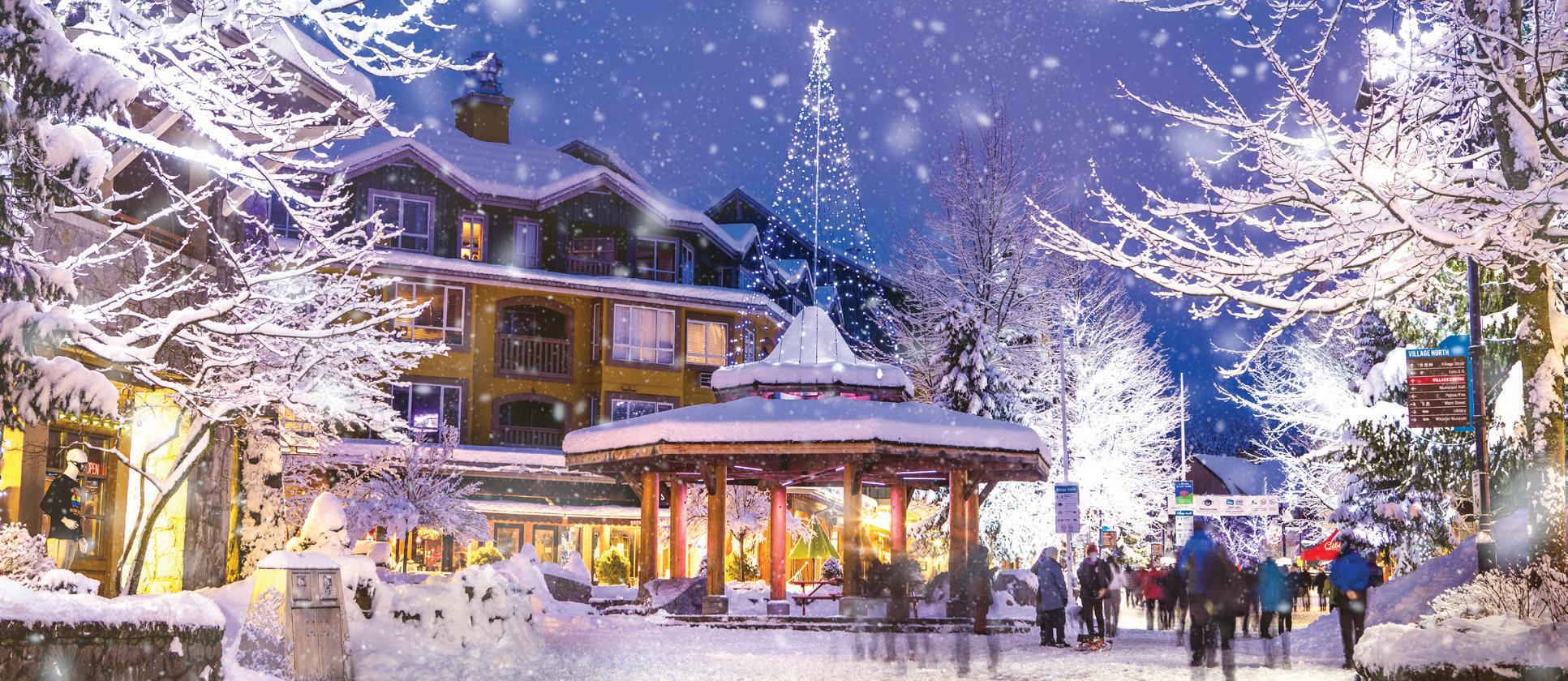



$100 SHOPPING VOUCHER FOR $80 VALID AT PARTICIPATING WHISTLER BUSINESSES BUY NOW AT WHISTLER.COM/SUPPORT-LOCAL 1.800.944.7853
FOR THE
As Pemberton’s population surges, officials want to ensure it has enough housing supply to keep up
REPORT DETAILS THE AMOUNT OF LAND VOP NEEDS TO SET ASIDE TO SUPPORT COMMUNITY’S HOUSING NEEDS FOR NEXT 5 YEARS
BY DAVID SONG
WITH THE MOST recent census data confirming Pemberton as one of British Columbia’s fastest growing communities, elected officials heard a presentation from Village of Pemberton (VOP) staff on Nov. 29 meant to guide future housing strategies in Spud Valley.
Between 2016 and 2021, Pemberton’s population grew by a whopping 32.4 per cent, from 2,574 to 3,407, outstripping the rate of the surrounding Squamish-Lillooet Regional District (SLRD) in that time.
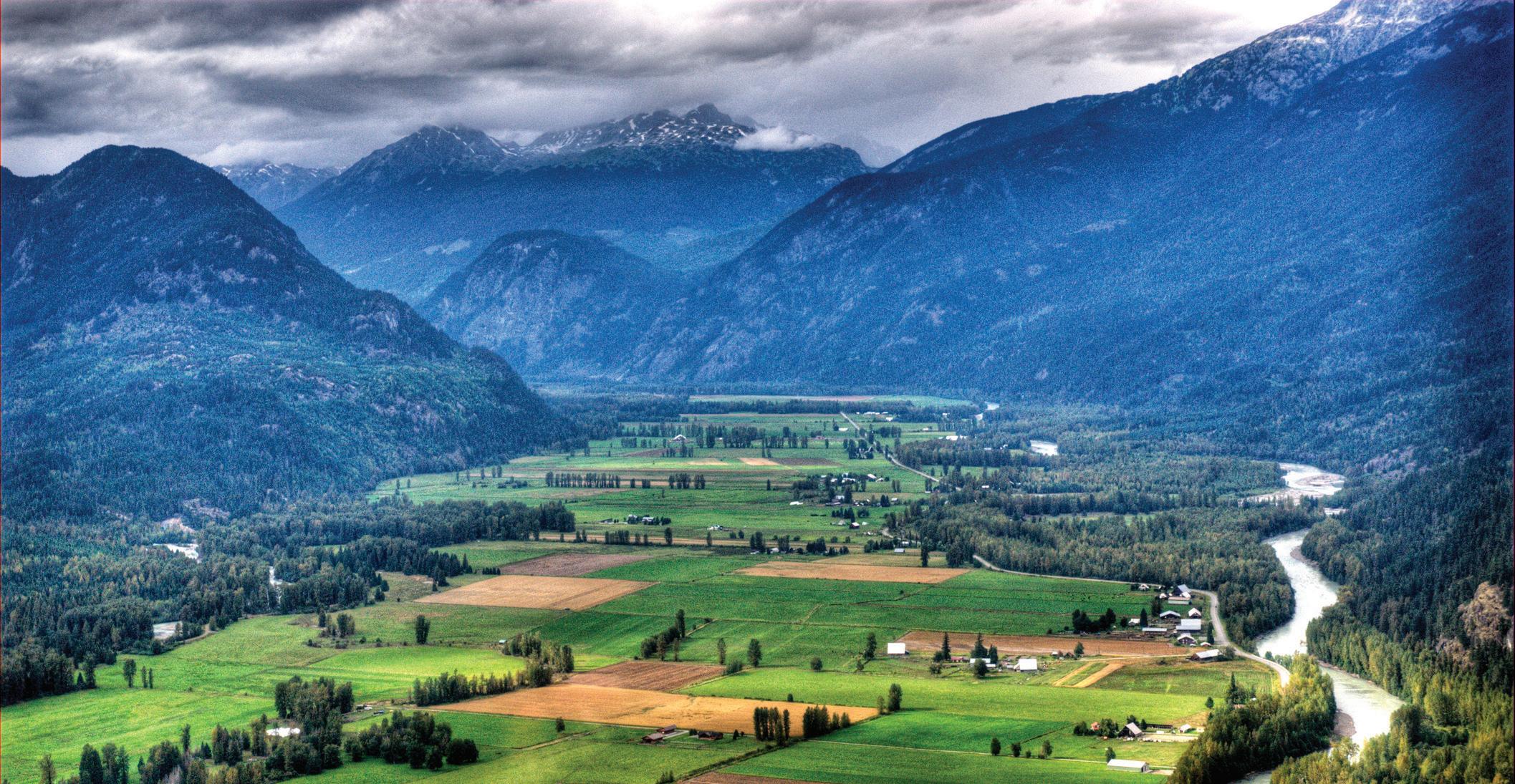
With that in mind, Tuesday’s report was meant to evaluate both the current and projected housing supply in Pemberton to ensure that the VOP has set aside enough land for residential development to support the community’s housing needs for at least five years.
“This data matters [to assess] housing needs, facilities and infrastructure, and to help inform decision-making,” said planner Avery Hargitt, who presented the overview to mayor and council.
Drawing from Statistics Canada census data, as well as housing and development statistics from the VOP’s internal records, the report noted that, overall, the SLRD grew by 7,381 between 2016 and 2021, with 833 of those new residents coming to Pemberton.
While other Sea to Sky communities also experienced significant growth spurts, Pemberton’s 32-per-cent jump was still higher than Whistler (19 per cent), Squamish (22 per cent) and the SLRD (18 per cent).

“Pemberton is outpacing and outgrowing Whistler and the SLRD quite rapidly [in terms of growth rate],” said Hargitt.
This has had impacts on household makeup as well. Hargitt pointed out that the average household size in Pemberton over the last decade has been around 2.5, while there are about 1,467 dwellings in the Village. Those two figures multiplied equals roughly 3,667, which is slightly higher than Pemberton’s currently reported population. This number indicates, at least on paper, that the VOP has
been able to meet the housing needs of its citizens so far.
The overview also offered a snapshot of Pemberton’s current development landscape. In total, there are 267 active applications (including 111 single-family dwellings and 92 townhomes) in the zoning stage, 264 in the development-permit stage (195 apartments, 69 townhomes) and 186 in the building-permit stage (including 74 single-family dwellings).
Out of 947 total proposed residences, 721 are slated to be built in the core, or “downtown cluster” of Pemberton. An additional 226 are planned for the so-called “hillside cluster,” which includes Sunstone, The Ridge and The Plateau.
It should be noted that, while proposals in the building-permit stage are more likely to be completed sooner than those in the zoning stage, not all projects flow from one stage to another in a linear fashion. Additionally, some of these proposals may not work out due
to various factors, such as broader economic conditions or project-specific challenges.
Nonetheless, these statistics appear promising to Scott McRae, Pemberton’s manager of development services.
“Those numbers indicate a very strong interest in investing in our community,” he said at the council meeting. “Housing investment is a prerequisite for all sorts of more sophisticated types of investment, like businesses deciding to relocate, so I think it’s a necessity to attract highly competitive firms and talented workers to our region.
“An abundance of development applications is a good position to be in,” McRae continued. “Interest rates, prices and other market fundamentals will throttle ultimate supply and match it to meet demand. This is a process that unfolds over many years.”
A significant majority (74 per cent) of current Pemberton residents live in market housing, while 22 per cent live in secondary
dwellings, and three per cent in purpose-built rentals. Thirty-five per cent of Pemberton dwellings are of the single-family variety, with 26 per cent being townhomes, 22 per cent secondary suites and 17 per cent apartments.
In response to a question from the public, McRae and Mayor Richman explained that the council has virtually no authority to intervene when private landowners choose to develop their own property, so long as those landowners adhere to existing zoning bylaws and regulations. However, council members can exercise discretion over proposed zoning amendments and influence how building bylaws will evolve.
“The council is going to have an opportunity to have a bigger conversation about growth and development as part of the OCP update,” said McRae. “[The result of that conversation] will be codified in the next OCP that the Village will follow for the next 10 years.” n
NEWS PEMBERTON
GROWTH SPURT Given Pemberton’s significant growth in the past five years, Village officials heard a report this week meant to guide future housing strategies in the community.
24 DECEMBER 1, 2022
Contact your Sales representative at Pique Newsmagazine today for a free digital audit Get noticed! 604-938-0202 sales@piquenewsmagazine.com
PHOTO BY DAVE STEERS / GETTY IMAGES
Glacier Media Digital experts help businesses succeed online.
Two 3 year term positions are available to ser ve on the Council appointed Forest & Wildland Advisor y Committee. You should have a background in forestr y, ecology, and/ or resource management, and a k nowledge of the Whistler area. The committee m eets once per month for 2 hours during business hours. Please submit a shor t information sheet describing your qualifications and interest before 4:30 p.m., December 8, 2022. Committee Information: whistler.ca/fwac




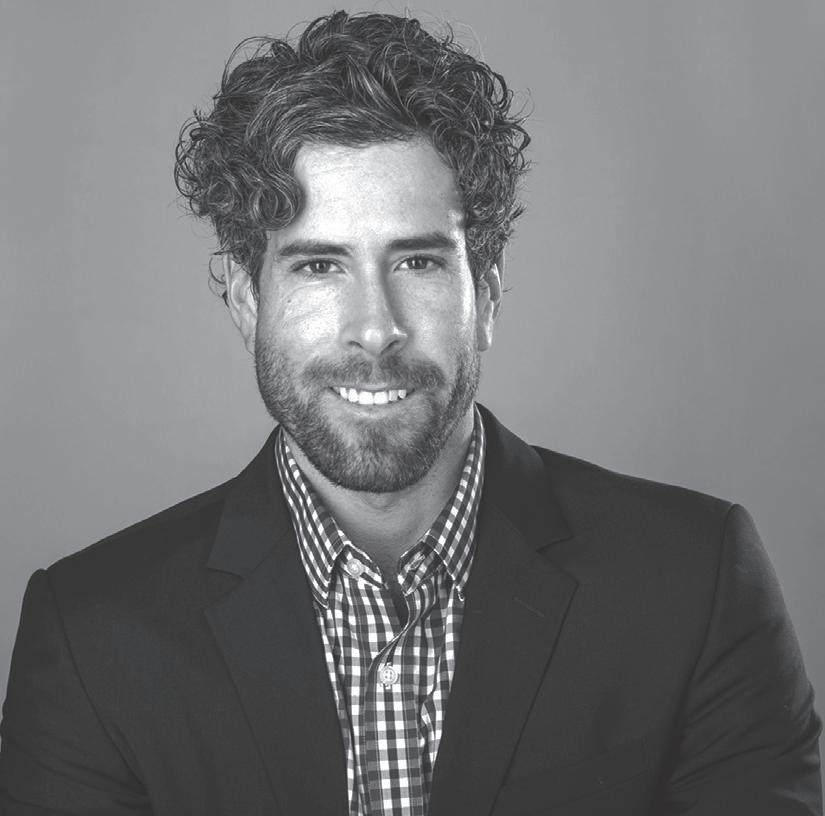

DECEMBER 1 , 2022 25
U
S
E
you
in advising RMOW
on issues related to forestr
wildlife, and commercial and
FOREST & WILDL AND ADVISORY COMMITTEE 2 M E M B E R S H I P O P P O RT
N I T I E
AVA I L A B L
Are
interested
Council
y, wildfire,
public recreation around Whistler?
Resor t Municipality
w h i s t l e r. c a Tim Lischkoff, CPA, CA / tim@gskllp.ca / 604-892-9100 www.gskllp.ca Specializing in accounting and tax ser vices for corporations and their shareholders. Please contact me for an initial no-charge confidential consultation.
Please email applications to lburhenne@whistler ca
of Whistler




















































































































































































































































































































































































































































































































































































































































































































































































































































































































































































































































Pique's Annual PHOTO CONTEST OD E TO ULLR mccooswhistler.ca 604-932-2842 hellyhansen.com 604-932-0143 priorsnow.com 604-935-1923 whistlerbungee.com 1-877-938-9333 canadianwilderness.com 604-938-1616 carambarestaurant.com 604-938-1879 nestersmarket.com 604-932-3545 ziptrek.com 604-935-0001 whistlerskituning.com 604-935-2950 rimrockcafe.com 604-932-5565 quattrorestaurants.com 604-905-4844 CHOOSE SKIS OR BOARD $1,567 in value! $ 730 in value! JACKET AND PANTS FROM THE ULLR D UNISEX COLLECTION
Prior


NINA MOORE
JILLIAN ROBERTS
CONGRATULATIONS
NINA You win...





PRIOR - ski or snowboard of your choice ($1,567 value)




















































Caramba - gift certificate ($100 value)




































































































































































































































































































































































































































































































































































































































































































































































































































































































































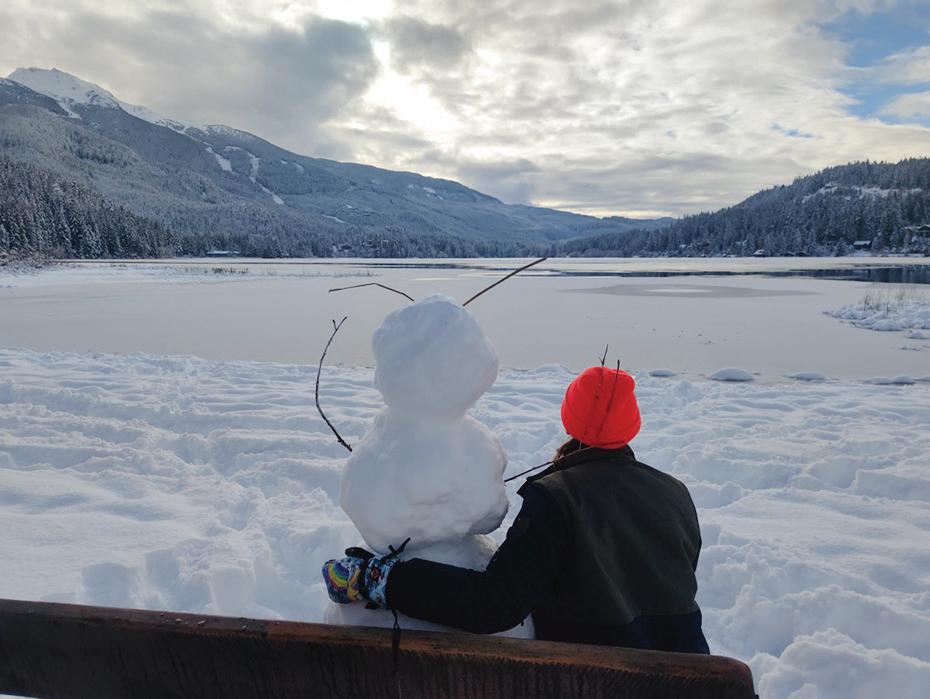






























Quattro - gift certificate ($100 value)


Ziptrek - Eagle tour for 2 ($357 value)


Nesters Market - gift certificate ($100 value)
























Total value of $2,224
Helly
CONGRATULATIONS
Whistler
Thanks to our legendary sponsors and all who submitted some very great photos. It was a difficult choice. You all rock! Bring on the snow Ullr so we may have a stellar season!
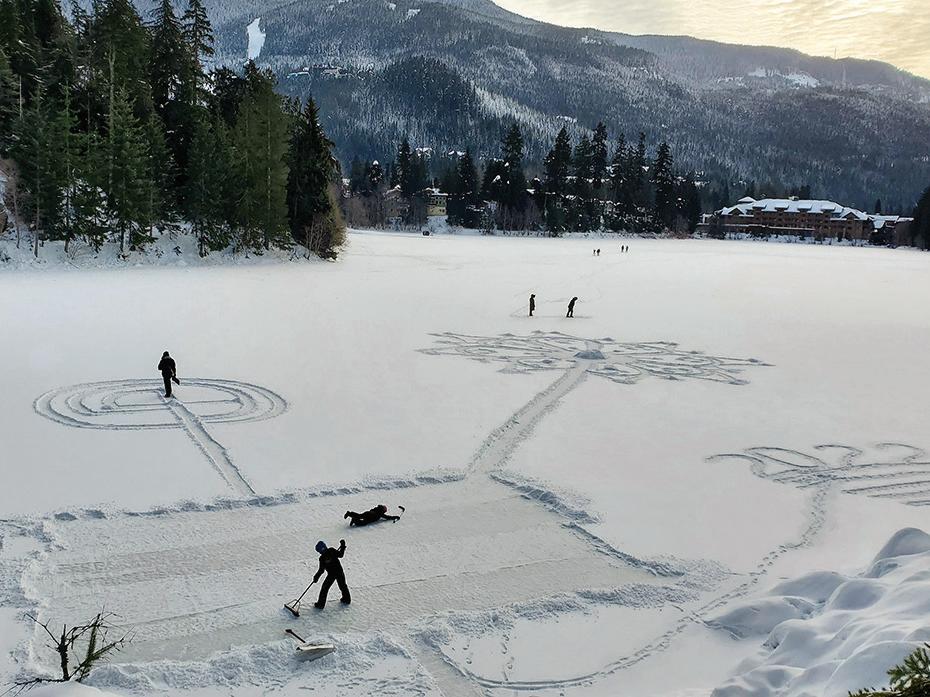
PIQUENEWSMAGAZINE.COM WINNER WINNER
,
s Choice We asked for a snapshot showing Why do you love the white stuff? and show your
and
winter gift in the most fun and creative way.
s Choice Helly,
love
appreciation for Ullr’s
Hansen - ski kit jacket and pants from the ULLR D unisex collection ($730 value)
Canadian Wilderness Adventures - Medicine Trail Snowshoe Tour for 2 ($210 value)
Rimrock - gift certificate ($150 value)
McCoos - Oakley Flight Deck Factory Pilot L with Prizm Sapphire lens ($265 value)
Bungee - pass ($130 value)
Profile Tuning - tuning package ($100 value)
Total value of $1,585
JILLIAN You win...
SLRD moves to adopt affordable housing OCP amendments
FIFTEEN PER CENT OF NEW MULTI-FAMILY HOUSING DEVELOPMENTS WILL BE AFFORDABLE HOUSING IN THE SLRD
BY ROBERT WISLA
FINDING AFFORDABLE housing has long been a difficult task in the Sea to Sky. With some of the priciest real estate on the market, finding a place to live without losing half your take-home pay can be challenging, to say the least.
This problem isn’t limited to the towns and cities of the region, with the corridor’s rural areas facing a similar situation.
Following the adoption of 2020’s provincially mandated Housing Needs Assessment Report, the Squamish-Lillooet Regional District (SLRD) has worked to amend and adopt bylaws to improve the region’s housing situation.


On Nov. 23, the SLRD board gave first three readings to amendments to its Official Community Plan (OCP) bylaws that add a suite of new guidelines and practices to guide the future construction of affordable housing in Electoral Areas B, C, and D.
“Housing is a challenge throughout the province, and the SLRD is no exception,” SLRD communications manager Patricia Westerholm said in an email. “This work lays the important groundwork in providing clear guidelines and definitions for affordable housing while also ensuring equity and diversity in housing–essential work in enhancing the quality of life for future generations.”
The amendments are wide-ranging and include a variety of design guidelines for affordable housing and establish new policies designed to create and maintain affordable housing in the region.
In line with changes made earlier this year to the Whistler Housing Authority’s eligibility criteria, the amendments update the definition of affordable housing in the three electoral areas as rental or ownership housing priced so that monthly payments are less than 30 per cent of gross household income.
The amendments also require new multifamily developments either designate a minimum of 15 per cent of units for affordable housing or provide land for affordable housing. A maximum of 30 per cent of all affordable units can be one-bedroom units, between 30 and 40 per cent for two-bedroom units, and between 20 and 30 per cent for three-bedroom units.
The minimum unit size for affordable units in Areas B and C is pegged at 56 square metres for one-bedroom townhomes and 49 sq. m. for one-bedroom studio apartments, and up to 125 sq. m. for four-bedroom townhomes and 112 sq. m. for four-bedroom apartments.
The new design criteria for multifamily housing projects include guidelines for neighbourhood character to ensure new developments fit in with the look of existing neighbourhoods, as well as for setback conditions and landscaping.
The SLRD said the applicable housing will remain affordable in perpetuity through purpose-built rentals, cooperative housing, title restrictions, covenant, and rental and resale price controls.
The regional district said it plans to encourage affordable, multi-family housing through BC Housing’s Affordable Home Ownership Program, which provides eligible buyers with an approximately 10-per-cent interest-free second mortgage towards the purchase of their home.
ARE MOBILE HOMES THE ANSWER?

Recognizing mobile home parks as valuable contributors to the affordable housing base in the electoral areas, the amendments update existing policy so mobile home parks can be considered in areas designated as rural residential.
Rural residential areas of the SLRD include most properties along Pemberton Portage Road, the Lillooet Lake Estates, and a handful of properties surrounding Pemberton and Mount Currie. Currently, the SLRD only has one 29-unit trailer court in the Pemberton Meadows.
Area C director Russell Mack believes numerous locations throughout the electoral area could house such a potential housing development.
“With the way modular homes or mobile homes are constructed nowadays, if it’s done correctly, I think it’s a really good way to go,” Mack said of mobile home parks’ potential for the region.
“There are lots of areas throughout this corridor, from Mount Currie to D’Arcy. They’ve all been geo-teched a number of years ago, so you have a pretty good idea of where it would be safe to put one of these [mobile home parks]. You just need a big enough piece of land so that you’re not crowding them up, and you could do a really nice project.”
“You’re not going to have them all over the place, but you could definitely put one in between, say, WedgeWoods and Pemberton. There are spots there that you could probably put one in.” n
NEWS PEMBERTON
HOUSE CALL The SLRD is set to adopt new policies aimed at encouraging the development of more affordable housing. WedgeWoods, north of Whistler, is pictured.
28 DECEMBER 1, 2022
PHOTO BY ROBERT WISLA




DECEMBER 1 , 2022 29 WELCOME TO THE NEW PRIOR. CHANGE STARTS NOW. www.priorsnow.com C ome Home
RC
t o PA
725 2 2nd Stre et
West
6 0 4.9 2 2 .9 8 8 8 “ L i fe is shor t. So for heaven’s sa ke, enjoy it.”
Ac cording to Jack, there’s nowhere more like home than Westerleigh PARC, and the other residents agree, adding that Jack is a big par t of what makes things so homey When he’s not dressing up, enter taining and cheering ever yone on, he can be found at the gym, running the cribbage club, making his own custom rugs or plunking away at the piano Discover reasons to come home to Westerleigh PARC: parcliving.ca / home
,
Vancouver,
Be Searchable
LAST COLUMN, I covered the evolution of avalanche transceivers. This time I’ll look at something related, far more ubiquitous, and which, until a fortuitous confab in Squamish with Helly Hansen and its search-and-rescue (SAR) partners this fall, I knew almost nothing about: the RECCO system.
 BY LESLIE ANTHONY
BY LESLIE ANTHONY
To begin, imagine the Holy Grail for SAR organizations: to make more people more searchable, and that this has become imperative with the explosion of backcountry travel. As it turns out, this was RECCO’s mission from the outset and, like the transceiver story, it started with an avalanche.
On Dec. 30, 1973, Magnus Granhed witnessed an avalanche in the ski resort of Åre, Sweden. No one had rescue equipment at the time, but after hours of random searching and digging, two bodies were uncovered. One turned out to be Granhed’s friend, and he
couldn’t help but think there had to be a faster way to search for victims. Convinced the answer was in electronics, and working with engineers at the Swedish Royal Institute of Technology, they hit on the idea of using harmonic radar, in which a signal sent from a device at one frequency bounces back at double the frequency from a reflector source; the reflector would be on a buried person, and the sender-detector held by the searcher. By the early 1980s, they had a handheld detector prototype—the R1. At 16 kilograms, it was cumbersome and had a range of only a metre, but things moved quickly from there.
One of the system’s first demonstrations was in 1982 in the Austrian Tyrol, with media, avalanche specialists and SAR folks on hand. Feedback was encouraging enough that RECCO was founded as a company the following year, introducing its first small, attachable reflectors to the market. In 1984, Trappeur ski boots (later bought by Rossignol), became the first brand to integrate RECCO reflectors into its product; in 1986, French steep-skiing pioneer Patrick Vallençant’s Degre7 was the first clothing brand onboard, while Swatch added reflectors to its popular outdoor watches with the tagline “Fun and Safety.” In 1992, working with NATO, the company equipped the Norwegian Armed Forces.
Today, the detector is barely a kilo, has a 20-metre range, and some 2,200 reside with 900 ski resorts and rescue organizations in 28 countries worldwide. Intended as a complement to avalanche beacons, probes, and rescue dogs, ski patrols also put them in the nose cones of avalanche bombs so they can more readily find unexploded ordinance, and athletes competing in the Freeride World Tour are equipped with reflectors as part of their mandatory safety gear.
OVERBECK
By that point, the R1 was long gone, with new iterations following the arc of technology to become smaller, easier to carry and more accurate. By 1995, the detector unit had been reduced to 1.6 kg, and in 2009 could search both RECCO reflectors and avalanche transceivers.
The passive transponders—four grams each, no battery, unlimited lifetime—are now incorporated into the products of 150plus outdoor brands, including helmets, pants, backpacks, climbing gear, jackets and boots. Helly Hansen has been a strong RECCO supporter for 15 years, and while it has practical reasons for working with SAR teams (for instance, several of its technical jackets were developed with insights from Squamish Search and Rescue) the RECCO association is more egalitarian: Helly is on a mission to make everyone in the outdoors searchable, encouraging other brands to get onboard. In 2018, RECCO introduced its own consumer products—including a belt and freestanding reflectors to stick on various pieces of gear. Because detection is aided by the angle of the transponder, the more you have on you, the more detectable you are. And why does that matter? Because now it’s not just about finding someone buried in an avalanche, but lost in the wilderness in any season.
While Air Zermatt SAR got involved
in 1983, and RECCO’s first live-recovery occurred in 1987 in Lenzerheide, Switzerland, when a missing woman was found by a searcher carrying a RECCO unit while riding in a helicopter, RECCO’s first dedicated SAR Helicopter Detector wasn’t introduced until 2015. Designed for use by any SAR group that has flight capability, the detector is hung below a helicopter and has Bluetooth autonomy with a reader in the aircraft. Austria is the first country to be fully covered by the system, and Switzerland, Italy, Sweden and Norway aren’t far behind. There are currently 30 units deployed worldwide, with one in Alberta and three in B.C.—including North Shore SAR—poised to change the backcountry search game. With the unit suspended 100 metres above a landscape, the heli can run a grid search covering a 100-metre wide swath at 100 kilometres/hour—about 30 football fields per minute. Thinking dense trees might be a problem, North Shore SAR ran a demonstration in a place notorious for thick trees—Lynn Canyon. The successful shakedown proved useful: in March 2020, a hiker missing for six days near Lion’s Bay was located in avalanche debris using the helimounted RECCO unit. Although this instance was a body recovery, it proves the potential for locating any lost individual wearing a RECCO reflector when conventional means (cell-phone signal, trip-plan details) aren’t available. Basically, an inexpensive way to locate anyone and everyone—Granhed’s mission from the beginning. ■
 SEARCH PARTY The RECCO system uses harmonic radar to bounce a signal off of a reflector source, and has evolved into an essential tool for SAR crews.
SEARCH PARTY The RECCO system uses harmonic radar to bounce a signal off of a reflector source, and has evolved into an essential tool for SAR crews.
30 DECEMBER 1, 2022
PHOTO BY MICHAEL
/ HELLY HANSEN




DECEMBER 1 , 2022 31 cvcustombuilders.ca connect@cvcustombuilders.ca Custom Homes • Renovations • Project Management VISIT US AT THE CARLETON LODGE IN WHISTLER VILLAGE TERRAIN 432,000 acres & 173 glaciers with exclusive rights to most of the glacial terrain in the region VARIETY Various package types to suit your needs utilizing 5 and 10 passenger helicopters EXPERTISE Our guides are fully certified with decades of experience in B C ’s coastal mountains 604.905.DEEP (3337) whistlerheliskiing.com THE PINNACLE OF WHISTLER’S SKIING EXPERIENCE OVER 50 TIMES THE AREA OF WHISTLER BLACKCOMB WITH AN AVERAGE OF 50 SKIIERS & RIDERS A DAY P: Andr e w S t r ain CLASSIC CANADIAN HELI-SKIING OPENING DATE: DECEMBER 6, 2022
very year, hundreds of people are hired across British Columbia to fight wildfires in the peak of summer’s sweltering heat. Months spent digging trenches, attacking the fires with helicopters, bombers and hoses.
It’s a vital job that is becoming even more critical as British Columbia continues to face more frequent and severe wildfires due to the worsening effects of climate change.
Yet, in some ways, battling the blaze is the easy part of the job. In recent years, there has been a broader understanding of another, less visible battle first responders such as firefighters, paramedics and law enforcement also must fight: the heavy mental and emotional toll that can come with a career on the frontlines.







An estimated 70,000-plus first responders in Canada have experienced PTSD in their lifetimes. Canadian first responders experience PTSD and critical incident stress at double the rate of the general population, which can lead to increased work absences, burnout, illness, and high turnover rates.
Firefighters, specifically, are exposed to significant trauma at work, and are generally not taught skills that will help them protect their mental health, according to the Canadian Association of Mental Health, which contributes to higher frequency of mental illness and a rate of suicide among firefighters that is 30-per-cent higher than the general population.















Recently, a BC Wildfire Service firefighter who used to live in Whistler reached out to discuss his experience of being injured while in the line of duty—and the lack of support he said he felt from his employer.
Pique has agreed to withhold the firefighter’s real name so he can discuss the matter freely, after he signed a non-disclosure agreement with the provincial government.
For over a decade, John spent every season fighting fires. It was challenging work that brought him to nearly every corner of the province—and he loved every bit of it.
FEATURE STORY 32 DECEMBER 1, 2022
John worked on initial attack crews in Hope down to the stunning peaks of the Purcell Mountains in the Kootenays. John saw it all, but his life changed one unfortunate day.


John and a motley crew of firefighters were dispatched to fight a small but rapidly growing fire on a mountainside near Kootenay Lake in late August 2018.
Then, disaster struck.


“At the end of a long day, I was walking alone on top of a ridge, and the ground gave out underneath me,” John explains.



“My 30-pound backpack was still strapped on my back, and I had my chainsaw in one hand. I started tumbling like a tomahawk, with the weight of the pack [pulling me down], and eventually, I stopped by smashing my head against a tree.”
Battered and bruised, John sat for a few minutes, trying to get his bearings. He knew right away he had suffered a concussion. Still conscious but in shock, John made his way back up the hill to his crew, vomiting a few times along the way.

At that point, John didn’t know the full extent of his injuries—but he knew they were bad. “When I got back to base, my right knee was the size of a grapefruit, and you could see it through my pants,” he remembers.
John agreed to stay on the job and assist on the radio, while taking it easy on his injuries, a decision he now regrets, noting he should have sought hospital attention immediately.
“I felt like an idiot because I’m so passionate about my job. I returned to help and agreed with one of my officers and crew leader that I would remain on duty and assist the two firefighters on the radio,” he says.

“I would stay in my hammock, with ice packs that we put into the creek, and take care
and B.C.’s Workers’ Compensation Board (WCB), John’s case proceeded to a worker’s compensation tribunal that ultimately resulted in him winning the case, getting recognition for the damage to his knee and mental-health issues.
His mental health had declined substantially during rehabilitation and the long WCB claim process. “I developed severe depression and anxiety from all that and losing my job and everything I loved doing,” John says.

Following the workplace accident, John says he struggled finding suitable work and now relies on disability payments to survive. Initially, he had a chance to re-train as a truck driver, but his concussion symptoms prevented him from taking on the new opportunity.

“That’s when I reached my mental limit. I reached the bottom, and if I went down with that, I would have ended up doing something stupid.” John says. “I can’t work more than two days a week in a noisy environment. So the rest of the time, I’m at home and try to do as best as I can.”
“My mental health took a big hit over the last four years,” John adds. “From working and being passionate about a job and then when something goes wrong, realizing that no one is there for you, except for the union.”
While John continues to deal with the pain from his workplace accident, he is still at it, working as a carver and leatherworker, one of his hobbies before the injury.


John’s story is just one of many, as first responders in British Columbia continue to deal with mental health injuries at an alarming rate.


Statistically, first responders are much more likely to all deal with depression, acute stress disorder, operational stress injuries and posttraumatic stress disorder (PTSD).

According to the Centre for Suicide Prevention, first responders are two times as likely to experience PTSD compared to the general population, with paramedics having the highest estimated level of PTSD of any profession, at 22 per cent.

The number of mental-disorder claims from first responders is on the rise as well. According to WorkSafeBC, between 2019 to 2021, there were 1,705 accepted mentaldisorder claims across all eligible occupations. Broken down further, paramedics topped that list, at 521 successful claims between 2019 and 2021; followed by nurses (443); correctional officers (276); firefighters (170); emergency response dispatchers (127); health-care assistants (80); and police (88).
of myself for the last three days of that fire while people were taking days off.”
Two days after his injury, John finally made it to a local emergency room, and it didn’t take long before the doctor signed the appropriate papers to send him home from the job. Once back home, his long battle with mental health would truly begin.
John spent years working through rehabilitation along with a long, complex worker compensation claim process that brought its own toll on him mentally as he struggled to get each of his injuries recognized.



After two years of battles between the BC General Employees’ Union (BCGEU), the union representing wildfire fighters,

In 2021, 6,352 mental disorder claims were made province-wide across all sectors, with 2,325 accepted.
Over the past several years, the provincial government has amended the Workers Compensation Act to make another additional eight professions—including firefighters, correctional officers, paramedics, police officers, healthcare assistants and nurses— eligible for presumptive mental-disorder claims. The changes mean that presumptive illnesses under the Workers Compensation Act can be recognized as being caused by the nature of the work, rather than having to be proven to be job-related in order for employees to access supports.

FEATURE STORY DECEMBER 1, 2022 33 C E L E B R AT E TO G E T H E R E xperience the difference B E T TE R he aring m ake s . Work Safe BC and other Provincial WCB Net work s, VAC, MSDPR , and FNHA /NIHB accepted. Re gis tere d under the Colle ge of Sp e e ch and H earing H ealth Professionals of BC ne xg e nhearing .com PE M B E R TO N 604. 815.0808 3 7438 Prospec t Street ( Tuesdays 9am 5pm) N E W LO C AT I O N J o s h C ra n e 6 0 4 9 0 2 6 1 0 6 | j o s h @ j o s h c ra n e c a w h i s t l e r r e a l e s t a t e m a r ke t c o m 120 4090 Whistler Way Whistler B C V8E 1J3 First time to market! Built by Durfled Constructors this post and beam mountain home including a 1 5 bed suite above a 3 bay heated garage is ready for you and your family to enjoy Located in Whistler ’s prestigious neighbourhood of Green Lake Estates/Nicklaus North Golf Course, 8060 Nicklaus North Blvd is for the discerning buyer who appreciates quality craftsmanship and location This immaculate home sits just across the 1st hole tee boxes and only a few steps away from the iconic Nicklaus North Clubhouse Zoned for nightly rentals this home offers the flexibility to generate revenue when not used personally 8 0 6 0 N I C K L A U S N O R T H B LV D . G re e n L a k e E s t a t e s Ni c k l a u s No r t h 5 bed • 5 bath • 3618 sqft SOLD!
Tackling the mental-health struggles inherent to these frontline professions is a difficult task.
According to Fire Chiefs’ Association of BC president Dan Derby, the fire service is “doing a lot of work to create mental-health resiliency to help firefighters understand the unique psychological challenges facing firefighters in our province,” he says.
“We hope this will reduce the shame and stigma of psychological challenges facing our firefighters.”

Dr. David Kuhl is one such person helping first responders mitigate the on-thejob impacts to mental health. A professor in the Departments of Family Practice and Urologic Sciences at the University of British Columbia, Kuhl primarily focuses on men’s mental health and has worked closely with veterans, first responders, and men with cancer. Along with fellow doctors John Izzo and Duncan Shields, he is also the co-founder of Blueprint, a non-profit aimed at improving men’s well-being and enhancing their positive contributions to their communities.
Blueprint has worked with B.C. first responders to create resiliency programs, such as the BC First Responder Resiliency Program, designed to help people deal with mental health and develop blueprints to move forward with their traumatic experiences.
“Basically, what we’re looking at is to enhance the integrity and well-being of men for the value of families, community and the globe,” Kuhl says.
Kuhl got involved in the project because he recognized working collectively with first responders in greater numbers would have a more significant impact than he could achieve on a patient-to-patient basis.
“Our goal is to equip first responders to diminish the possibility of trauma and direct them toward appropriate interventions if they’ve experienced trauma,” he explains.
The program offers a four-day retreat held at Loon Lake, near Maple Ridge, where firefighters dealing with mental health issues can come together to work through their trauma.
Developed through firsthand interviews with firefighters about their own challenges with mental health, the program has been adapted over the years in an iterative process until it had the desired outcomes, both clinically and statistically.
“We haven’t done a qualitative study about the impact of this program, but word of mouth is getting back to us now about how much it’s changed the lives of individuals, their families,” Kulh says.
“They will say it’s also contributed to changing the culture within the fire halls and fire departments, and those haven’t been measured,” he adds.
Kuhl believes the number of mentalhealth claims in B.C. has increased recently because the WCB has made claims more accessible—but there still needs to be more supports available for first responders at the ground level.
“I think the compensation board has done amazing things in the last year to make intervention and treatment available for people,” Kulh says. “I think part of the reason the numbers have gone up is because they’ve re-examined what the criteria necessary for people to qualify are, so they’ve greatly
improved their response to the need.”
“Yet it’s not enough from my point of view. Every municipality and city should have a budget item for intervention and prevention to provide the care that first responders need.”
According to Bob Parkinson, director of health and wellness for the Ambulance Paramedics and Emergency Dispatchers of BC, more organisations must invest in ongoing mental health programs instead of the current BandAid solution.
“I think we have to do more; everything you and I are talking about right now is [postcare]. So we’re already injured and trying to pick up the pieces,” Parkinson says.
“We have to get ahead of this; there has to be better training. I heard this from a military mom who lost her son. And her statement was, ‘We have to put as much money and effort into helping these people as we do into training them to do their job,’ and I agree.”
Parkinson believes there needs to be more education upfront so that people understand the potential impacts waiting for them on the job, as well as the resources available to them.
Waiting for support until a first responder’s mental health has become a concern is already too late, says Parkinson, arguing for a more proactive approach.
“We have to put a lot of effort into keeping them safe, and I think we’re starting to do more, but we have to go beyond that,” he asks.
“How do we help them when they’re injured? The discussion is, how do we keep them from being injured if possible, and how do we get them the needed resources?”
“We still don’t have enough clinical support or psychoeducation to help our first responder community.”
According to Parkinson, roughly 30 per cent of the B.C. paramedics and dispatchers
the union represents are seeking assistance with mental health, resulting in hundreds of instances of time-loss.
The mental-health stress on paramedics is compounded by an ongoing staff shortage across much of the province, exacerbating the length of shifts and increasing burnout among staff.
Parkinson believes the provincial mental health benefit paid to paramedics needs to increase as well. Currently, paramedics are eligible for up to $100 a year in reimbursements for psychological services, lower than their counterparts in police and fire services, and not near enough to stem the tide of on-the-job challenges.
“Right now, our resources are so low,” he says. “Paramedics get $100 in mental health benefits in the extended program. That’s 20 years old, antiquated, and doesn’t meet anybody’s needs.”
this. All of the fires that we had in 2021, many of which were very serious. We’re directly involved in communities, which elevates the stress and pressure on our staff.”
With a drawn-out fire season and disasters like last year’s atmospheric river floods placing added demands on the BC Wildfire Service, personnel now typically have less recovery time after being out in the field, another factor contributing to heightened attrition and burnout levels within the force.
“The other element that we’re seeing very clearly, possibly due to climate change, is that the fire seasons are just longer, so there’s less time to recover,” Lemon says.
“The expectations on the firefighters are expanding as the seasons get longer, and then as an organization, we’re going down the road of what we’re calling ‘365 response.’”
During the 2021 season—the most extensive and damaging fire season in the province’s modern history—the loss of time over mental health overtook the number of days off from traditional injuries, Lemon says.
“Mental health is one of the leading causes of time-loss injury. So it’s outstripping slips, trips and falls. It’s outstripping strains and sprains. Which is fascinating to see,” he notes.
Fighting wildfires so close to—or in— the communities where some firefighters actually reside added another layer of stress for firefighters, especially when they had to evacuate friends and family.
“Some of our staff were directly involved when Lytton was burning. The fire department left, and our staff were there trying to evacuate people and were really struggling because of it,” Lemon says.
“That’s a very hard thing to do. They were attached to the community and saw their friends’ and families’ homes burn. Honestly, it had a big impact on them.”
Since John experienced his accident, mental-health resources within the BC Wildfire Service have expanded, including additional staff specifically added to assist with the issue and a telephone counselling service for firefighters and their families to use.
“That’s been a real game-changer so that there’s a clear line [through which] you can talk to a counsellor that is contracted within our organization,” Lemon says.
Additionally, the service is working with the Canadian Mental Health Association to deliver a program called Resilient Minds, designed to help firefighters build psychological strength and a peer support network.
According to Steve Lemon, superintendent of safety and well-being at the BC Wildfire Service, with the fire season stretching longer each year due, primarily, to the effects of climate change, firefighters’ mental health concerns are being exacerbated along with it.
“It’s certainly something we have become more conscious of following 20172018, two historically large fire seasons back to back. Certainly, we acknowledge that many of our staff were suffering and struggling,” Lemon relays.
“We clearly saw that people were struggling to return to what would be considered normal for them. So we’ve implemented a number of programs to try to support staff, but certainly, we’re seeing that fires are more complex.”

“They’re more difficult or more likely to be working in and around communities,” he adds. “And certainly, 2021 emphasized all of
For Lemon, tackling mental health at the BC Wildfire Service is as urgent as ever, as he knows six wildfire fighters over his career who took their own lives—including a suicide that happened earlier this year.
Still, he believes the culture within firefighting is changing, and people are more open to talking about mental health.
“The culture has changed. Everyone is more conscious and aware of mental-health issues. I’ve been in the fire service for almost 30 years, and the transition has been really evident, and a lot of that has happened in just the last three or four years,” he says.
“It very much used to be that sort of suckit-up, keep-working [culture]. ‘Don’t talk about your problems. Just be quiet and keep working.’ And culturally, that’s changed outside and inside our organization.”
- With files from Harrison Brooks ■
FEATURE STORY
34 DECEMBER 1, 2022
COURTESY OF BC RESPONDERS
N OT I C E O F B U S I N E S S L I C E N C E A N D R E G U L AT I O N BY L AW A M E N DM E N T












Business Licence Amendment Bylaw (Cannabis Retail)

No. 2373, 2022 (the “proposed Bylaw”)

Purpose: The purpose of the proposed Bylaw amendment is to include an additional application requirement for a cannabis retail store business licence.

Bylaw Adoption: Council gave the proposed Bylaw first, second and third readings on September 20, 2022 Council will consider adoption of the proposed Bylaw at the Regular Council Meeting on December 6, 2022
To learn more: A copy of the proposed Bylaw is available for review from November 24, 2022 to December 6, 2022 at:
• Municipal Hall at 4325 Blackcomb Way, Whistler, BC , during regular office hours of 8:00 a.m to 4:30 p.m., Monday to Friday (statutory holidays excluded)
• Online on the Resor t Municipality of Whistler (RMOW) website at: whistler.ca /Bylaw2373



Members of the public who believe they are affected by the proposed Business Licence Bylaw may provide written submissions to Council prior to adoption.
Written submissions will be accepted up to 3:30 p.m. on December 6, 2022 If you wish to make comments to Council on the proposed Bylaw, please email: corporate@whistler.ca
Resor t Municipality of Whistler whistler.ca/Bylaw2373
Andrew Micheal Constantine Tjelios “SEGA”
March 2nd, 1960 - June 14th, 2022
It is with heavy hear ts that we announce the sudden passing of Andrew Tjelios on the morning of June 14th with his sister and father by his side.
Born in Montreal, Quebec Andrew is sur vived by his parents Carmen and George, his sister Anastasia, his nieces and nephew, Nina, Bianca and Patrick (Niamh) Duval
Coming from an avid skiing family, Andrew hit the slopes at 2 yrs old. Upon graduating from CÉGEP he opted to take his CSIA ski instructor cer tification and began teaching at Mount Tremblant for several years before commiting to the family fur business. Like many young men a love interest took him to Toronto where he worked for Sega in the gaming industr y However, his passion for skiing never subsided and in 1994 he joined the Blackcomb ski school becoming an inspirational and well respected ski instructor until his recent passing.
Andrew could often be found sharing apint with friends or guests at Merlin’s for Après, sharing ski tips and anecdotes. No matter where or who he was with His smile and his raconteur gift for telling a joke will always be remembered.

His kind hear t and thoughtfulness touched many No words can express our gratitude for the heroic effor ts of the Pember ton ER nurses Suzi and Stephanie, paramedics and Doctors.
Please join us with your memories and stories of Andrew at a celebration of life to be held at Merlin’s on Tuesday, Dec 6th, 2022 from 4:00-8:00 PM
Donations to Sea to Sky Community Ser vice and the Pember ton Food Bank in his name will be greatly appreciated.
DECEMBER 1 , 2022 35
Only have time for a 5 minute read? Never miss a local story again Get all the local headlines in your inbox every day! Scan the QR code to receive your daily newsletter
IBSF World Cup action returns to Whistler at a pivotal moment for sliding sports
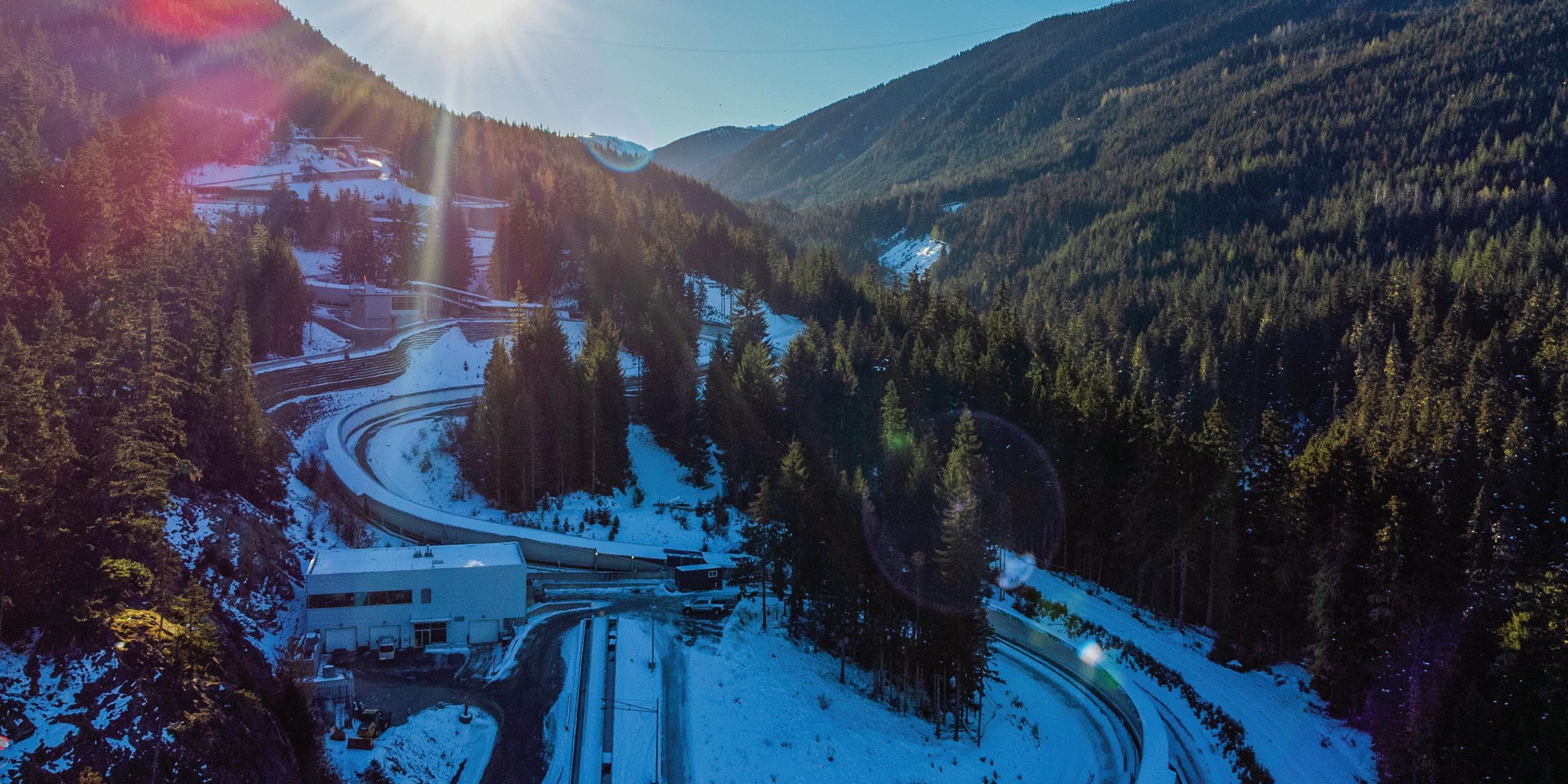
CANADIAN
BOBSLEIGH, SKELETON
BY DAVID SONG

AND LUGE ATHLETES HOPE TO REBUILD MOMENTUM AFTER DRAMATIC CHANGES AT BOBSLEIGH CANADA SKELETON
MIRELA RAHNEVA didn’t perform her best at the International Bobsleigh and Skeleton Federation (IBSF) World Cup opener on Nov. 24, but she knows the real victory is having world-class races back in Whistler.
A two-time Olympic skeleton athlete, Rahneva can hold her own against the best, as evidenced by her fifth-place result at the 2022 Beijing Winter Games. Last week she finished
seventh, clocking the ninth-fastest opening run time and the fifth-best second run for a combined time of 1:47.99. Fellow Canadian Jane Channell placed eighth, as Germany’s Hannah Neise prevailed with a time of 1:47:40 in the first women’s skeleton event of the World Cup season.
“It would have been nice to start the season on home ice with a medal,” said Rahneva. “Sometimes you train really well, and you get in your head about it on race day.”

Still, the 34-year-old is taking things in stride. After all, she and her teammates have come a long way just to race in Whistler again.
On Nov. 5, former Bobsleigh Canada Skeleton (BCS) president Sarah Storey announced she would not run for a third term at the BCS annual general meeting. Storey is a controversial figure in BCS
circles, with many current and former athletes accusing her and high-performance director Chris Le Bihan of fostering a toxic culture within the organization—both of whom reportedly walked out of the heated annual meeting in Calgary before members had a chance to vote. Storey would likely have been voted out by the group of 90 Canadian sliders at the meeting if she had not vacated her position.


Wholesale changes took place. Sport physiologist Tara McNeil was elected the new president by acclamation, while Matt Stapley joined the board as a director at large. Rahneva and bobsled pilot Cynthia Appiah became the athlete representatives for their respective sports.
“Tara McNeil…is very athlete-centric. She is very caring of how the athletes are doing,”
Rahneva said. “In order to perform at a high level, you have to have the foundational blocks of health and well-being laid out first. So, she’s very understanding of that.
“Then we have Matt Stapley, who has a very great business background and business acumen. We’re hoping that we get BCS rebranded, and we attract more sponsorship dollars. It’s incredible how much we rely on the government for our sponsorship dollars. And we need to expand on that.”
Even with new leadership in place, many sliders appreciate the importance of taking matters into their own hands, including veteran bobsledder Chris Spring. A four-time Olympian who has piloted for both Canada and his native Australia, the 38-year-old has previously put some of his concerns with BCS on record.
SLIP AND SLIDE IBSF World Cup action has officially returned to the Whistler Sliding Centre at a pivotal moment for sliding sports in British Columbia.
SPORTS THE SCORE 36 DECEMBER 1, 2022 Get your new edition in hotel rooms and select locations around Whistler. NEW WINTER WHISTLER MAGAZINE IS OUT! /whistlermagazine
PHOTO COURTESY OF IBSF
“I think we realized that if we want to make change in the organization, we can’t just rely on the federation to steer us in the direction that we want to go,” he said. “We have to take control of the ship ourselves.”
Recently retired pilot Justin Kripps, who won two-man gold at the 2018 Winter Olympics and four-man bronze in Beijing earlier this year, appreciates that sentiment. He thinks that consistent, genuine cooperation between BCS and its athletes will be vital going forward.
“You can’t put all the accountability on the program. You can’t put all the accountability on the athlete,” Kripps said. “There has to be a balancing and collaboration there. And that’s how you end up with massive successes, Olympic medals and that kind of thing.”
Rahneva is more than willing to help close the gap between competitors and decision-makers. She and Appiah have a rare opportunity to advocate for their compatriots while still racing actively—and thus being in tune with issues facing Canadian skeleton athletes and bobsledders today.
“A hundred per cent, we’re representing the athlete’s voice,” said Rahneva. “I don’t think we’ve ever had two athlete reps that are currently competing, that are very much there in the thick of it. We’re going to be communicating to the board exactly what’s going on and what athletes need.”
Others have stepped up in ways big and small. Kripps considered leaving bobsleigh entirely after his retirement, but instead stayed with BCS as a technical coach. Spring works at the Whistler Sliding Centre as a youth coach and forerunner, testing the track before races. Bobsled brakeman Cyrus Gray raised awareness for November’s competitive events
demolished. Whistler’s is famously the fastest track in the world, with four-man bobsleds topping out at 157 kilometres/hour, and it carries a rich Olympic legacy dating back to Vancouver 2010.




“Anytime we get international competition [in Whistler], it’s a great chance to highlight Canadian sliding sports,” said
 - CHRIS SPRING
- CHRIS SPRING
by making posters himself.
Kripps hopes that through coaching, he can help young bobsledders enjoy the sport as much as he did in his 16-year career. “I realized that it was a bit sad for me to see all these athletes having a negative experience,” he said. “That wasn’t the experience that I’d had. I’m trying to stick around and do whatever I can to [make it more likely] that people will have the kind of experience I did.”
Meanwhile, Spring wants people to know that he and his fellow bobsledders are not— and have never—been in it for the money.
“We lose money doing this sport,” he acknowledged. “It takes its toll on our bodies and social lives. People put their education and families on hold. We do it because we love it, and we want to showcase that to people as well.”
The Whistler Sliding Centre is an ideal showcase for Canadians, especially these days with Calgary’s WinSport sliding facility being

Appiah, who won silver on Nov. 25 in women’s monobob. “Hopefully we can get more international races here: more World Cups, more World Championship races.


“Bobsleigh is such a beautiful sport and our sister sports of skeleton and luge only seek to benefit when we have more races here.”
Ultimately, Rahneva is hopeful that groundwork has been laid for Canadian sliding to build momentum going into the 2026 Winter Olympics. As an athlete, she wants to win but is primarily focused on enjoying every moment of the season. As an advocate, she looks to keep a healthy perspective.

“[Appiah and I] will do our best to bring forward all the concerns that athletes have, but also the positive change that athletes see,” Rahneva said. “Obviously there’s things to work on, but it’s also important to recognize the positive stuff that’s been going on.”
For race results throughout the season, visit the IBSF website. n
SPORTS THE SCORE
is one of Bobsleigh Canada Skeleton’s new athlete representatives
her respective sport, part of a recent personnel
at the
DIRECT REPRESENTATION Two-time Olympic skeleton competitor Mirela Rahneva
for
shakeup
organization.
PHOTO COURTESY OF BCS
“I think we realized that if we want to make change in the organization, we can’t just rely on the federation to steer us in the direction that we want to go.”
DECEMBER 1, 2022 37 Specialized Spor ts Physiotherapists Advanced Manual Therapy • IMS and Dr y Needling Concussion Treatment and Rehabilitation • Osteopathy Custom Or thotics • Custom Splinting Cer tified Hand Therapy nting ‘we keep you playing’ 604 962 0555 www back inactionphysiotherapy com PHYSIOTHERAPY To find out more visit: seatoskykin.ca To book a consultation • Email: info@creeksidehealth ca • Call: 604.962 2447 Follow on Instagram: @seatoskykin Katie
BSc(Hons)Kin, Dip(RA) Registered Kinesiologist, Rehabilitation Specialist and Certified Pilates Instructor Helping you live a more active life Kinesiology Services Including: Active Rehabilitation • Performance Training Injury Recovery Strength & Conditioning • Athletic Taping NOW OFFERING PILATES SESSIONS
Sandrin
Team Canada captures historic four-man bobsleigh bronze in Whistler
VANCOUVER ISLANDER CYRUS GRAY PLACED THIRD WITH TAYLOR AUSTIN, DAVIDSON DE SOUZA AND SHAQUILLE MURRAY-LAWRENCE
BY DAVID SONG
FIVE YEARS AGO, Cyrus Gray wasn’t sure he had a future in high-level sport after his college basketball dreams ground to a halt. Today, the Duncan, B.C. native can call himself a World Cup bronze medallist—just not in the sport he grew up playing.
Gray helped fellow brakemen Davidson de Souza and Shaquille Murray-Lawrence power their pilot, Taylor Austin, to third place on Nov. 26 at the International Bobsleigh and Skeleton Federation (IBSF) World Cup season opener. Notching a combined time of 1:42.37, they became the fourth Canadian quartet ever to win a bobsleigh World Cup medal at the Whistler Sliding Centre.

Last Saturday’s bronze is also the first World Cup medal that Gray and his teammates have ever achieved, and they’re over the moon.
“Man, it was great,” said Gray, who celebrated his 28th birthday just one day after the victory. “I had three hours of sleep [the night before the race], you know. Nerves got to me a little bit, but I’m happy to see that we pulled out the bronze. Our boy Taylor drives this track real well.”
Austin, 32, lit up the Whistler venue to open the four-man competition. He and his
brakemen threw down an opening run of 51.09 seconds, fast enough for second place after the first of two heats. Their second run was only marginally slower at 51.28 seconds, but two-time Olympian Brad Hall of Great Britain managed to leapfrog the Canadians for silver, with a total time of 1:41.98.
No bobsleigh fan was surprised to see perennial German powerhouse Francesco Friedrich come out on top yet again. Two sub51-second runs gave him a clocking of 1:41.56 and his 42nd career World Cup win in fourman bobsleigh. Friedrich has been the ultimate standard in his sport for over a decade, with four Olympic and seven World Championship golds to go with 104 total World Cup medals.
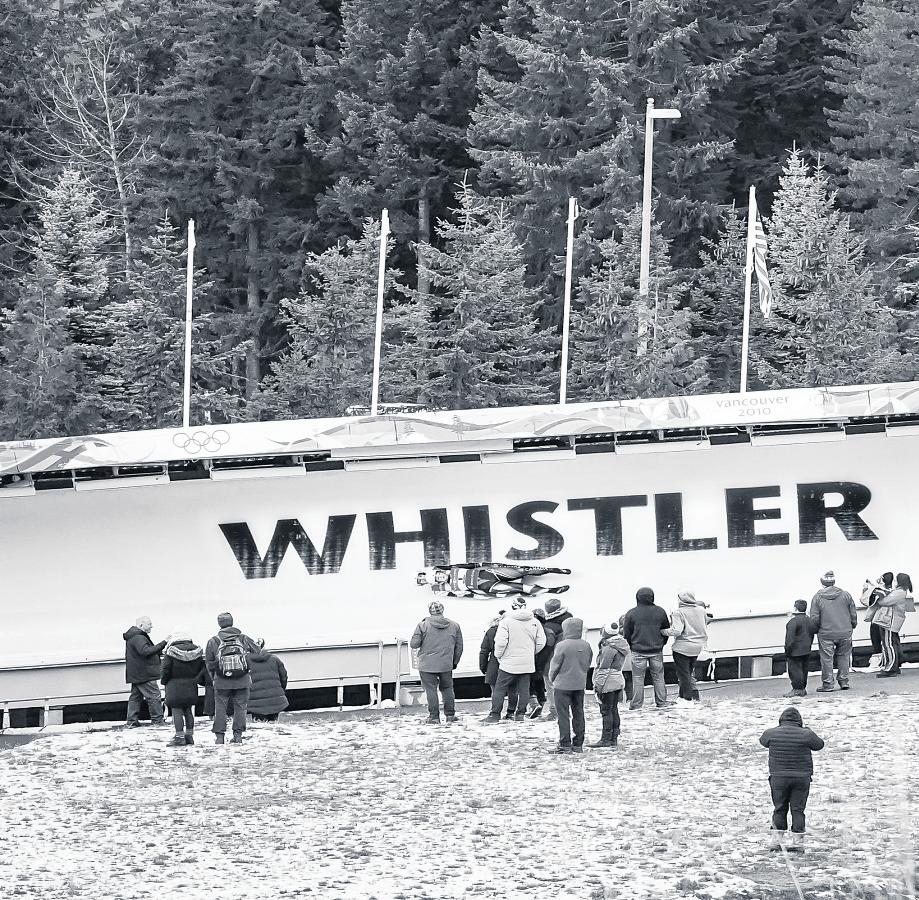

The 32-year-old prodigy hasn’t raced in Whistler in three years, but he respects and appreciates the venue. “It’s a beautiful track,” he said. “Amazing speed here and the corners are [not as easy] as they look.”
Team Canada proved its mettle by besting several veteran sleds, including Michael Vogt of Switzerland (who finished fourth), Markus Treichl of Austria (fifth) and Germany’s Johannes Lochner (sixth). The third German sled, driven by Christoph Hafer, had brake trouble and skidded off the end of the track into a parking lot after its first run. Hafer, the defending Olympic bronze medallist, was forced to withdraw with his sled damaged beyond hope of timely repair.
Austin’s first career medal guarantees him a spot on the Canadian national bobsleigh team. The minor mistakes he made on his second run aren’t lost on him, but the Calgarian is proud of what he, Gray, de Souza and Murray-Lawrence have achieved.
“I could just tell these guys were focused, they were ready to go, they were ready to lay it all on the line,” Austin said of his brakemen. “They just trusted themselves and did what they needed to do, pushing and loading…and
they just put their trust in me to get us down as fast as possible.
“I’m a firm believer that there’s no perfect run [in bobsleigh], so as long as we can get as close to that as possible, and just keep getting better as well, you can’t really ask for more than that.”
For Gray, who grew up on Vancouver Island, Whistler is essentially home soil. Winning a world-class medal on home turf is always sweet, but even sweeter was the fact that Gray’s family was in attendance to cheer him on. He strives to follow in the footsteps of accomplished Canadian brakemen like Ryan Sommer, Cam Stones and Benjamin Coakwell, who pushed Justin Kripps to Olympic bronze this February in Beijing.

“As a Canadian, it means so much wearing that leaf and having the respect of other nations,” Gray said, beaming with pride in the finish area after his race. “Not a lot of people get to do this, and I’m very, very fortunate. The love of my family and friends, of course my teammates, it means so much.”
Other notable Canadian results in Whistler include Austin and Murray-Lawrence’s sixthplace finish in two-man bobsleigh, Bianca Ribi and Cynthia Appiah winning gold and silver respectively in monobob, and Blake Enzie’s career-best sixth place in men’s skeleton.
Visit ibsf.org/en/races-results for the full results. n
SPORTS THE SCORE
TEST YOUR MEDAL L to R: Team Canada bobsledders Davidson de Souza, Shaquille Murray-Lawrence, Cyrus Gray and Taylor Austin celebrate their bronze-medal win at the IBSF World Cup in Whistler on Nov. 26.
38 DECEMBER 1, 2022 luge.ca/wcw2022 EBERSPÄCHER LUGE WORLD CUP Coupe du monde de luge EBERSPÄCHER December 9 10 décembre Whistler Sliding Centre / 4910 Glacier Lane, Whistler Centre des spor ts de glisse de Whistler / 4910, allée Glacier, Whistler Join the fun with activities on site! Concession • Beer Stand • Cheese! Box Photo Booth Joignez-vous aux activités amusantes sur place! Restauration • Brasserie Cabine photographique Cheese!Box Friday / vendredi 13:00 18:30 Saturday / samedi 11:00 - 16:00 Access via Excalibur Gondola Accès par télécabine excalibur Tickets $10/day Pay at the Gate Children under 12 Free Billets 10$/jour Payer à l'entrée Gratuit pour les moins de 12 ans
PHOTO COURTESY OF IBSF
Whistler ski instructor Otto Kamstra inducted into CSIA Hall of Fame
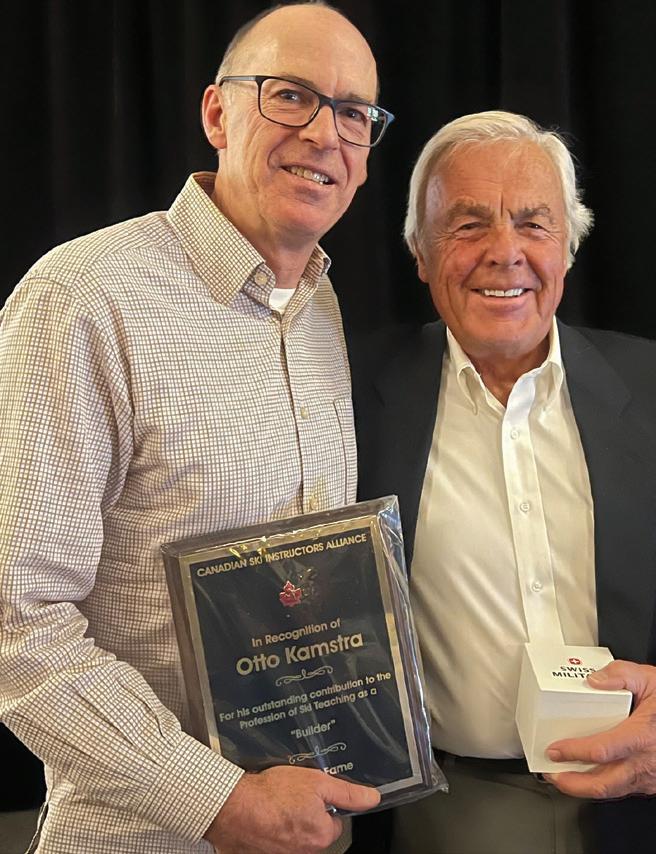
FORMER SKI-SCHOOL HEAD CREDITS OTHERS FOR HELPING HIM BUILD HIS IMPRESSIVE CAREER
BY DAVID SONG
THROUGHOUT HIS career as a ski instructor, Otto Kamstra has always strived to elevate the people around him. Now, those people are elevating him.
On Nov. 17, Kamstra was inducted into the Canadian Ski Instructors Alliance (CSIA) Hall of Fame during their Lake Louise Pro Days Camp banquet. He is now a member of the “Builders” category, set aside for those who have actively invested in CSIA’s development as an organization.

The longtime local and former head of Whistler Blackcomb’s ski school served two terms on CSIA’s board of directors: five years in the mid-1990s, followed by seven more from 2008 to 2014. His many contributions include helping found the Canadian Association of Snowboard Instructors. Kamstra also chaired the CSIA board from 2011 to 2014, leading efforts to manage the organization’s contracts as well as modernize its office procedures and financial structure.


“People around [Whistler] would say: ‘Oh, Otto is a ski teacher, he’s a trainer,’” Kamstra said. “They don’t really know that other side of it that CSIA has recognized me for.”
When Kamstra says that, he does not mean to brag about his resume. Much the opposite: When asked about his Hall of Fame induction, he was quick to credit those who have assisted him in reaching this point.
“My career is because of others that helped me,” he said. “This Hall of Fame thing, I owe it to them.”
Born in Prince George, B.C., Kamstra moved to Whistler in 1984, back when he remembers the town being “pretty raw” and “pretty small.” Like a lot of young adults, he came to ski Whistler’s majestic mountains for a winter or two and planned to move on with his life after that.
Instead, the people he met in Whistler changed the trajectory of his life.
Shortly after his arrival, Kamstra encountered Georgann Cope-Watson, who managed Blackcomb’s kids ski camp program from 1984 to 1985. Cope-Watson asked Kamstra to teach at the camp and the Prince George native agreed. He showed up wet behind the ears, trying to find himself in an environment that he hoped would be supportive. CopeWatson ensured it was that and much more.
“She showed immense leadership skill,” Kamstra said of Cope-Watson. “She could build a great team. She cared about employees. She saw the potential in us and wanted to create a space where we attached to something or somebody.
“I credit her for me staying in the business.”

Cope-Watson’s husband Cam is a certified CSIA Level 4 instructor, a “very, very impressive skier” who also took Kamstra under his wing. In 1985, he moved from Blackcomb to Whistler alongside the Watsons (the two mountains were originally run by separate entities).
As time went on, Kamstra acquired
many skills from many people. It wasn’t just about being a technically advanced skier or a knowledgeable instructor anymore. It was also about questions like: how does one provide the best possible experience for resort guests? Why is it important to pay heed to the smallest of details? Fostering a positive workplace environment was key to answering those questions.
“If your staff are happy, then they can treat the guests well,” Kamstra said.
Kamstra was able to bring his varied skills and experiences to CSIA, where he put them to good use on the board. As his resume grew, so did his reputation. Eight or nine years ago, Kamstra began contracting his services to Ski Dubai, flying halfway across the world once a year. The Chinese ski industry took notice, and before long Kamstra was headed to China three times a year to certify their fledgling ski staff through the Canadian system. He’s also had business in Japan, Andorra, Austria and the United States.
There’s no denying how much Kamstra has given to the skiing community, and he’s not quite done yet. The Whistlerite continues to run high-performance camps locally and abroad, camps that draw people from China, Taiwan and across North America. He’s still actively involved in training and certifying instructors in Canada at a time when he could rest on his laurels.
What keeps him going? His fuel is a deeply rooted conviction about the power and importance of teaching.
“As a teacher of any kind, our job is to ensure the success of the people that we come in contact with,” Kamstra said. “One of the most important jobs in the world is teaching because you’re trying to encourage, support, mentor, help other people, you know, and it’s really not about yourself.”
A Hall of Fame-worthy outlook on life, indeed. n
Resort Municipality of Whistler
Whistler Village proper ty owner, managers and merchants
Resor t Municipality of Whistler Whistler Village property owners, managers and merchants
The winter season is with us again and we would like to take this opportunity to remind all owners, property managers and merchants in Whistler Village of the importance of keeping the walkways, roofs, stairs and landings of stairs adjacent to their stores and properties free of ice and snow It is essential that customers and guests visiting our Village feel safe and comfortable in be ing able to travel freely about the area
As the winter season is with us again, we’d like to take this oppor tunity to remind owners, proper ty managers and merchants of the impor tance of keeping walkways, roofs, stairs and landings adjacent to their stores and proper ties free of ice and snow It is essential that customers and guests visiting our Village feel safe and comfor table in being able to travel freely about the area
You are required to clear snow and ice from walkways, roofs, stairs and landings adjacent to stores and proper ties by 10 a.m. daily.
You are required to clear snow and ice from walkways, roofs, stairs and landings adjacent to stores and propertiesby 10 a.m. daily.
RMOW Property Maintenance Bylaw No. 810
RMOW Property Maintenance Bylaw No 810
Get ready winter by:
Get ready for winter by:

1 Stocking up on ice melting products (not road salt) and shovels


Stocking up on ice-melting products (not road salt) and shovels

Checking the heat tracing on stairs and ramps around your proper ty
2 Checking the heat tracing on stairs and ramps around your property
Thanks in advance for your cooperation.
Thanks in advance for your cooperation
Download the Property Maintenance Bylaw at www whistler ca /bylaw in the Frequently Requested Bylaws section
Download the Proper ty Maintenance Bylaw at www whistler.ca /bylaw in the Frequently Requested Bylaws section.
SPORTS THE SCORE
OTTO-MATIC Longtime Whistler ski instructor and former chair of the Canadian Ski Instructors Alliance Otto Kamstra, left, was inducted into the organization’s Hall of Fame in a ceremony on Nov. 17.
DECEMBER 1, 2022 39 Resor t Municipality of Whistler w h i s t l e r. c a / by l a w
PHOTO COURTESY OF CSIA
Whistler husband-wife duo behind Lily Food creating cream puff perfection
MADORI AND TAKE TANAKA LAUNCHED LILY FOOD CREATION OUT OF FUNCTION JUNCTION’S
BY MEGAN LALONDE
CREAM PUFFS, profiteroles, choux à la crème. Whatever you call them, a generally indisputable fact is that the fluffy, bite-sized pastry balls filled with sweet cream were first created in France.

Despite those European roots, “cream puffs are really, really popular in Japan,” explained Madori Tanaka, co-owner of Whistler pastry start-up Lily Food Creation.
In Japan, “You can actually get it anywhere, and also it’s something [that’s more difficult for people] to find in Whistler.”
Madori and her husband, Take Tanaka, launched Lily Food Creation in August 2021 to help fill that gap. The pastry shop operates out of Whistler’s Chirp Co-Kitchen in Function Junction from 11 a.m. to 1 p.m. on Saturdays, though its products are also available at Forecast Coffee and Hot Buns Bakery on weekends. (That is, until they sell out.)
It’s difficult to tell from the images of flaky, sugar-dusted pastries splashed across Lily Food’s social media feeds, but Take considers baking a fun (if time-intensive) side-hustle. He previously attended culinary school and honed his skills working in hotels in Japan, picking up a few tips from the pastry chefs he shared a kitchen with along the way. These days, Take puts those skills to use most often as a line cook at the upscale Rimrock Café in Creekside.
“Cooking is my job, but pastry is my hobby,” he explained.
Lily Food Creation’s bread and butter is its two distinct styles of cream puff: a crunchier, more modern cookie-style dessert and a traditional pastry with diced almond and cane sugar.
In addition to those staples, Take mixes up the menu with decadent monthly specials like pastry rings, lacquered passion fruit éclairs with mascarpone and chocolate puff shell, strawberry mille-feuilles, rum-soaked cherry tarts with lemon whipped cream, tiramisu, opera cakes and chocolate cream puffs with custard cream.
For December, Take will recreate the chocolate pistachio Yule log cake that proved popular last Christmas, but is also throwing a new cheesecake-style Yule log cake into the mix. He also bakes custom birthday cakes by request.
- MADORI TANAKA
While Take handles all things pastry, Madori runs the administration side of the business. “I never go into the kitchen,” she said with a laugh. Both snowboarders from Japan, the couple met in Whistler after coming to the resort in 2013 in search of snow. They were married in 2016. (Their three-year-old son also
works for the enterprise as chief greeter.)
“My husband had been thinking about having his own businesses since he arrived in Whistler. He always wanted to do something by himself,” Madori explained. With fewer
maybe catering outlet, said Take. “I don’t know when yet, but eventually,” he added. In the meantime, Chirp is meeting all Lily Food’s needs, with the added bonus of connecting the Tanakas with other chefs and small business owners in the resort community.
“It’s a small town, so connection is important in whatever you do,” said Madori. “Now is the time to build those relationships with others.”
shifts and more downtime brought on by the COVID-19 pandemic, coupled with the relatively low-risk business opportunity that comes courtesy of a time-slot at Chirp, it seemed like the perfect time to take action.
The dream would be to one day own and operate his own restaurant, pastry shop and
As Take added in a follow-up email, “We appreciate all our friends and people around who gives us advice and feedback, and encourages us always. We could not do this without these beautiful people.”
Orders can be placed via email at lilyfoodcreation@outlook.com, by phone at 604-388-8787 or through social media at facebook.com/lilyfoodcreation or @lilyfoodcreationwhistler on Instagram. Delivery is available within Whistler. n
CHIRP CO-KITCHEN IN 2021
CRÈME DE LA CRÈME Take Tanaka’s legendary cream puffs are on offer at Chirp Co-Kitchen in Function Junction on Saturdays from 11 a.m. to 1 p.m.
EPICURIOUS “It’s a small town, so connection is important in whatever you do.”
PHOTO SUBMITTED
40 DECEMBER 1, 2022 Food Lovers Unite! Best prices on locally sourced produce. Check out Weekly Flyers in store or online at: yourindependentgrocer.ca Rainbow Store 8200 Bear Paw Trail Whistler 604-932-1128 We’ve got you covered. Pick up the latest issue of your favourite read in Whistler.
p.m.
p.m.







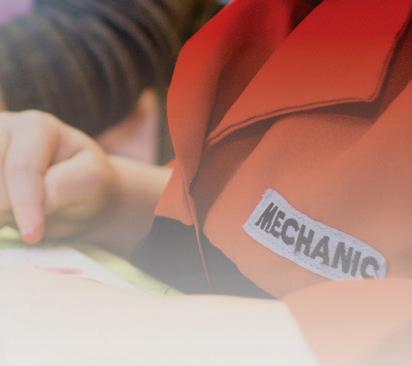











p.m. Carmen

ARENA SCHEDULE Please see whistler.ca/recreation for the daily arena hours or call 604-935- PLAY (7529) MEADOW PARK SPORTS CENTRE SWIM • SKATE • SWEAT • SQUASH OPEN DAILY: 6 a.m. to 9 p.m. POOL HOURS* DEC 1 DEC 2 DEC 3 DEC 4 DEC 5 DEC 6 DEC 7 MAIN LAP POOL 6 a.m.3:45 p.m. 6 a.m.3:45 p.m. 8 a.m.- 4 p.m. 8 a.m.- 4 p.m. 6 a.m.3:45 p.m. 7:45 a.m.8 p.m. 7:45 a.m.8 p.m. 6-8 p.m. 6-8 p.m. 6-8 p.m. LEISURE (KIDS) POOL 9-11 a.m. 4-8 p.m. 9 a.m.-4 p.m. 9 a.m.- 4 p.m. 9-11 a.m. 4-8 p.m. 4-8 p.m. 4-8 p.m. 4-8 p.m. HOT SPOTS 6 a.m.- 8 p.m. 6 a.m.- 8 p.m. 8 a.m.- 4 p.m. 8 a.m.- 4 p.m. 6 a.m.- 8 p.m. 6 a.m.- 8 p.m. 6 a.m.- 8 p.m. *Schedule subject to change without notice whistler.ca/recreation | whistler.ca | 604-935-7529 @RMWhistler | @rmwhistler | @rmowhistler FITNESS CLASS SCHEDULE DEC 1 DEC 2 DEC 3 DEC 4 DEC 5 DEC 6 DEC 7 THURSDAY FRIDAY SATURDAY SUNDAY MONDAY TUESDAY WEDNESDAY I Full Body HIIT 7:30-8:30 a.m. Anna I Kin Stretch 7:30-8:30 a.m. Elliot I Strong Glutes and Core 7:30-8:30 a.m. Jess I Mountain Ready 7:30-8:30 a.m. Steve I Strength & Cardio 7:30-8:30 a.m. Carly I Strength & Stretch 7:30-8:30 a.m. Mel R Swim Fit 7:45–8:30 a.m. Marie-Anne R Swim Fit 7:45–8:30 a.m. Marie-Anne I Aqua Fit Shallow 8:45 9:45 a.m. Marie-Anne I Full Body HIIT 9 10 a.m. Alex I Yin & Yang Yoga 9 10 a.m. Heidi I Aqua Fit Deep 8:45 9:45 a.m. Marie-Anne I Strength & Cardio 9 10 a.m. Lou I Low Impact Strength 9 10 a.m. Mel I Zumba 10:30-11:30 a.m. Susie I Mom & Baby 2.0 11:30 a.m.-12:30 p.m. Sara I Strength & Stretch 9 10 a.m. Carly I Gentle Fit 1:30-2:30 p.m. Mel I
I Gentle Fit
R Prenatal Fitness
Sara I
I
I
F Spin
F Spin
I Yoga Roll & Release 8-9 p.m. Laura I Slow Flow Yoga 8 9 p.m.
F FLEXIBLE REGISTRATION Flex-reg’ classes have a separate fee and allow you to register for classes on the days that fit your schedule. R REGISTERED FITNESS Registered fitness classes have a separate fee and a defined start and end date. Pre-registration is required for the entire set of classes. I INCLUDED FITNESS These classes are included with your price of admission for no extra charge. FRIDAY DEC 9 | 6 PM AGES 13-18 (GRADE 8+) THE YC ANNUAL Swing by the YC for the best Turkey Dinner in town prepared by the chefs at The Faimont Chateau! Get your holiday cheer on with FREE gifts from WCSS! 4335 Blackomb Way (basement of the Arts Whistler building) sponsored by... whistleryouthcentre.com 604.935.8187 • WhistlerYouthCentre FRIDAY DEC 9 | 6 PM AGES 13-18 (GRADE 8+) THE YC ANNUAL Swing by the YC for the best Turkey Dinner in town prepared by the chefs at The Faimont Chateau! Get your holiday cheer on with FREE gifts from WCSS! 4335 Blackomb Way (basement of the Arts Whistler building) sponsored by... whistleryouthcentre.com 604.935.8187 • WhistlerYouthCentre
Zumba 12:15-1:15 p.m. Carmen
1:30-2:30 p.m. Diana
5:30-6:30 p.m.
TRX Mixer 5:15-6 p.m. Courtney
Mountain Ready 5:30–6:30 p.m. Anna
HIIT Express 5:15-6 p.m. Alex
6-7 p.m. Courtney
6:15-7:15 p.m. Courtney F Spin 6-7
Courtney F Spin 6:15-7:15
Alex I Strong Core & Glutes 6:15-7:15 p.m. Carly I Zumba 6:30-7:30
Laura
Justa Jeskova
Whistler Film Festival marks a return to normal
FESTIVAL RUNS WITH FILMS AND EVENTS AROUND WHISTLER UNTIL DEC. 4
BY ALYSSA NOEL
THE WHISTLER FILM FESTIVAL (WFF) saw an influx of submissions in two particular genres this year.

But, says Paul Gratton, director of programming for the festival, there’s a logical explanation for that—and a perk, too.
“We had about a 30-per-cent jump in submissions in documentaries and lowerbudget Canadian films, which made screening a little bit more arduous on the one hand, but on the other hand, I’d say the overall quality of what got in is significantly higher than in some past years just because of the sheer volume,” he says. “I think during COVID it was easier to put together documentaries than to assemble crews and to abide by COVID protocols [on a traditional film set]. From what I hear from my producer friends, that added anywhere from 20 to 30 per cent of your budget, if you were doing it properly.”
The 2022 festival, which kicks off in-person from Nov. 30 and runs until Dec. 4, and streams online until Jan. 2, 2023—is marking a return to normal this year.
Part of the fun for audiences—and appeal for people in the industry—is having actors, directors, and producers attending screenings and events.
For Angela Heck, executive director of the festival, a question about what it will be like to have these people “mingling” again struck
a chord after last year’s hybrid format.
“You said ‘mingling’ there and I actually had a little chill up and down my spine,” she says. “It’s like, ‘Oh yeah, that’s what that feeling is of being together in person.’ And really that’s where the energy and synergies of the creative worlds coming together are. That’s what makes it all so exciting.”
But, of course, it’s also the selection of films. On the aforementioned documentary front, Gratton said many of the offerings fall into the sports and music categories this year.
One he’s excited about is Offside: The Harold Ballard Story, directed by Jason Priestley, who will be attending.
the closet. At some point as society changed and they were looking for new villains and ways of making things interesting, they allowed certain characters to come out publicly, but they were usually set up as villains and booed. Nowadays, the scene is a lot healthier.”
The feature films on the schedule, meanwhile, offer a healthy mix of crowd pleasers and cinephile favourites.
One of Heck’s top picks falls into the latter category.
“I shouldn’t pick favourites, but Diaspora, it’s not for the faint of heart,” she says. “It’s for people who want to get into something that is beautifully crafted, really takes all
a multimillionaire.
“Glass Onion is playing in many markets in Canada this week for one week only and Netflix is not going to release the box office results to anybody,” Gratton says. “We’re kind of going to be the only place in North America running the movie next week after it’s oneweek screening.”
The End of Sex is also expected to be a laugh-out-loud crowd pleaser.
“This is kind of the spiritual follow-up [to My Awkward Sexual Adventure, which screened at WFF in 2012) after those two [characters] got married and raised their kids,” Gratton says. “What are they doing to spark their relationship? They go to great awkward lengths to explore options from swinging to going to a dungeon to you name it. And, of course, everything backfires.”
If the festival’s 41 feature films and 45 shorts leave you feeling at a loss for where to start, one solution is to check out the brandnew 10 Canadians to Watch program—or the established Stars to Watch event—featuring talent from movies that will be screening at the WFF.
“I want to emphasize clearly this is for people who hate the Toronto Maple Leafs,” he adds. “It shows how the Toronto Maple Leafs’ fans were manipulated and basically presented a second-class product on the ice compared to what they could have done just because of this incredibly controversial Harold Ballard character [the Leafs’ mercurial former owner].”
Another unique sports documentary on the roster is Out in the Ring, which delves into homosexuality in pro wrestling.
“[It] has the most incredible footage,” Gratton says. “Historically, of course, it wasn’t cool to be gay in wrestling and yet a lot of the people who were practising the sport were in
of the aspects of filmmaking—I want to say, ‘seriously,’ but it’s a real delight to see all of the aspects of sound, cinematics and storytelling. It’s just a really beautiful film.”
About a Ukrainian immigrant in Winnipeg, the film features 25 languages without a word of English spoken for the first 40 minutes. But it gets to the heart of an immigrant’s story in a unique way.
On the flipside, there’s the more commercially appealing Glass Onion: A Knives Out Mystery
Featuring Daniel Craig, the mystery film follows a group of suspicious characters who are sent to an isolated island in Greece run by
With the festival’s new hybrid model, you can also revisit the winners of the coveted Borsos Competition for Best Canadian Feature and spend your holiday season streaming those prized selections.
“They’ll be announced at an award ceremony at the end of our in-theatre [run], so you’ll know what won,” Gratton says. “If you want to focus online with the ones that won that you missed, that would be a really good starting point. Especially if you’re stuck at home between Christmas and New Year’s.”
To explore the entire range of films screening, or to buy passes and tickets, visit whistlerfilmfestival.com. n
DREAM SCREEN Diaspora, following the experience of a Ukrainian immigrant in Winnipeg, is screening at the Whistler Film Festival on Dec. 2 and 3. PHOTO
SUBMITTED
“I shouldn’t pick favourites, but Diaspora, it’s not for the faint of heart. It’s for people who want to get into something that is beautifully crafted ...”
ARTS SCENE 42 DECEMBER 1, 2022
- ANGELA HECK
Vancouver Academy of Music Symphony Orchestra brings seasonal favourites to Whistler



CATCH “THE FOUR SEASONS” AND “NUTCRACKER SUITE” AT OUR LADY OF THE MOUNTAINS CATHOLIC CHURCH ON DEC. 4
 BY ALYSSA NOEL
BY ALYSSA NOEL


AGE IS BUT A NUMBER when it comes to classical music.
The Vancouver Academy of Music Symphony Orchestra, for example, features musicians ranging in age from 14 to 23.









“The principal main seat for each section are often professionals in their 20s,” says conductor Ian Parker. “But you often hear or see a 14-year-old come along and play more virtuosically than anyone else in town. That happens too … I spent eight years of my life at Juilliard and there were violin students who could play circles around their teachers. That’s the excitement of working with talent.”



A group of around 20 orchestra musicians— largely strings—will be travelling to Whistler to perform as the smaller Vancouver Academy of Music Chamber Orchestra on Sunday, Dec. 4. The show is part of the Whistler Chamber Music Society’s series.
The concert will feature seasonal selections like Vivaldi’s “The Four Seasons” and “The Nutcracker Suite” (the latter featuring violinist Caitlin Wong), as well as a few other selections.
“It’s a beautiful program that encompasses a bit of that holiday spirit, but also features the meat-and-potatoes of baroque music,” Parker adds.
While well-known pieces like these might serve as an entry point for newcomers to classical music, Parker—also an experienced pianist who has performed with many top Canadian and American orchestras—says people are usually surprised by how much they enjoy any classical music concert.



“Every time I’ve ever brought a firsttimer, they always say they enjoy it eons more
than they thought they would. But of course it’s helpful. These are the classical tunes that have been featured in so many films and commercials. If people can come to that nodding their heads because they recognize the tunes, [that helps],” he adds.
Conversely, the orchestra had a chance to delve more deeply into the music of Beethoven during the pandemic—all nine of his symphonies, to be more specific.
After having to nix a tour across China in July 2020, they instead booked Vancouver’s Orpheum Theatre for two years and recorded those selections, as well as four Brahms symphonies.
“Those are truly the bibles of classical orchestral music,” Parker says. “We went on this project of recording all of them in an empty hall. We had all of us significantly separated on stage. All the wind players were playing inside plastic curtains. Everyone was masked. We expanded the stage 360 degrees … It was so rewarding to be enriched with that repertoire.”
While those years were surprisingly productive, the orchestra is looking forward to its upcoming Whistler debut, which will kick off a series of December performances, including a concert at the Orpheum Theatre on Dec. 11 and the Kay Meek Arts Centre in West Vancouver on Dec. 18.
“It’s a very connective program in the sense that there will be a little bit of introduction from the stage,” Parker says. “It’s very much not a bunch of musicians onstage, we play, we leave. We’re reaching out to our audience.”
Catch the Vancouver Academy of Music Chamber Orchestra: The Four Seasons and The Nutcracker on Sunday, Dec. 4 at 5 p.m. at Our Lady of the Mountains Catholic Church.
Tickets are $25 for adults or $20 for youth under 20. Get them at whistlerchambermusic. ca or at the door. n
SWEET SYMPHONY Conductor Ian Parker is bringing members of the Vancouver Academy of Music Symphony Orchestra to Whistler on Dec. 4.
ARTS SCENE DECEMBER 1, 2022 43 T I C K E T S O N S A L E at thealchemistmagazine ca/vcw M A S T E R C L A S S E S D a i l y S P I R I T E D B R U N C H M a r c h 5 C I N Q À S E P T S E R I E S D a i l y V C W E V E N T S D a i l y G O L D E N G A L A M a r c h 1 1 F E AT U R I N G MARCH 5 11 2023 Presented by
PHOTO SUBMITTED
Bespoke Market pairs up with Audain Art Museum
ALSO IN ARTS NEWS: WAG OFFERS PET PHOTOS WITH SANTA; ARTIST ANDREA MUELLER OPENS POP-UP SHOP
BY ALYSSA NOEL
WELL, YOU COULDN’T ask for a more picturesque setting for your holiday shopping.
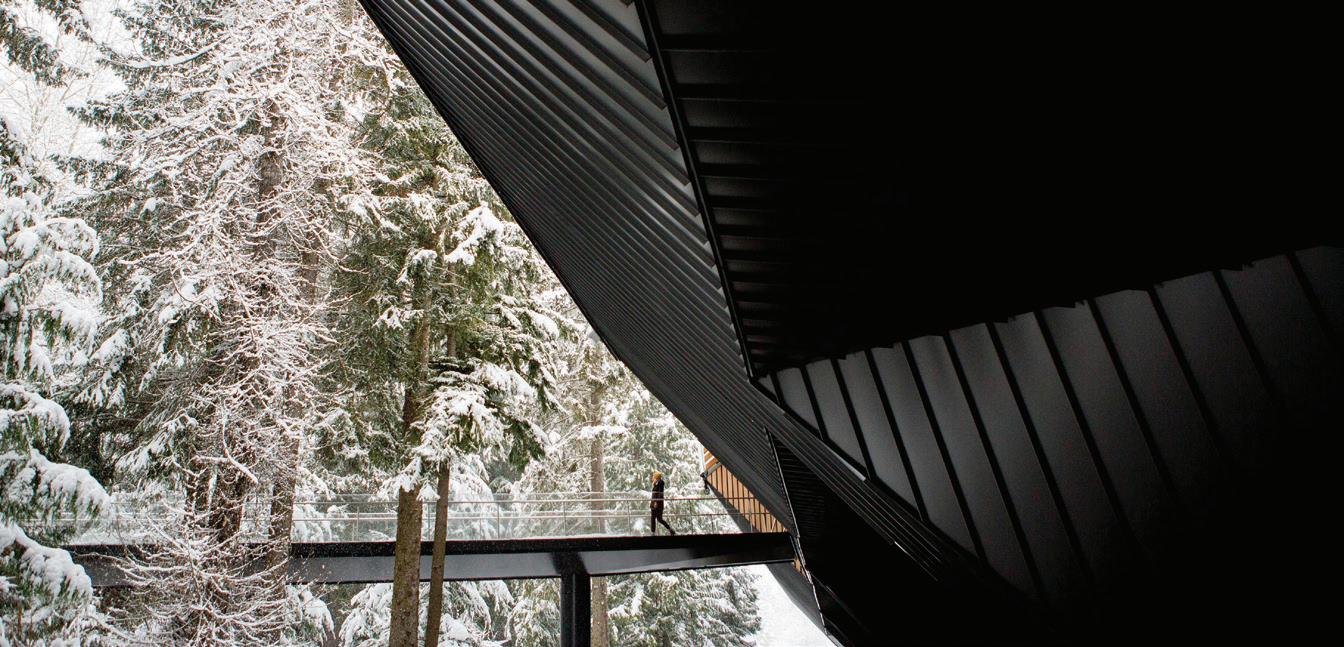
The Bespoke Market has partnered with the Audain Art Museum to host more than 30 local vendors—selling a curated selection of everything from ceramics to jewelry, art, home goods and vintage items, to name a few—inside the award-winning museum on Friday, Dec. 2 and Saturday, Dec. 3.

Tickets, which are $10 at the door or $15 for a two-day pass, will offer entry to both the market and the museum. (Children 12 and under are free.)
The goal, says founder and creator Shannon Lorenz, is to support small business and artists. “There is nothing more special, more community connected, or more localloving than shopping small,” she says in a release.
The Sea-to-Sky-based market held its last event in November at the Railway Museum in Squamish.




The curated Whistler market, meanwhile, will feature familiar local names such as artist Andy Anissimoff, Pemberton lavender farm From the Garden Shed, and painter and clothes designer Heidi the Artist.
Doors open from 12 to 7 p.m. on Dec. 2,
and from 10 a.m. until 5 p.m. on Dec. 3.
For more information and tickets, visit bespokemarket.ca/audain-holiday-market.







PHOTOS WITH SANTA— CRITTER-STYLE
You know your pooch has a Christmas wish for Santa this year.

Now you can bring Fido one step closer to his holiday hopes and dreams at Whistler Animals Galore’s (WAG) Pet Photos with Santa event, taking place on Saturday, Dec. 3 at the Westin Resort and Spa from 12 p.m.




until 4 p.m.


The fundraiser for Whistler’s animal shelter is a $20 minimum donation (cash preferred, though e-transfer is also accepted). Digital photos will be available online.
If you’re looking for a solid stocking stuffer, WAG’s hoodies and calendars will also be on sale.

If you’re unable to attend, but looking to help out the cause, WAG is holding a matching campaign in December. Sponsored by Moguls Coffee House and Zog’s, every dollar donated to WAG during the month will be matched up to $20,000.
The organization’s goal is to raise $40,000

for WAG’s 40th year.
ART POP POPS UP
Well-known, award-winning local artist Andrea Mueller is set to celebrate a new project .
The painter has taken over a retail space in Creekside to open an “art-focused popup shop, gallery and creative events venue” dubbed ART POP.
Not only will it display her art collection and merch, but it will also be a space for dropin art sessions, adult paint nights, arts classes for kids and other workshops.
“ART POP will be a space where people can come in and immerse themselves in art—an inspiring, colourful, and creative space where they can come and create or browse local artists’ work,” Mueller says, in a release. “I believe creativity enhances our quality of life and is important for the wellness of the community. Since moving to Whistler 20 years ago, my aim has always been to help foster creativity, and ART POP is my newest iteration of this idea.”
The space officially opens Dec. 1 at 3212063 Lake Placid Road, and is slated to run for six months. It will be open from 12 to 6 p.m. Monday to Saturday and 11 a.m. to 4 p.m. on Sundays. For the launch weekend, however, drop by on Saturday, Dec. 3 from 1 to 6 p.m. and on Sunday, Dec. 4 from 12 p.m. to 5 p.m. ■
ARTS SCENE
SCENIC SHOPPING The Audain Art Museum is set to host to the Bespoke Market on Dec. 2 and 3.
44 DECEMBER 1, 2022 WIN HOCKEY TICKETS! WIN A PAIR OF SKIS! Come on down to Roland's Pub for a chance to win! We have giveaways all the time! Roland's Pub will hopefully be open for lunch on Wednesday & Thursdays as soon as mid December, stay tuned...☺ Christmas stocking stuffer ideas for the new driver! Graduated Licence Program (GLP) • Behind the wheel and in-class training • Incentives: high-school credits and less wait time for ICBC road test licencetodrive.ca | 604-894-1455 In partnership with local businesses to give back to the local community, we will be giving away 12 Days of Prizes from December 1 12! Nominate a friend that lives locally and tell us why they deserve a prize. Scan the QR code below or email us at info@harmonywhistler.com. Visit our Instagram @harmonywhistler for contest rules and prize details. 12 DAYS HARMONY GIVEAWAY of
PHOTO BY ABBY COOPER
WHISTLER WALDORF


SCHOOL WINTER FAIRE



WHISTLER LIP SYNC BATTLE

Perform








Can’t sing? No problem! Bring your dance moves and rock the house for three minutes of your favourite song in this exciting battle.


> Après Après
> Dec. 3, 8 p.m. > $20
TIM & RAD LIVE AT

DUBH LINN GATE
> Dubh Linn Gate Irish Pub > Dec.
ARTS SCENE PIQUE’S GUIDE TO LOCAL EVENTS & NIGHTLIFE Here’s a quick look at some events happening in Whistler this week and beyond. FIND MORE LOCAL EVENT LISTINGS (and submit your own for free!) at piquenewsmagazine.com/local-events WAG’S PET PHOTOS WITH SANTA GETTY IMAGES DEC01-07 COMMUNITY
PET
WITH
animal shelter is hosting Pet
with Santa.
by Coast Mountain Photography. All proceeds go to Whistler Animals Galore. Staff will also be on hand with WAG swag, calendars and other goodies.
&
donation. (Cash preferred, but
is also accepted.)
WAG’S
PHOTOS
SANTA Whistler’s
Photos
Photos
> Westin Resort
Spa > Dec. 3, 12-4 p.m. > Minimum $20
e-transfer
sustainable
that can be given as
gifts,
the
and participate
hour time
the
Tickets must be purchased
Make natural,
crafts
thoughtful
take a walk through
enchanted Gnome Village, visit the Cookie Fairy, watch the Crane Maiden puppet show,
in beeswax candle dipping. One-and-a-half
slots available throughout
day.
in advance, at eventbrite.ca.
> Whistler Waldorf School Field
ENTERTAINMENT
> Dec. 3, 10:30 a.m.-2 p.m. > $25 ARTS +
to win the $500 cash prize or purchase a ticket and cheer on your friends!
THE
Two longtime Dubh performers come together to fill your night with great music and great times. Be ready to hit the floor and dance till you can’t no more.
1, 9 p.m. > Free entry DECEMBER 1, 2022 45 1ST FRIDAY EVERY MONTH FROM 4-7PM NO COVER CHARGE Fri Dec 2nd Jon Dobie Cover artist focused on acoustic classic rock, folk and campfire tunes. With enough up tempo jams to get you groovin’ and moving but can also keep it cool and mellow Inspired by Canadian legends like Blue Rodeo, The Tragically Hip and more 1045 Millar Creek Rd in Function Junction whistlerbeer.com LIVE MUSIC IS BACK! Happy Holidays from Sales Deadline Remains the Same: Tuesday, December 20th at 12 P.M. Creative Deadline Remains the Same: Tuesday, December 20th at 4 P.M. December 22nd Paper: Sales Deadline: Thursday, December 22nd at 12 P.M. Creative Deadline: Tuesday, December 27th at 4 P M December 29th Paper: Holiday Deadlines THANK YOU! Once again, the Whistler F irefighter’s Association wishes to thank Br uce Stewar t and for their incredible suppor t of the ANNUAL HALLOWEEN FIREWORKS in Tapley’s Far m. Without your generosity, the firewor ks would not happen. You are without out a doubt, “The Locals Choice” Nester s Mar ket
‘Skiing is a sunset industry’
BY JILLIAN ROBERTS

Have you ever been told something wouldn’t work, and then tried it anyway? Luckily for everyone who enjoys Whistler, that is exactly what the early council and planners did when they were told that Whistler would never be a destination resort.
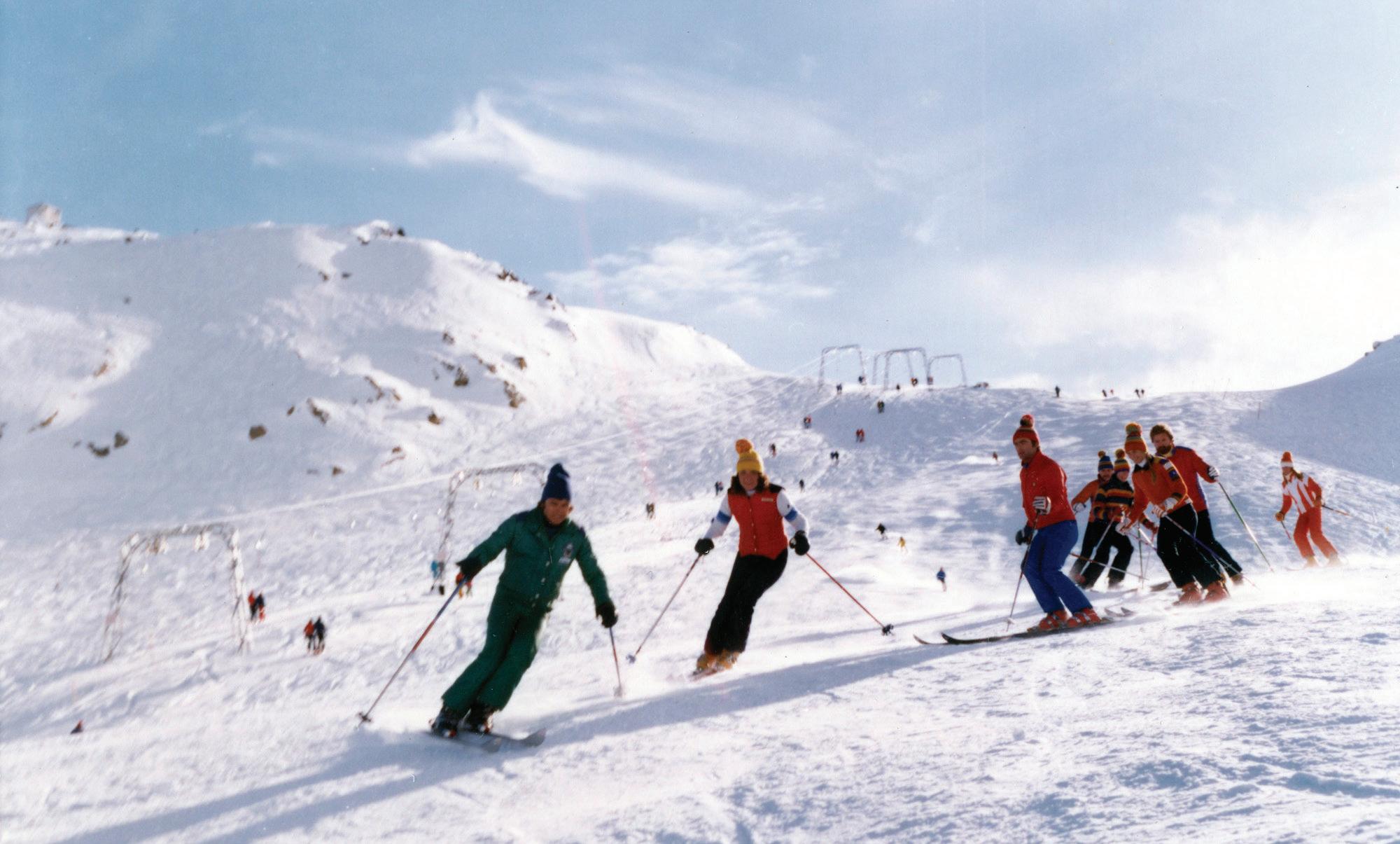
Before the development of Whistler Village, when the lifts only went from Creekside, a cap on development was put in place to prevent haphazard development across the region until a community plan could be completed. By 1973, speculators and developers had started to buy land throughout the valley with plans for hotels and other commercial developments, individuals hoping to make big money by personally creating a destination resort on private land. With a background in community planning, Bob Williams, then Minister of Lands, placed the moratorium on commercial development
community plan was developed and shared for community consultation at L’Après in January 1976. After much friction and to-and-fro, the community plan was approved and the council got on with planning the Whistler Village Town Centre. In 1977-’78, consultants were brought in from around North America to examine trends within the snowsports industry. The team of expert consultants examined trends, tracking baby boomers and came to the conclusion that “one of the sad things about skiing, is that it is a sunset industry”.

According to Jim Moodie, one of the project managers from Sutcliffe, Griggs and Moodie, there were some other big strikes against Whistler that they were warned about. “Some of the reports looked at Whistler and said, ‘As a destination resort you’re in trouble because Vancouver isn’t an international airport. You’re at the end of a really crappy road. And you’re in a coastal climate zone where it rains most of the time’. We said, ‘Yeah, that’s cool, but we’re going to have a ski resort’.”
until further studies could be completed.
Initial investigations in 1974 recommended the development of a community with a single town centre on Crown land, near the thengarbage dump. This site was recommended due to its close proximity to both Whistler and Blackcomb mountains, and because it was on provincial land, there could be more control over the development compared to a town centre on private land. Absolutely critical for the success of Whistler, the report prepared by James Gilmour also recommended a special form of local administration govern Whistler, with more planning control than a typical municipality, to ensure the resort met the expectations and needs of the province. Following this, in 1975, the Resort Municipality of Whistler Act was introduced, with the first local council elected and sworn in the same year.
As per provincial recommendations, the
Despite the warnings, the council of the day was unfazed. On Aug. 21, 1978, more than 100 locals and visiting press celebrated the beginning of construction for the new Whistler Village Town Centre. As well as driving the bulldozer to turn the first soil, Mayor Pat Carleton led a press conference where he noted that “one of the best ski-area resorts in North America isn’t good enough for me… To be No. 1 just takes a little longer.” And so it did. By 1992, Whistler was voted the No. 1 ski resort in North America in the ski industry magazine, Snow Country, starting a flow of accolades and top rankings.
Even the experts could not predict the future, with snowboarding, freestyle skiing and mountain biking all adding to the numbers and allure of our destination resort. Today, the tourism challenges facing Whistler are very different to the days when we were worried nobody would visit. n
MUSEUM MUSINGS
Today, the tourism challenges facing Whistler are very different to the days when we were worried nobody would visit.
DEFYING THE ODDS Two T-bars at the top of Whistler Mountain. Expert consultants in the 1970s predicted that the popularity of skiing would only decrease in the future as the population aged.
46 DECEMBER 1, 2022 FALL SPECIALS 3 for $44 Course Dinner AVAILABLE Sunday To Thursday Full portion sizes Choices from entire menu ONLY IN ... The Attic A B O V E 2 1 S T E P S Buy2Appetizers 1Free Get AVAILABLE Sunday to Thursday Ends December 14th, 2022 RESERVATIONS 604.966.2121 w w w . 2 1 s t e p s . c a
WHISTLER MOUNTAIN COLLECTION
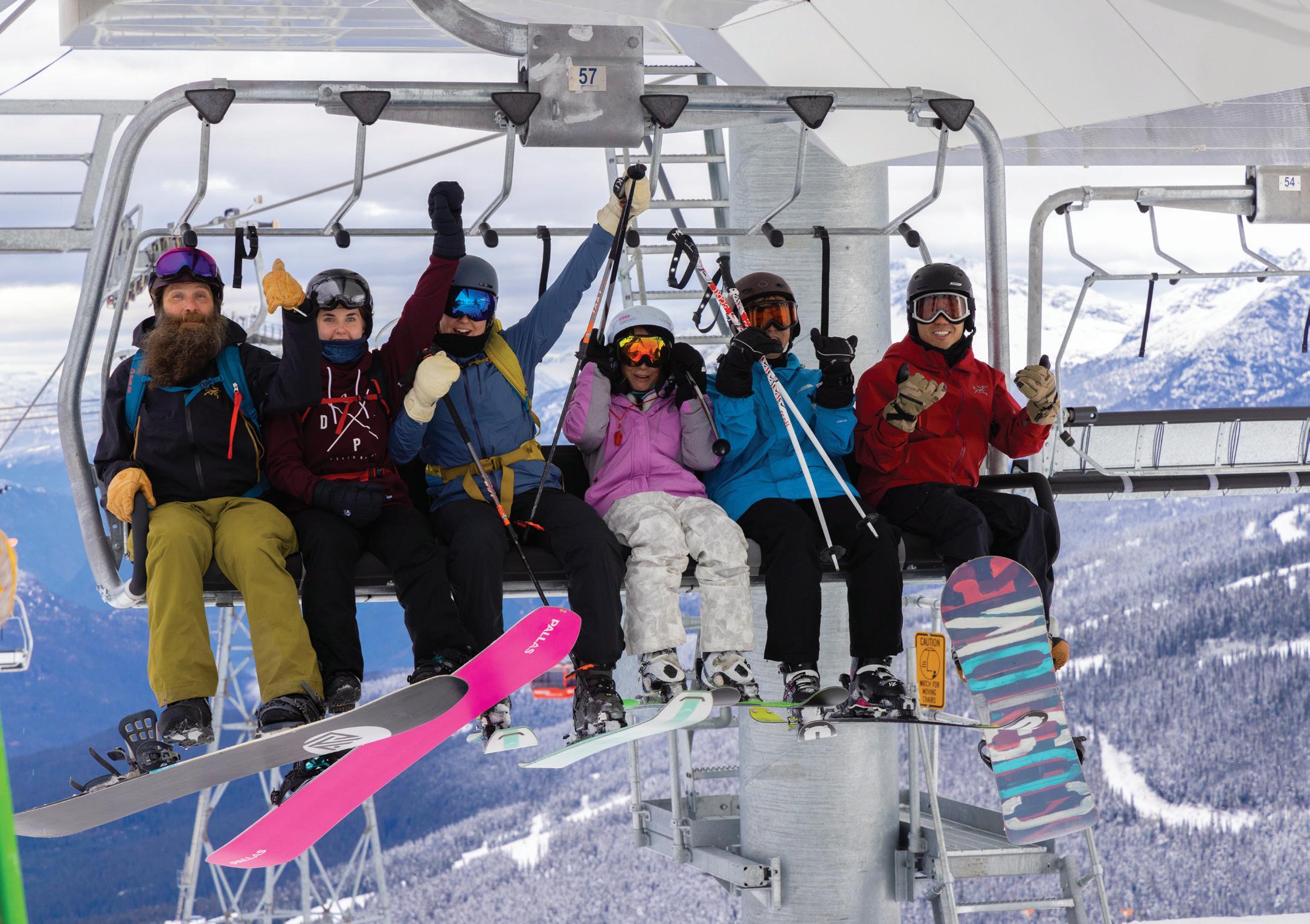
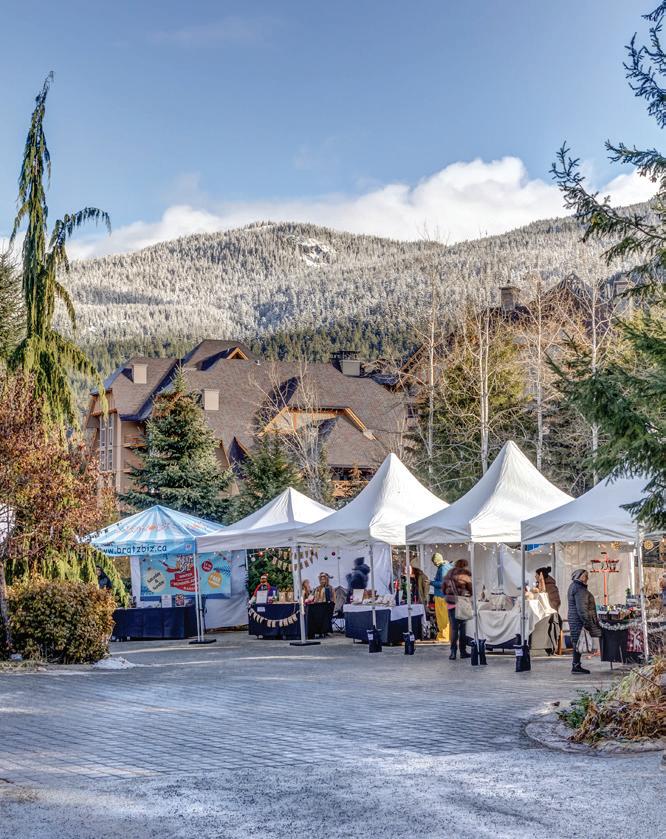
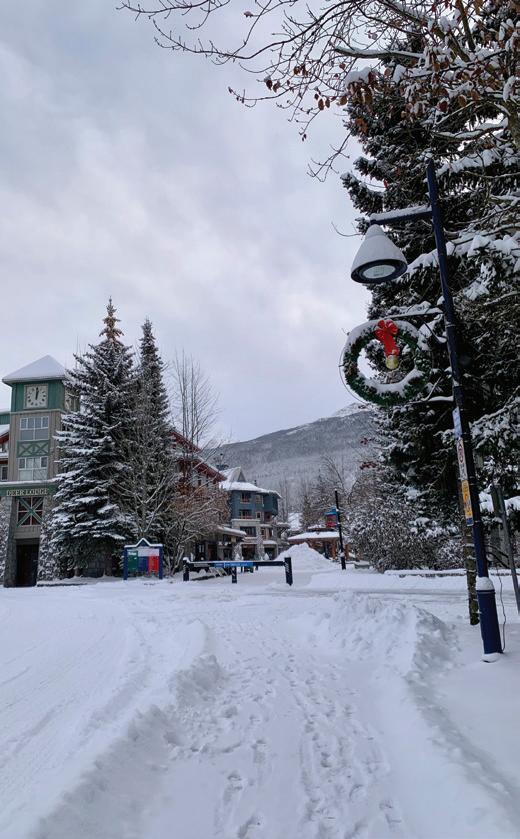

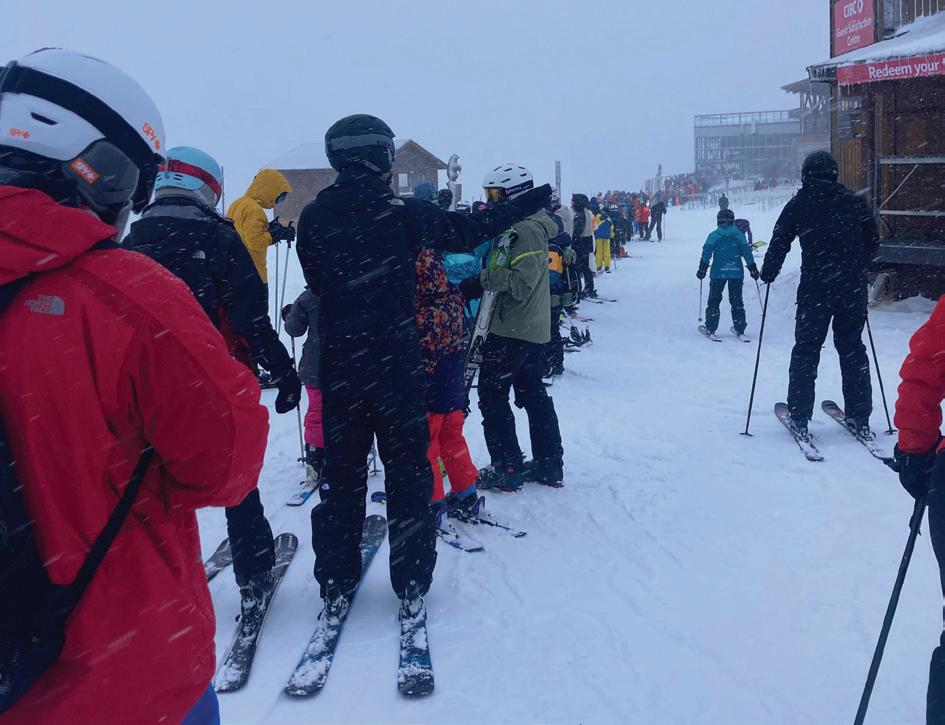








PARTIAL RECALL
1 LIFT OFF Skiers and snowboarders were all smiles as they headed up for their first turns of the 2022-23 winter season on opening day. PHOTO BY KATEY HAMILL, COURTESY OF WHISTLER BLACKCOMB 2 GRAND OPENING Whistler Blackcomb COO Geoff Buchheister joined ambassadors from the Squamish-Lil’wat Cultural Centre on Thursday, Nov. 24, to kick off another winter season.
PHOTO BY KATEY HAMILL, COURTESY OF WHISTLER BLACKCOMB 3 BUS ROUTE Whistler Blackcomb’s new—and temporary— Creekside shuttle was up and running bright and early on opening day.
PHOTO BY GEORGIA BUTLER 4 BRATZ BIZ Whistler kids brought out their craft skills—and the holiday cheer—during the 17th annual Bratz Biz Youth Artisan Market at the Squamish-Lil’wat Cultural Centre from Nov. 26 to 27.
PHOTO BY JOERN ROHDE 5 CHEQUE IT OUT On Nov. 28, Tourism Pemberton presented the Sea to Sky Community Service’s Pemberton Food Bank with a $1000.00 donation raised through the 2022 Slow Food Cycle Sunday event.
board the Whistler
Gondola was a popular place to be on Sunday afternoon. PHOTO SUBMITTED SEND US YOUR PHOTOS! Send your recent snaps to arts@piquenewsmagazine.com 1 2 3 7 6 5 4 DECEMBER 1, 2022 47 OF THE WEEK LOUNGER S Stay Stinky! 21 4314 Main Street Go Sports! 12pm 11pm Daily Recycle? Yes or no? Get the BC RECYCLEPEDIA App www.rcbc.ca RECYCLING COUNCIL OF B.C. MEMBER
PHOTO SUBMITTED 6 SNOW DAY Whistler woke up to a fresh blanket of white snow on Wednesday morning, Nov. 30. PHOTO BY MEGAN LALONDE 7 GET IN LINE With a mandatory download in effect, the queue to
Village
Blackcomb
Blackcomb Façade Technology offers:





• Top Wages
• Extended Health Benefits
• Leisure Benefit
• RRSP Contribution Matching
Resumes and job descriptions: careers@blackcomb.tech www.blackcomb.tech/careers
ASTROLOGY
Free Will Astrology
WEEK OF
ARIES (March 21-April 19): Journalist Hadley Freeman interviewed Aries actor William Shatner when he was 90. She was surprised to find that the man who played Star Trek’s Captain Kirk looked 30 years younger than his actual age. “How do you account for your robustness?” she asked him. “I ride a lot of horses, and I’m into the bewilderment of the world,” said Shatner. “I open my heart and head into the curiosity of how things work.” I suggest you adopt Shatner’s approach in the coming weeks, Aries. Be intoxicated with the emotional richness of mysteries and perplexities. Feel the joy of how unknowable and unpredictable everything is. Bask in the blessings of the beautiful and bountiful questions that life sends your way.
TAURUS (April 20-May 20): Of all the objects on Earth, which is most likely to be carelessly cast away and turned into litter? Cigarette butts, of course. That’s why an Indian entrepreneur named Naman Guota is such a revolutionary. Thus far, he has recycled and transformed over 300 million butts into mosquito repellant, toys, keyrings, and compost, which he and his company have sold for more than $1 million. I predict that in the coming weeks, you will have a comparable genius for converting debris and scraps into useful, valuable stuff. You will be skilled at recycling dross. Meditate on how you might accomplish this metaphorically and psychologically.
GEMINI (May 21-June 20): Tips on how to be the best Gemini you can be in the coming weeks: 1. Think laterally or in spirals rather than straight lines. 2. Gleefully solve problems in your daydreams. 3. Try not to hurt anyone accidentally. Maybe go overboard in being sensitive and kind. 4. Cultivate even more variety than usual in the influences you surround yourself with. 5. Speak the diplomatic truth to people who truly need to hear it. 6. Make creative use of your mostly hidden side. 7. Never let people figure you out completely.
CANCER (June 21-July 22): In my dream, I gathered with my five favorite astrologers to ruminate on your immediate future. After much discussion, we decided the following advice would be helpful for you in December: 1. Make the most useful and inspirational errors you’ve dared in a long time. 2. Try experiments that teach you interesting lessons even if they aren’t completely successful. 3. Identify and honour the blessings in every mess.
BY ROB BREZSNY
anything, because it’s so much fun basking in the pretty glow of prismatic ambiguity. You LOVE there being five sides to every story. I’m not here to scold you about this predilection. As a person with three Libran planets in my chart, I understand the appeal of considering all options. But I will advise you to take a brief break from this tendency. If you avoid making decisions in the coming weeks, they will be made for you by others. I don’t recommend that. Be proactive.
SCORPIO (Oct. 23-Nov. 21): Scorpio poet David Whyte makes the surprising statement that “anger is the deepest form of compassion.” What does he mean? As long as it doesn’t result in violence, he says, “anger is the purest form of care. The internal living flame of anger always illuminates what we belong to, what we wish to protect, and what we are willing to hazard ourselves for.” Invoking Whyte’s definition, I will urge you to savour your anger in the coming days. I will invite you to honour and celebrate your anger, and use it to guide your constructive efforts to fix some problem or ease some hurt. (Read more: tinyurl.com/AngerCompassion.)
SAGITTARIUS (Nov. 22-Dec. 21): Sagittarian comedian Margaret Cho dealt with floods of ignorant criticism while growing up. She testifies, “Being called ugly and fat and disgusting from the time I could barely understand what the words meant has scarred me so deep inside that I have learned to hunt, stalk, claim, own, and defend my own loveliness.” You may not have ever experienced such extreme forms of disapproval, Sagittarius, but—like all of us—you have on some occasions been berated or undervalued simply for being who you are. The good news is that the coming months will be a favourable time to do what Cho has done: hunt, stalk, claim, own, and defend your own loveliness. It’s time to intensify your efforts in this noble project.
Resor t Municipality of Whistler Whistler Village property owner, managers and merchants
As the winter season is with us again, we’d like to take this oppor tunity to remind owners, proper ty managers and merchants of the impor tance of keeping walkways, roofs, stairs and landings adjacent to their stores and proper ties free of ice and snow. It is essential that customers and guests visiting our Village feel safe and comfor table in being able to travel freely about the area
You are required to clear snow and ice from walkways, roofs, stairs and landings adjacent to stores and proper ties by 10 a.m. daily.

RMOW Property Maintenance Bylaw No 810
1 Stocking up on ice melting products (not road salt) and shovels
2 . Checking the heat tracing on stairs and ramps around your proper ty Thanks in advance for your cooperation
Download the Proper ty Maintenance Bylaw at www whistler ca /bylaw in the Frequently Requested Bylaws section.
LEO (July 23-Aug. 22): “All possible feelings do not yet exist,” writes Leo novelist Nicole Krauss in her book, The History of Love. “There are still those that lie beyond our capacity and our imagination. From time to time, when a piece of music no one has ever written, or something else impossible to predict, fathom, or yet describe takes place, a new feeling enters the world. And then, for the millionth time in the history of feeling, the heart surges and absorbs the impact.” I suspect that some of these novel moods will soon be welling up in you, Leo. I’m confident your heart will absorb the influx with intelligence and fascination.
VIRGO (Aug. 23-Sept. 22): Virgo author Jeanette Winterson writes, “I have always tried to make a home for myself, but I have not felt at home in myself. I have worked hard at being the hero of my own life, but every time I checked the register of displaced persons, I was still on it. I didn’t know how to belong. Longing? Yes. Belonging? No.” Let’s unpack Winterson’s complex testimony as it relates to you right now. I think you are closer than ever before to feeling at home in yourself—maybe not perfectly so, but more than in the past. I also suspect you have a greaterthan-usual capacity for belonging. That’s why I invite you to be clear about what or whom you want to belong to and what your belonging will feel like. One more thing: You now have extraordinary power to learn more about what it means to be the hero of your own life.
LIBRA (Sept. 23-Oct. 22): It’s tempting for you to entertain balanced views about every subject. You might prefer to never come to definitive conclusions about

CAPRICORN (Dec. 22-Jan. 19): The bad news: In 1998, Shon Hopwood was sentenced to 12 years in prison for committing bank robberies. The good news: While incarcerated, he studied law and helped a number of his fellow prisoners win their legal cases—including one heard by the U.S. Supreme Court. After his release, he became a full-fledged lawyer, and is now a professor of law at Georgetown University. Your current trouble isn’t anywhere as severe as Hopwood’s was, Capricorn, but I expect your current kerfuffle could motivate you to accomplish a very fine redemption.
AQUARIUS (Jan. 20-Feb. 18): “I stopped going to therapy because I knew my therapist was right, and I wanted to keep being wrong,” writes poet Clementine von Radics. “I wanted to keep my bad habits like charms on a bracelet. I did not want to be brave.” Dear Aquarius, I hope you will do the opposite of her in the coming weeks. You are, I suspect, very near to a major healing. You’re on the verge of at least partially fixing a problem that has plagued you for a while. So please keep calling on whatever help you’ve been receiving. Maybe ask for even more support and inspiration from the influences that have been contributing to your slow, steady progress.
PISCES (Feb. 19-March 20): As you have roused your personal power to defeat your fears in the past, what methods and approaches have worked best for you? Are there brave people who have inspired you? Are there stories and symbols that have taught you useful tricks? I urge you to survey all you have learned about the art of summoning extra courage. In the coming weeks, you will be glad you have this information to draw on. I don’t mean to imply that your challenges will be scarier or more daunting than usual. My point is that you will have unprecedented opportunities to create vigorous new trends in your life if you are as bold and audacious as you can be.
Homework: What do you like a little that you might be able to like a lot? Newsletter.FreeWillAstrology.com.
In addition to this column, Rob Brezsny creates
EXPANDED AUDIO HOROSCOPES
In-depth weekly forecasts designed to inspire and uplift you. To buy access, phone 1-888-499-4425. Once you’ve chosen the Block of Time you like, call 1-888-682-8777 to hear Rob’s forecasts. www.freewillastrology.com
48 DECEMBER 1, 2022
DECEMBER 1
Façade Technology is hiring Glaziers and Apprentices to join our team in Whistler and build and install Raico curtainwall glazing systems. Working on the most interesting architectural projects throughout BC and the Western US, you will be joining a great team that specializes in creating unique glazing solutions for complex commercial and residential builds We are looking for candidates who have the ability to read construction drawings, proficiency with tools, experience in the trades and a penchant for finding solutions.
Resor t Municipality of Whistler whistler.ca/bylaw









DECEMBER 1, 2022 49 Accommodation LONG-TERM RENTALS MULTIPLE LOCATIONS REAL ESTATE Lot For Sale: Ivey Lake Subdivision 5.44 ACRE • $650,000 5.44 ACRE Lot 51, Ivey Lake Subdivision, $650,000, 2-minute walk to Lake. 2.3 Km northeast of Pemberton, a 30-minute drive to Whistler. Fantastic view of Mt Currie.
owen.hairsine@gmail.com MARKETPLACE FOR SALE - MISC PRE-LOVED RE-LOVED = COMMUNITY LOVE RE-USE-IT CENTRE Donations daily 10 am to 4 pm Accepting pre-loved clothing, gear and household items. Shopping daily 10 am to 6 pm 8000 Nesters Road 604-932-1121 RE-BUILD-IT CENTRE Donations daily 10 am to 5 pm Accepting pre-loved furniture, tools and building supplies Shopping daily 10 am to 5 pm 1003 Lynham Road 604-932-1125 Visit mywcss.org and our social channels for updates. HOME SERVICES BUILDING AND RENOVATIONS • Kitchen and Bath • Renovations & Repairs • Drywall • Painting • Finishing • Minor Electrical & Plumbing Serving Whistler for over 25 years Wiebe Construction Services Ray Wiebe 604.935.2432 Pat Wiebe 604.902.9300 raymondo99.69@gmail.com FLOORING Open Monday through Friday 8:30 - 4:30 Saturday 10:00 -4:00 Sundays and Evenings by appointment only. 3-1365 Alpha Lake Road Whistler, B.C, V0N1B1 Phone 604-938-1126 email shawcarpet@shaw.ca Family owned & operated SHAW CARPET & FLOOR CENTRE MOVING AND STORAGE Call 604-902-MOVE www.alltimemoving.ca big or small we do it all! DISPLAY ADS DEADLINE FOR PRINT ADS Tuesday 4pm RENT SELL HIRE Classifieds Where locals look Î Secure & scamless Î Fully searchable Î Targeted online community Î Categorised listings Î No reposting Î Trusted by locals Î Make your listing stand out with featured locations CALL OR PLACE YOUR CLASSIFIED WITH OUR ONLINE SERVICE FOR EITHER PRINT OR ONLINE...OR BOTH! Get the added punch to make your business ad standout with a classified display ad. Free ad design, colour options, incentives for ad frequency. Contact a sales rep today. List your accommodation rental in print & online from only $5* a week Sell your stuff Advertising Options Î Packages start with 4 lines of text. Additional text $1/line Î Add one image in print and up to three online as per package level. Î Bolding .50¢/word Î Border $2 * Rates are based on using Pique’s selfserve online application at classifieds. piquenewsmagazine.com piquenewsmagazine.com 604-938-0202 online only Free* for 30 days print & online $11* per week PRINT & ONLINE SELF-SERVE CLASSIFIEDS.PIQUENEWSMAGAZINE.COM PEMBERTON Whistler’s only dedicated wedding magazine. AVAILABLE ON STANDS IN THE SEA TO SKY The ultimate guide to Sea to Sky weddings 2022 Thank you to all our volunteers and foster homes, we love you! Jo Kamel 360 is a topical that will reduce inflammation and pain Available online and at these Whistler retail locations: TMC Freeriderz Quantum Health Two Guys with Pipes
604-744-8816
EMPLOYMENT OPPORTUNITIES









GeneralManagerHI-Whistler 188-bedhostelinCheakamus Crossing.youwillberesponsible forallaspectsofhosteloperations, staffaccommodationandouronsitecafe.Thesalaryrangeis $55,000-68,000.Comprehensive healthbenefitsandmatching RRSPprogramarealsopartof overallcompensationpackage.Includedwiththispositionisa2 bed,2bathsubsidizedrentalsuite withinwalkingdistancefromthe hostel.Applyonline: http://bit.ly/3GMSAfCconsiderationofcandidateswillbeginimmediately. 604-616-9475 careers.pm@hihostels.ca https://hihostels.ca/careers










WASHBAYATTENDANTSREQUIREDFORWHISTLER& SQUAMISHTRANSIT WHTpositionisfull-time,working8hr/ day(M-F)&SQis10hr/day(M-TH). Hourlyrateofpayis$23.66.Musthave aClass5driver’slicenseorhigherAirbrakeendorsementisanasset.604 -938-0388 recruitment@whistlertransit.ca www.pwtransit.ca

50 DECEMBER 1, 2022 HOME SERVICES MOVING AND STORAGE NORTHLANDS STORAGE STORAGE SPACE AVAILABLE BEST PRICES IN WHISTLER FURNITURE, CARS, BOATS & MOTORCYCLES ETC STORAGE AVAILABLE 604.932.1968 ofce@northlandstorage.ca Services HEALTH & WELLBEING SPORTS & ACTIVITIES Community NOTICES LOST LostblackiPad&case Whenopened,showsatropicalbeach scene. Lostneartheislandinoutsideparking lotadjacenttoWhistlerConvention Ctr.Contactinfowillshowuponlock screenonceconnectedtowifi/internet. Hasmostofmyhoneymoonphotos. Pleasedropitoffatthepolicestation orConventionCtr.IwillbebackDec. 2ndtoWhistler.250-979-1391 rfader@telus.net EMPLOYMENT EMPLOYMENT OPPORTUNITIES Dispatcher/SocialMediaCoordinator WhistlerTransitisseekingaDispatcher/SocialMediaCoordinator, startingimmediately.3on4off plusStatdayscycleofwork(Sat toMon).Dutiesinvolvereceptionist duties,driverdispatch,payrollentry&socialmediacoordination. 604-938-0388 recruitment@whistlertransit.ca FunWithKids! BabysittingWhistlerisHiringfor thewinterseason!We’relooking forenthusiastic,reliable,andcaringstaff! Greatwages Flexiblescheduling SpiritPass FirstaidCertificate Criminalrecordcheck Referencesrequired Ifyoudonothavetheseatthe timeofapplyingWecanguideyou onhowtoobtainthem.emailto apply! info@babysittingwhistler.com
WhistlerPersonnelSolutions
Nocost,nostrings.604-905-4194
Whistler’s premier visitor magazine is on stands now! Find it on select stands and in Whistler hotel rooms. Look for our Winter 2023 Issue! piquenewsmagazine.com/ local-events/ For complete job descriptions and to apply visit audainartmuseum.com/employment Or email applications to bbeacom@audainartmuseum.com The Museum is currently seeking: Assist the Director & Chief Curator, as well as the Curator, in the research, development and presentation of Permanent Collection displays and Special Exhibitions. • Permanent, Full-Time • Competitive Salary • Benefit Program Curatorial Assistant Join a Dynamic Team of Art Lovers! James Hart The Dance Screen (detail) See our full page schedule ad in this issue of Pique for details Group Fitness Classes Thursdays Yoga Roll & Release 8 - 9 pm with Laura Fridays Gentle Fit 1:30 - 2:30 pm w Mel Saturdays - Zumba 10:30 - 11:30 am w Susie Mondays - TRX MIXER 5:15 - 6:15 pm w Courtney Tuesdays - Strength & Cardio 7:30 - 8 am w Carly Wednesdays - Zumba 7:30-8:30 am with Carly
Full-time,part-time&tempjobs.
www.whistler-jobs.com










































DECEMBER 1, 2022 51 www.whistlerwag.com Looking to adopt? For an updated list of who is available, check out our website. WORK WITH US! We o er: • Learn with a high growth company • Flexibility to enjoy Whistler • Extended health benefits • Annual sports pass • Flexible PTO Located in the heart of Whistler, Metronomics works with CEOs and their leadership teams to help them grow with Ease, Speed and Confidence. ACCOUNTANT/CONTROLLER $75K+ EVENTS COORDINATOR $70K+ Apply Now: Email careers@metronomics.com or visit www.metronomics.com/careers Scan me: PLAY HERE » piquenewsmagazine.com/jobs EXPERIENCED BARISTA! If you are an Amazing Barista, who wants to make great money while working in the newest, coolest, and funkiest The Team (who are we?): We have sk iers, snowboarders, fanatics, musicians, family people, single people, and ever y other variety of people, but above all, we have happy people! • Flexible schedule for shredding! • Wage based on experience plus tips • Fun and healthy work environment • 40% discount at sister companies • Top of the line co ee equipment • Killer sound system • Funky ambiance and good vibes only! • Walking distance to the brand new Creekside Gondola • Employee showers The good stuff! Thinking whether you should apply or not? to discover more Don’t ignore this oppor tunity! Of course you are happy where you are, but shouldn’t you always be happier? Come in and check it out We w t ove to hear f o , reach out at Those lack r h u eekside careers@in nityenterprises.ca
Director of Environmental Services (Regular, Full-time)


Looking to contribute to your local community? Consider a career in local government. Join the SLRD’s team of dedicated staff who work together to make a difference in the region. Headquartered in Pemberton, the Squamish-Lillooet Regional District (SLRD) delivers a wide range of regional, sub-regional and local services to its residents. The SLRD is a BC Regional District consisting of four member municipalities (Squamish, Whistler, Pemberton, Lillooet) and four electoral areas. Services include land use planning, solid waste management, building inspection, fire protection, emergency preparedness, 911 services, recreation, water and sewer utilities, regional transit, trails and open spaces as well as financial support for various community services.
The region contains some of the most spectacular forests, waterways, and mountains in the province and affords an endless range of opportunities for outdoor adventure, making it an exceptional place to live, work and play.
The SLRD is seeking an experienced leader to fill the position of Director of Environmental Services. Reporting to the Chief Administrative Officer (CAO), and as a member of the senior leadership team, the Director of Environmental Services is responsible for the strategic oversight of the SLRD’s services including water systems, sewer systems, solid waste management, street lighting systems, flood and debris flow structures, parks and trails development and services, building and facility management, and capital infrastructure projects for the electoral areas of the Regional District. This position is also responsible for short and long-term capital planning including asset management planning, dyking inspections, and bylaw and contract administration for the department.
The ideal candidate will have 7 years of recent related experience overseeing capital infrastructure projects, utilities, solid waste management, parks and trails, or facilities in a local government or corporate setting, and post secondary degree or diploma in Civil Engineering, Applied Science Technology or related discipline. For further information, please refer to the full job description at www.slrd.bc.ca/employment
Salary will be determined commensurate with experience. This position also offers a comprehensive benefits package, participation in the Municipal Pension Plan, a compressed work week (9-day fortnight) and flexible work from home opportunities.
Interested candidates are invited to submit their cover letter and resume (preferably in pdf format) by email to careers@slrd.bc.ca. This posting will remain open until filled, with application review commencing on January 3, 2023.
We sincerely thank all applicants for their interest, however, only those shortlisted will be contacted.
Antifreeze is highly toxic for pets – check for spills and keep safely stored away from pets.
Ice melters can irritate paws – wipe off paws after walks to avoid dogs ingesting.
White dogs are difficult to see in the snow –keep pets on leash as cars are not able to brake or react quickly in the winter weather.
CAREER OPPORTUNITIES
We are a collaborative team with a passion for where we live and what we do. If you love Whistler’s unique mountain culture and want to join an innovative and supportive team, we are now hiring for the following opportunities:

What we offer: a flexible schedule offering work-life balance, a commitment to health and wellness, excellent compensation and benefits package, and a great team environment.




TO VIEW OUR CAREER OPPORTUNITIES, AND TO APPLY, VISIT US ONLINE AT WHISTLER.COM/CAREERS.

52 DECEMBER 1, 2022 Apply to: jobs@pembertonvalleylodge.com Employment Opportunities: Guest Services Agents – Part Time/Full Time Flexible Hours, Health Benefits, Casual Environment $1000 SIGNING BONUS BENEFITS, FULL TIME WORK ARE YOU LOOKING FOR A NEW CAREER IN CONSTRUCTION? WANT TO COME AND WORK FOR A GREAT TEAM WITH LOTS OF ROOM FOR CAREER GROWTH? APPLY TO CONNECT@TMBUILDERS.CA We’re Hiring! Labourers, Carpenters, Foreman, Project Managers
your pooch this winter!
www.whistlerwag.com Protect
• Accountant, Operations • Maintenance Technician/Cleaner • Senior Manager, Content Marketing • Travel Consultant • Visitor Centre Agent
We are currently hiring Part Time Sales Associate Please stop by our Whistler Village location with your resume to fill out an application and say hi to Sheila, or email your resume to whistler@rocksandgemscanada.com (4154 Village Green) | 604 938 3307
SENIOR MANAGER, CONTENT MARKETING 18 Month Contract
















The Senior Manager, Content Marketing is responsible for developing content and stories to communicate the Whistler brand through Tourism Whistler’s social, web, blog, and app channels. This position oversees the development and maintenance of the marketing content calendar, ensuring all Whistler experiences and events are communicated to the right audience at the right time, and collaborates with internal teams to enhance the website’s user experience.
The Senior Manager, Content Marketing is a strategic thinker, exceptional leader and strong communicator. With experience developing content marketing programs, and knowledge of web and social platforms, this position requires effective planning and execution skills, with the ability to positively engage and motivate various stakeholders. TO VIEW

DECEMBER 1, 2022 53 NESTERS MARKET & WELLNESS CENTRE NOW HIRING Deli, Bakery, Produce, Grocery and Meat Clerks Cashiers Juice Bar Attendant Full or Part Time E-mail or drop in your resume to: bruce_stewart@nestersmarket.com please cc ian_fairweather@nestersmarket.com or call us at 604-932-3545 PERKS • Competitive wage – Depending on experience • Access to medical and dental benefits for full time applicants • Percentage discount from store bought goods • Flexible and set schedule • Relative training Blackcomb Façade Technology is hiring Glaziers and Apprentices to join our team in Whistler and build and install Raico curtainwall glazing systems. Working on the most interesting architectural projects throughout BC and the Western US, you will be joining a great team that specializes in creating unique glazing solutions for complex commercial and residential builds. We are looking for candidates who have the ability to read construction drawings, proficiency with tools, experience in the trades and a penchant for finding solutions. Blackcomb Façade Technology offers: • Top Wages • Extended Health Benefits • Leisure Benefit • RRSP Contribution Matching Resumes and job descriptions: careers@blackcomb.tech
www.blackcomb.tech/careers
OUR CAREER OPPORTUNITIES, AND TO APPLY, VISIT US ONLINE AT WHISTLER.COM/CAREERS.
EVR Fine Homes is looking for exceptional people to join our team.
We are a proven leader in residential home and estate building in Whistler. We partner with the best architects, designers and trades in the industry. World class, custom projects require commitment and dedication from our partners and our team of craftspeople.
We have several significant projects currently in progress across Whistler and we are looking for individuals who are keen to build a rewarding career with a company that values quality workmanship.
We are currently hiring for Finish Carpenters, Carpenters, Apprentices, and Labourers.
EVR is committed to the long-term retention and skills development of our employees - we are only as good as our team. We are passionate about investing in the future of our workforce, and offer:
• Competitive Wages
• Annual Tool Allowance
• Apprenticeship Training & Tuition Reimbursement
• On-site Mentoring and Skills Development
• Extended Health and Dental Benefits
• Positive Work Environment
If you love what you do and have a desire to work on architecturally-beautiful and sophisticated custom homes while growing your career with a renowned Whistler builder, please get in touch. You can send your resume to info@evrfinehomes.com and can view our work at www.evrfinehomes.com
We look forward to hearing from you!
Resort Municipality of Whistler Employment Opportunities
· Lifeguard/Swim Instructor
· Legislative and Privacy Coordinator
· Skate Host
· Program Leader
· Wastewater Treatment Plant Process Supervisor
· Lifeguard/Swim Instructor
· Labourer I – Village Maintenance
Resort Municipality of Whistler
· Youth and Public Services Specialist
· Solid Waste Technician · Accountant
• Building Official - Inspector • Garage Assistant • Human Resources Advisor
Employment Opportunities
· Legislative and Privacy Coordinator

· Lifeguard/Swim Instructor
· Skate Host
· Program Leader
Resort Municipality of Whistler whistler.ca/careers
• Lifeguard/Swim Instructor (permanent part time) • Lifeguard/Swim Instructor (casual)
· Wastewater Treatment Plant Process Supervisor
· Lifeguard/Swim Instructor
· Solid Waste Technician
· Labourer I – Village Maintenance
• Program Leader - Myrtle Philip Community Centre
· Accountant
· Youth and Public Services Specialist
Resort Municipality of Whistler whistler.ca/careers
Vacasa’s forward-thinking approach and industry-leading technology help set us apart as the largest full-service vacation rental company in North America.

**SIGNING BONUS** $1000 (FT)
Guest Service Agent - Full or Part-time (year-round)
Night Auditor - Full or Part-time (year-round)
Night Auditor Supervisor - Full Time (year-round)
Lead Housekeeper - Full Time (year-round)
Housekeeper - Full or Part-time (year-round)
Housekeeper Runner - Full or Part-time (year-round)
54 DECEMBER 1, 2022
We are
for providing exceptional vacation experiences for our Owners and Guests. We offer competitive wages and benefits: Travel allowance for
allowance,
Apply online today! https://www.vacasa.com/careers/positions or
or call
seeking individuals with a passion
Squamish/Pemberton-based employees OR Ski Pass/Activity
Extended Medical, RRSP match, Recognition Program, Fun & Safe Work Environment-Great Team, opportunities to grow and more.
email: paul.globisch@vacasa.com
to find out more details at 604-698-0520 We thank all applicants for their interest but only those selected for an interview will be contacted.
OF
Chief Operator – Wastewater Treatment Facility – Regular Full-Time Truck Driver Class 3 – Night Shift- Temporary Full-Time Recreation Program Leader – Temporary Part-Time (20-30 hours) Executive Assistant to the Chief Administrative Officer – Regular Full-Time Recreation Facility Attendant 1 - Regular Part-Time (20 hours) Labourer 2 – Roads and Parks – Regular Full-Time Recreation Program Leader – Regular Part-Time (4-19 hours) Assistant Chief Operator – Wastewater Treatment – Regular Full-Time IT Senior Systems Specialist – Regular Full-Time Recreation Facility Attendant 2 – Regular Part-Time Financial Services Specialist – Temporary Full-Time Truck Driver Class 1 – Regular Full-Time Utilities Technician – Regular Full-Time Custodians – Casual/ On Call WE ARE HIRING squamish.ca/careers Thank you for your interest. Only those applicants being considered for an interview will be contacted. Please reply with a cover letter and resume to hr@listelhotel.com is now hiring for Guest Service Agent This dynamic role include the following Perks and Benefits: • Extended Benefits • $20 per hour starting wage, plus Commissions • $500 signing bonus, plus Seasonal Bonus available • Discounted F&B and Hotel Stays
DISTRICT
SQUAMISH
Free On Site Staff Parking Free Staff Meals






Tuition Reimbursement Program
Retirement Savings Program 50% Discount in our Food & Beverage outlets Team Member Travel Discount (including Friends & Family Benefits)
DECEMBER 1, 2022 55 Extended
Health Benefits
2nd Cook 3rd Cook Chef de Partie SCAN ME AND APPLY TODAY! LEADERSHIP POSITIONS Bar & Restaurant Supervisor FOOD & BEVERAGE Restaurant Host HOUSEKEEPING Room Attendant SALES Tour Coordinator We’re looking for a motivated individual to join our team as a manager’s assistant at the front counter of our busy trade shop. Any experience within the construction industry will be an asset. To apply email brian@whistlerglass.com Lil’wat Business Group Cashier (on-call) Junior Forester Ullus Community Center General Manager, Community Services On-Reserve Lands Manager Program Accountant Receptionist (on-call) Snow Removal Technician Health & Healing Infant Development Program Coordinator Homemaker Ts’zil Learning Center Indigenous Support Worker Receptionist (on-call) FirstVoices & DiGi Technician Xet’olacw Community School Grade 5 Teacher (mat leave) Grade 2 Teacher Educational Assistant Lil’wat Nation Employment Opportunities Please visit our career page for more information: lilwat.ca/careers/career-opportunities-2/ Benefits Pension Plan • Employee Assistance Program • Gym facility Extended Health Benefits • Professional Development VALLEA LUMNIA TEAM LEAD VALLEA LUMINA AV SPECIALIST SNOWMOBILE GUIDE SNOWSHOE GUIDE ZIPLINE GUIDE CLASS 2 & 4 SHUTTLE DRIVERS SNOWCAT GROOMER (4PM - 11PM) Competitive wage, flexible schedule, free activities, friends and family discounts, Gibbons perks and more!
Sales Associates Positions Available!
At the Liquor Distribution Branch (LDB) our vision of ‘Service. Relationships. Results.’ is all about providing a valued service, building strong relationships with our stakeholders, and achieving greater results for the province.
The LDB is one of two branches of government responsible for the cannabis and liquor industry of B.C. We operate the wholesale distribution of beverage alcohol within the province, as well as the household retail brand of BC Liquor Stores.
We employ nearly 5,000 people in over 200 communities and have been named one of BC’s Top Employers 14 times over for offering exceptional places to work rooted in values of fairness and respect, work-life balance, and inclusion and diversity. We believe that our people are our greatest asset. Being a reputable employer with programs of skills training and professional development are what attract candidates to BC Liquor Stores, while our progressive, forward-thinking culture is why employees with a growth mindset thrive.
Auxiliary positions are on-call, meaning hours of work are not guaranteed and subject to availability. Some auxiliary employees may not initially work a full 35-hour week, but with more hours worked and more seniority gained, more opportunities for more hours of work will follow.
Auxiliary positions are not permanent full-time but can lead to permanent full-time opportunities with a very competitive total compensation package, including a comprehensive pension plan, medical and dental coverage (including massage and physiotherapy), tuition reimbursement and scholarship programs, and access to public service employee benefits including career support services, financial and legal services, and employee and family counselling.
We are dedicated to the highest quality of customer service, delivered with friendliness, individual pride, initiative, and retail passion! If you fit this description and you are prepared to work in a fast-paced environment, we encourage you to apply to become a part of the Whistler area BC Liquor Stores.
To be eligible, applicants must meet the following qualification requirements:
• Be at least 19 years of age
• Be able to legally work in Canada
• Be able to provide excellent customer service
• Be able to communicate effectively and professionally with the public
• Be able to demonstrate aptitude for cashier and related duties, including calculations
• Be able to perform physically demanding work, including lifting 20-25 kg boxes
• Have a valid Serving It Right Certificate™

• A Criminal Record Check is required.
BC Liquor Store Sales Associates may be required to operate a variety of mechanical and hand-operated equipment, in addition to handling large volumes of bottles as part of the LDB’s recycling program.

Rate of Pay as of April 10, 2022: Auxiliary Sales Associate - $20.33 per hour Seasonal Sales Associate - $18.92 per hour

For exciting and challenging retail opportunities, please apply online at: http://bcliquorstores.prevueaps.ca/pages/openings/ Or apply in person at: Whistler Marketplace 101-4360 Lorimer Rd, Whistler
On November 1, 2021 the BC Public Service announced the COVID-19 Vaccination Policy that defines the conditions and expectations for BC Public Service employees regarding vaccination against COVID-19. Among other possible measures, proof of vaccination will be required. It is a term of acceptance of employment that you agree to comply with all vaccination requirements that apply to the public service. More information can be found here: https://www2.gov.bc.ca/ gov/content/careers-myhr/all-employees/safety-health-well-being/health/covid-19/covid-19vaccination-policy-for-bc-public-service-employees
FISH & RICE SUSHI AND BEYOND IS HIRING AN EXPERIENCED JAPANESE CHEF.

• Preparing Sushi and cooking other Japanese food.
• Ensure food meets quality standards.
• Estimate food requirements and labour costs.
• Instruct Kitchen Helpers and Cooks in preparation, cooking, and presentation of food.
• Inspecting ingredients for quality and freshness and supervising all food preparation.
• Create new menu, recipes and specials.
• Lead the team and ensure orders are completed in a timely manner and provide excellent customer services.
• Assist Head Chef and supervise cooks and kitchen helpers.
• May demonstrate new cooking techniques to kitchen staff.
• May act as a Sous-Chef and oversee the entire kitchen operation in absence of Head Chef.
QUALIFICATIONS:
• Completion of secondary school preferred and 2 years or more experience as a chef/cook.
• Previous Japanese cook/chef experience including in a supervisory capacity an asset.
Full-time, Permanent All season, 30+ hours per week $27 per hour • Language of work is English.
Benefits: 4% Vacation Pay Start date: As soon as possible.
Address: 102-7433 Frontier Street, Pemberton, BC, V0N 2L0 Apply by email at fishandricesushi@gmail.com

WE ARE HIRING!
COMPETITIVE SALARIES
Be a part of the DHD team and their next exciting project – Finch Drive. A 20 acre, master-planned community using modern building technologies to achieve some of Squamish’s most energy efficient, multi-family homes.
For more information about DHD, full job descriptions and how to apply, visit www.dhdev.ca
56 DECEMBER 1, 2022
PLAY HERE »
• HOUSEKEEPING SUPERVISOR • HOUSEMAN • ROOM ATTENDANTS Please reply by email: parmstrong@pinnaclehotels.ca The Pinnacle Hotel Whistler has the following positions available:
piquenewsmagazine.com/jobs
DHD CONSTRUCTION LTD., a Squamish-based, full-service construction and development company is HIRING THE FOLLOWING POSITIONS:
PROJECT MANAGER SITE SUPERVISOR SENIOR CARPENTER FOREPERSON 2 CARPENTERS • 2 LABOURERS
EXTENDED HEALTH // DENTAL BENEFITS // PAID SICK TIME // PERSONAL TOOL PROGRAM
Job ID: #OPH1350
Title: OPERATOR (INDUSTRIAL MECHANIC) – HYDROELECTRIC ENERGY
We are currently hiring the following positions for projects in WHISTLER.
We are currently hiring the following positions for projects in WHISTLER.
Journeymen Carpenters (5+ years)
Journeymen Carpenters (5+ years)
Skilled Labourers
Skilled Labourers
Why should you join our team?
Location: PEMBERTON, BC (CANADA)
Innergex Renewable Energy Inc. is a global player with an extensive and growing portfolio of assets in Canada, the United States, France, and Chile. The Corporation develops, acquires, owns, and operates hydroelectric facilities, wind farms and solar farms exclusively producing renewable energy.

For 30 years, Innergex has believed in a world where abundant renewable energy promotes healthier communities and creates shared prosperity. We are convinced that generating power from renewable sources will lead the way to a better world. Sustainable development generating positive social, environmental, and economic results guides our actions. We are proud not only of the work we do, but also of the way we do it. Our many accomplishments and continued success are made possible by our exceptional team of employees.
Your contribution!
We offer competitive pay, a benefits package, company cell phone plan, interesting projects, a collaborative team environment, and a chance to improve your existing skills.
We offer competitive pay, a benefits package, company cell phone plan, interesting projects, a collaborative team environment, and a chance to improve your existing skills.

We are looking for dedicated team players who want to join a rapidly growing company and establish a long term career in construction.
We are looking for dedicated team players who want to join a rapidly growing company and establish a long-term career in construction.
Please forward your resume to Lea@gccltd.ca
Please forward your resume to Lea@gccltd.ca
Being an Operator – Hydroelectric Energy in Pemberton is to work with the operations team to operate the hydroelectric power plants by way of conducting and documenting all regular monitoring and maintenance. Your experience and your ability to be and work on your own while reporting to a team will make you an ideal candidate.
Your day-to-day!
• Operate the hydroelectric power plants by way of conducting and documenting all regular monitoring and maintenance;
• Carry out all actions required to optimize the output and production of the power plants;
• Participate in the set-up and monitoring of a Preventative Maintenance program for plants’ and facilities’ equipment including their electrical and mechanical testing and repair;
• Perform maintenance, annual maintenance and repair of the power plant;
• Read electrical schematics, wiring diagrams, pneumatic and hydraulic drawings;
• Carry out all necessary actions for the troubleshooting and resolution of alarms generated by the hydroelectric power plants to minimize downtime (availability 24 hours a day) when on duty;
• Manage and/or assist any specialized contractors needed to perform maintenance and repairs at the power plants;
• Participate in the daily work planning and operations activities;

• Adhere to and implement the Occupational Health and Safety standards of WorkSafe BC and Innergex;
• Adhere to a variable work schedule and reside at the Innergex residence while at the facility.
The site and work details:
Free Housing
Join our team of Plumbers and Gas Fitters
Hiring 3rd and 4th year apprentice or journeyman candidates with experience in service/repair work.
• Offering competitive wages
• Providing fully stocked truck, tools, and phone
• Extended health plan available.
• We can hire skilled foreign workers and support permanent residency applications.
• Short-term accommodation availablefree of charge. Long term housing options available as well.
Send your resume to: Dough@spearheadsph.com
• This is a remote work site located minutes out of Pemberton (the marshalling point);
• Employees’ work schedule is 8 days on and 6 days off at 10 hours per day for a total of 80 working hours per two (2) week period. Travel time between the marshalling point and the site is included in these hours;
• Employees are provided with a pickup truck for travel between the marshalling point and site and for use on site;
• Employees are required to stay at company-provided accommodations while on shift;
• Employees are provided with furnished accommodation while working on site: cable TV, telephones and internet access are available;
• Employees are provided with a Living out Allowance for each day they are on site.
Your skills, our requirements!
• Training and experience as an Industrial Mechanic;
• ITA certification as an Industrial Mechanic Journeyman is an asset;
• Must posses a valid BC driver’s license in good standing, Class 1 is an asset;
• Experience with 4-wheel drives and snowmobiles is required;
• Must have an appreciation for outdoors;
• Experience in instrumentation is an asset;
• Experience in troubleshooting, maintaining and repairing industrial, electrical and electronic control systems and other related devices is an asset;
• Experience with hydro plant operations is an asset.
Additional considerations:
• The position is based at our hydroelectric power plants outside of Pemberton, BC:
• You need to be comfortable in spending many consecutives days in the bush, at camp;
• You must commit to further education relevant to the role: Innergex provides formal and in-house training, as required.
Our benefits!
• Opportunity to contribute to building a better world;
• Competitive wages;
• Group benefits (medical/dental/extended health/RRSP/ESPP/PTO);
• Career development opportunities;
• Ongoing training;
• Dynamic work environment; Innergex is an equal opportunity employer that values each person’s unique background, diversity, experiences, perspectives and talents. Innergex is committed to providing employees with a work environment free of discrimination and harassment and bases all employment decisions on business needs, job requirements and individual qualifications.
The key to our success as a global company is to recruit, develop and retain the most talented people from a diverse candidate pool.
www.innergex.com
Please note that only candidates selected for an interview will be contacted.
DECEMBER 1, 2022 57




58 DECEMBER 1, 2022 Open interviews Mon.-Thurs. from 5- 6 PM, or email your re sume to schedule an alternate interview time at whistler@kegrest aurant s.com •3 -4 FULL TIME LINE CO OK S (eve ning ), up to $27/hr plus tips and benefits for experienc ed cook s •2-3 FULL TIME PR EP CO OK S (day), up to $25/hr plus tips and benefits for experienc ed cook s WE AR E HIRING WH IS TL ER requires: Front Desk Staff $22/hour F/T & P/T hours available Must be available Friday, Saturday & Sundays Duties include pre arrival & post departure check of vacation rental units Some duties include: providing resort information & directions, providing information about the lodge, changing light bulbs, troubleshooting WIFI and Cable, unloading the occasional dishwasher. We are looking for someone who has attention to detail, is able to work independently, can communicate clearly, is a problem-solver, is willing to use a computer and can self lead completing daily tasks. Please send resumes to: info@acervacations.com AVAILABLE ON STANDS IN THE SEA TO SKY The ultimate guide to Sea to Sky weddings 2022 Answers #17 MEDIUM 9 185 1427 7 491836 82 4218 325 3 785936421 263714895 914582637 637429518 549178362 821365974 456297183 392851746 178643259 #18125786349 734129685 968534127 571268493 643917852 892453716 389645271 256871934 417392568 MEDIUM 963 24 74 312 4187 971 97 8 294 www.sudoku.com Red Door Bistro needs an Experienced line cook/chef to join our team. Candidates must have at least 5 years cooking experience in upscale restaurant environment. Must have knowledge and experience cooking at grill/sauté station and have basic butchery, vegetable preparation and plating skills. Salary will be based on experience, plus tips and Extended Medical & Dental benefits. Please email resume to info@reddoorbistro.ca




























DECEMBER 1, 2022 59 Looking for a community oriented job with purpose? We are hiring! Food Programming Support Worker • Mon - Fri • 24-40 hours PT or FT • physical position must be able to lift 50 plus lbs. • wage $20-23 • clean drivers abstract • 40 hours FT position will receive health and wellness benefits apply with resume and cover letter to gizem@mywcss.org Whistler’s premier visitor magazine is on stands now! Look for our Winter 2023 Issue! Find it on select stands and in Whistler hotel rooms We've Got You Covered VISITORS’ GUIDE 2017-2018 FRE HOUSEKEEPING, SHUTTLE DRIVER WE'RE HIRING DELTA WHISTLER VILLAGE SUITES COMPETITIVE RATES. GLOBAL DISCOUNTS. GLOBAL CAREER. Join the #1 Global Leader in Hospitality. Apply at Jobs.Marriott.com. Contact Adela.Celustkova@deltahotels.com for more information, or drop by and talk to us - we love to meet new people.

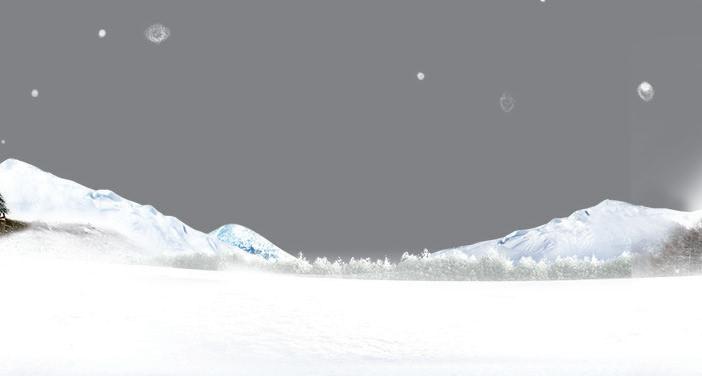


































CALL THE EXPERTS Want to advertise your service on this page? Call Pique at (604) 938-0202, or email sales@piquenewsmagazine.com 60 DECEMBER 1 , 2022 DOUG BUSH SURVEY SERVICES LTD DOUGLAS J BUSH AScT, RSIS p: 604-932-3314 c: 604-935-9515 Engineering & construction layout Topographic & site improvement surveys Municipal, volumetric & hydrographic surveys GPS global positioning systems www.dbss.ca // dougb@dbss.ca SURVEYING Snow Clearing Excavation, Backfill, Landscaping Contact us now for a free quote: James Culgin • 604-932-8826 james@culgincontracting.com Tyler Kehler • 780-242-6547 tyler@culgincontracting.com www.culgincontracting.com SNOW CLEARING Riverstone Tile Contact Peter Groves P 604 729 2543 E petergroves711@hotmail.com riverstonetiles.com No job too big or too small. From multi-million dollar homes, to basement suites and kitchen backsplash. TILING AUTO GLASS SPECIALISTS Frameless Shower Enclosures Complete Window/Door Packages Custom Railing Glass Systems Fogged/Failed Window Replacements mountainglass.ca | info@mountainglass.ca 604-932-7288 THE COMPLETE GLASS CENTRE GLASS FOR ALL YOUR HOUSEHOLD & COMMERCIAL NEEDS ROB PIDGEON • 604-932-7707 • Bonded & Insured www.birdhouseservices.com BirdhouseServices@gmail.com find us on GENERAL MAINTENANCE • Carpentry • Tiling • Drywall Repairs • Texture Finishing • Renovations • Installation • Painting • Plumbing • Snow Removal • Appliance Repairs Ask Us About • Mine Sweeping Your Home HOME SERVICES Residential/Commercial Heat Pumps Boilers-Furnaces-Chillers Design Build Call us today! 778-994-3159 www.westerntechnical.net Western Technical System Inc HVAC/R HEATING AND COOLING Offering unparalleled products and services to our community since 1964 Let one of our qualified paint consultants help brighten your life with new selections of Benjamin Moore coatings. 604 894 6240 | 7426 Prospect Street PAINT BLACKCOMB CHIMNEY PATROL LTD. Serving Whistler since 1986 Specialized in cleaning Chimneys, Furnace & Airducts, Dryer vents. 604.932.5775 / 1.877.932.5775 blackcombchimney@yahoo.ca CHIMNEY BLACK BEAR CARPET CLEANING LTD. www.blackbearcarpetcleaning.ca • 604 698 6610 100% ECO FRIENDLY CERTIFIED • Carpets • Upholstery • Tiles • Car Interiors • Furnace • Airducts • Dryer vents CARPET CLEANING www.summersnow.ca Summer Snow Finishings Limited WIND OW COVERINGS Whistler’s Source forBlinds since1989 David Weldon david@summersnow.ca 604-938-3521 •Wood blinds •Sunscreens •Shades •Motorization BLINDS ETC. Coast Mountain Cleaning •Full service cleaning• Residential &Commercial •Carpet &UpholsteryCleaning •Property Maintenance •Established 2011 We follow allVCH, Min of Health andWHO Covid 19 protocols Insured &Bondable •Criminal background checks on all staff 604-966-1437 coastmountaincleaning@gmail.com We use teatreeoil based cleaning products. CLEANING Tel: 604-935-2101 Email: windowcov@shaw.ca www.whistlerwindowcoverings.ca Custom Blinds • Shades • Draperies Connie Griffiths SUNCREST WINDOW COVERINGS • BLINDS • SHADES • SHUTTERS • DRAPERY Custom Window Treatments Contact us today for a free quote or consultation info@suncrestwindowcoverings.com 604.698.8406 BLINDS ETC. ACCOUNTING BLINDS ETC. AFFORDABLE BOOKKEEPING & PAYROLL SERVICES • Payroll Processing • Bookkeeping Clean Up • Catch Up Work • Government Requirements whistlervalleybusiness.com • contact@valley-business.ca 604-938-8095 WANT TO ADVERTISE your service here? Call Pique at (604) 938-0202 , or email sales@piquenewsmagazine.com
Remnant
Pastis avor
“How -- -- doing?”

DOWN
Succeed (2 wds.)
Met production
Buenos --, Argentina
Chromosome material
Destroy a tape
Finish rst
Least at risk
Loam
Ski lodge type (hyph.)

Tabloid topic
Not at any time
Fountain in Rome
Close companions 16 Teahouse attire
Work
Open-air lobbies
Kingdom 21 Behind 30 Horrify
Wander
Kingdom
Laptops
Honor society letter
Wanted-poster abbr.
Jags
Whipped cream

Circulars
Old saying 49 Polygraph unkers
Kind of committee (2 wds.)
-- Kong

Sigh or murmur
Blend
-- mignon
Salad days
Fresh scent
Trounced
Plains tribe
Deposited eggs
Prone to 69 Crowded in
Cybercriminal
Thanks, in Mexico
Went wrong
King’s place 76 Pennies
Figure out
Zeno followers 80 Attila the -82 Growled
Scent nders 84 Witty remarks 85 Where Aesop shopped 86 Gather leftovers 87 Winter precipitation 88 Mattress extra 89 Emergency signal 90 Parties
Re ne, as metal
Comic swamp critter
Rackets
Military students
Teakettle sound
Police noises
Small amount 103 Bosses
Make taboo
Indent key
Lofts
Green fruit
Bored
Hwys.
Mark down
Big pipes
Really funny (2 wds.)

Rapidity
Banded stone
Hard to climb
Bamboo muncher
Astronomer Carl --
Like circus lions
Use force
Hazardous
Headset, to hams
Units of work
Barbie’s friend
Set the dog on
Gehrig or Costello
Zoologists’ mouths
PUZZLES
1 Prods 6 Chops down 10 Jeer 15 Type of bear 20 Speculate 21 Eagle’s perch 22 Volunteer 23 Diminish 24 Untamed 25 Former French coin 26 Demonstrate the truth of 27 Zodiac sign 28 Is, for them 29 Destines 31 Bear constellation 33 Nights before 35 Artist’s paint 36 Talk hoarsely 38 Rose or Sampras 39 Motel accommodation 40 Brink 41 Tot’s wheels 42 -- pants 44 Go over again 46 Cry of disdain 48 49th state 51 Tool for a sculptor 53 Make moister 58 Accomplished 59 Completely 61 Choose 62 Pop bottle sizes 63 Promissory note 65 Sighs of relief 67 Bends forward 69 Prickly weed 71 Oversupply 72 Feel one’s way 74 Auto sticker info 75 Hunted down 76 Labyrinth locale 77 Edible snail 79 A real eye-opener 80 Moors 81 Little
82 Greeted kitty 83 Now, to Caesar 84 Lodestone 87 Pried 88 Vatican gures 92 Leered 93 Blunter 94 “Law & Order” gs. 95 Oregon city 96 Angled a nail 97 Forced 98 Takes cover 100 Indulge to excess 101 Tijuana
102 Lox go-withs 103 Hr. fraction 104 Close kin 106 Family mem. 107 Poison remedy 109 Slick 112 Least common 114 Had a repast 115 Shower features 117 Make better 119 Moby Dick
122 Salt meas. 125 -- Bombeck 126
127
131
132
133
137
ACROSS
chirper
“Mrs.”
pursuer
Pure white bird
Mix together
Witch, to Shakespeare
This, in Spanish
134
136
Major Japanese port 139 Come next 141 Illinois city 143 Frisks about 145 Shell sh eater 146 Proclamation 147 Chestnuts and bays 148 Kind of salad 149 Mall frequenters 150 Walking steps 151 Carried a tune 152 With regret
1
2
3
4
5
6
7
8
9
10
11
LAST WEEKS’ ANSWERS Solution, tips and computer program at www.sudoku.com ANSWERS ON PAGE 58 Enter a digit from 1 through 9 in each cell, in such a way that: • Each horizontal row contains each digit exactly once • Each vertical column contains each digit exactly once • Each 3x3 box contains each digit exactly once Solving a sudoku puzzle does not require any mathematics; simple logic suf ces. LEVEL OF DIFFICULTY: MEDIUM MEDIUM#17 9 185 1427 718 491836 829 4218 325 3 MEDIUM#18 864 73468 8 5168 97 4576 2 56934 139 DECEMBER 1, 2022 61
Ego
Dissenter
12
13
14
15
17
18
19
32
34
37
41
43
44
45
47
48
50
52
54
55
56
57
60
62
64
66
68
70
71
73
75
78
79
83
91
93
94
97
98
99
102
105
108
109
110
111
113
116
118
119
120
121
123
124
126
128
129
130
132
135
138
140
142
144
The sickening reality of a society that doesn’t feed its own
IT WAS AN EERIE feeling walking around a local grocery store on Monday. For starters, it wasn’t crowded. Given the time of day, that was a bit surprising. But the out-of-body experience was more about the behaviour of the people there.

An unusual number of them had empty handbaskets. A few had none at all, as though they’d just popped in to pick up an item or two. But they too had nothing in their hands. At first, I thought maybe they were searching for something that was supply-chained into oblivion, as so many grocery items continue to be.
BY G.D. MAXWELL
But then I noticed the blank, uncomprehending stares they seemed to share, to a greater or lesser degree. And given what they were staring at—chicken, soup, other canned goods—it seemed more like they exhibited the 500-metre stare of incomprehension rather than the shared experience of not finding what they were looking for.
The more I watched them, the more it dawned on me they’d been zombie-smacked by the prices they were seeing. Perhaps sticker shock or the saddening realization of how much more those items cost than they did a week or two or a month ago had immobilized them, short-circuiting the interface between their need and their budget.
A couple returned their baskets and walked out emptyhanded. Maybe they went to a different store. Maybe they wondered when the food bank opened. Maybe they went back home to doublecheck what they had in their cupboards. Maybe they decided to come back wearing baggier pants and coats to roll the dice and shop the five-finger discount. Beats me.

I picked up the few items I wanted, ignoring, or trying to ignore, their prices and left humming Jimmy Buffett’s “Peanut Butter Conspiracy,” an ancient song about down-and-outers shoplifting their way through the Mini Mart.
“We all knew if we ever got rich, we would pay the Mini Mart back.” Yeah, dream on.
We’ll never be as rich as the grocers. Don’t get me wrong and don’t get riled up. I don’t mean the folks who work there and manage these places. I don’t mean the locally owned grocery stores. I mean the Loblaws, Sobeys, Pattison empires, et. al. of the country. The ones that are publicly traded—which is pretty much all of them except those in the Jim Pattison empire— are enjoying record profits and near all-time high share prices. Their quarterly securities filings are stuffed like a holiday turkey with the kinds of numbers that make their C Suites and shareholders feel festive. And
I’m sure no one at Mr. Pattison’s corporate offices are singing the blues this Christmas.
Not so their vacant-eyed, whipsawed shoppers. Buying food for their families has never been so gut-wrenching.
It’s hard to read a newspaper without seeing another story of another food bank in Anytown Canada posting record visits and pleading with people to help keep their shelves stocked. Whether it’s in large urban centres or our own ’hood, food banks are experiencing unprecedented demand.
Locally, Whistler’s food bank thought the kinds of numbers that exploded when the pandemic hit and everything shut down
line, boost their bonuses or enrich their shareholders. It just means they have to hustle harder, fundraise harder and worry more.
And so, in the next couple of days, I’ll do something I absolutely hate to do. It’s the most dreaded and rewarding thing I do every year and far too often more than once a year. It’s an activity that makes me feel a bit ashamed of Canada and British Columbia and yes, even Whistler. It’s something I’ve been doing for almost as long as I’ve been able, which is almost as long as they’ve existed in more or less their current form.
I’ll make a substantial—at least for me— donation to the food bank.
and help keep our town stumbling along. The people who do all the jobs that keep this resort a resort instead of a ghost town. People we need to keep livin’ our own dream.
So let’s make this as easy as possible.
The food bank doesn’t need your canned goods, your pasta, the fruitcake haunting your pantry. Okay, they do. But mostly they need your money. It’s easier, cheaper and more efficient for them to purchase what they know they need.
So write them a cheque. Drop off a money order. Hell, give ‘em a briefcase full of cash. Donate your grocery store points to them. It’ll make you feel good.
would taper off when things began to return to normal, whatever that is. Not so. More and more, their record clientele includes gainfully employed residents squeezed between how much they make and how much it costs to house and raise their families, keep them healthy and keep them fed.
Both Whistler and Pemberton food banks are experiencing the kind of growth in demand for their services that would bring smiles to the faces of all those C Suite execs at the big grocery companies. Except their kind of growing demand doesn’t pad the bottom
Beyond galling, it both infuriates and sickens me a rich country like ours relies on charity to help feed so many of its citizens. Institutionalized charity. Necessary charity now built into what we think of as our social safety net. Charity that was supposed to be temporary when the first food banks popped up four decades ago.
I’ll swallow my bile and donate. So should you. If you can. Why? Because charity begins at home and this is our home. The people who are needing and using the food bank are our neighbours. Our friends. The people who work
Need more incentive? Are you fortunate enough to have non-registered investments? Donate shares of companies or units of mutual funds or ETFs. Whether your investments are losers or winners, you’ll win. You’ll get a charitable tax credit. The food bank will get the value of your securities. If you donate a winner, you avoid the capital gain you would have if you sold it and donated the money. If you dump a loser, you still get the capital loss you can use in the normal way. Sorry for the finance nerd dive, but this is the kind of winwin that appeals to portfolioed people.
Too hard? Au contraire. Head over to CanadaHelps.org. They’ll make it slam-dunk simple to donate securities to the Whistler Community Services Society’s food bank. Or any number of other Whistler charitable organizations.
Whatever your means and outlook on donating to charity, think local. And all things considered, isn’t supporting food for folks who need it about as fundamental as it gets?
Rhetorical question. ■
MAXED OUT
GETTY IMAGES
62 DECEMBER 1, 2022
[A]ll things considered, isn’t supporting food for folks who need it about as fundamental as it gets?
nightly though the Hilton full-service, rental management program. $949,000
Connie Spear 604-910-1103

RAINBOW

#35 - 8400 Ashleigh McIvor Stunning 3 Bed, 3.5 Bath Townhouse in

SQUAMISH

Paradise Valley Road Escape to your 9-acre waterfront estate in Paradise Valley. Down valley living offers lot size & absolute privacy unavailable in Whistler. Live in the carriage home while building your 5,400 sq.ft. dream home. paradisevalleyestate.com $3,185,000
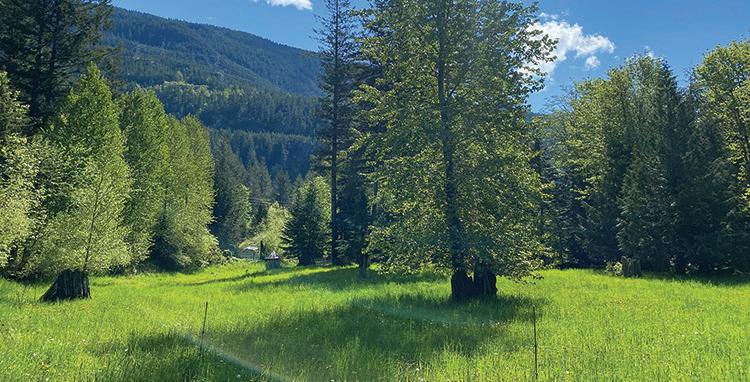
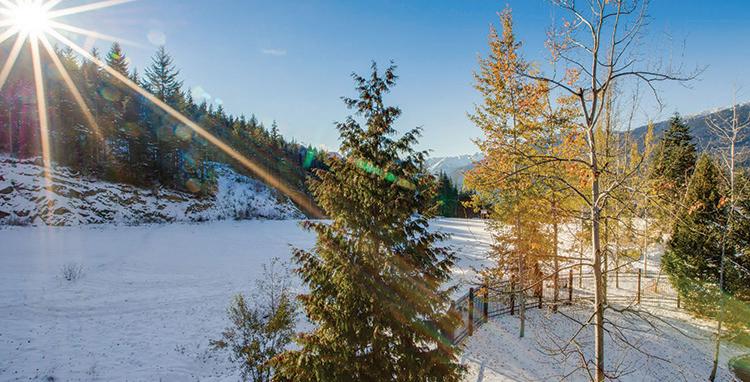

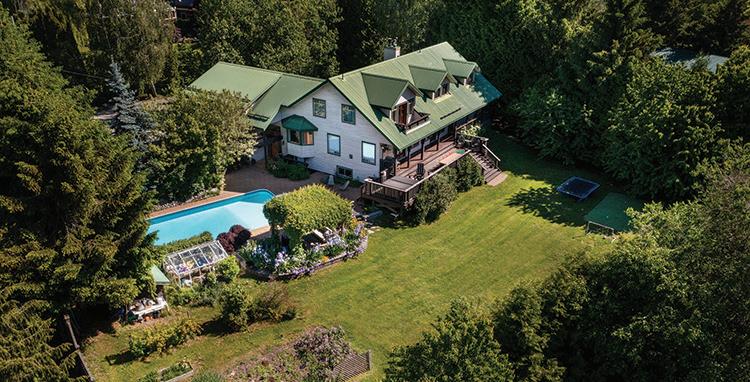

Ken Achenbach 604-966-7640
Whistler
Squamish

*PERSONAL REAL ESTATE CORPORATION
brokerage independently owned and operated.
Each
Engel & Völkers Whistler
Village Shop 36-4314 Main Street · Whistler BC V8E 1A8 · Phone +1 604-932-1875 whistler.evrealestate.com
Station Shop
& Völkers i s a proud c hampion of Special Olympics. Many o f our a dvisors donate a p or tion of t heir commissions to Special Olympics o n behalf o f their clients. This simple p rogram m eans t hat ever y time we help our c lients realize their real estate goals, we are helping a Special Olympian get j ust a bit closer to theirs. GLOBAL REACH, LOCAL KNOWLEDGE FOLLOW YOUR DREAM, HOME
1414 Pemberton Farm Rd W Story book log cabin on a subdividable 5 acres set completely in nature, not a neighbour in sight! Perfectly positioned to capture the natural light and mtn views with skiing, biking, hiking golfing out your back door and only 10 min’s to Pemberton. $1,775,000
Wilson
VILLAGE #17 - 4150 Tantalus Drive First time offered for sale is this impressive 2070 sq.ft. end unit with 3 bdrms, a large loft, den and 4 bathrms. Northern Lights has it’s own ski trail and is walking distance to the Village and Valley Trail. $3,825,000 Laura
WHISTLER VILLAGE 702 & 704 4050 Whistler Way Hilton Owners enjoy unlimited stays and a central village location offering all the amenities of a resort hotel. This lock-off 2 bed, 2 bathroom, with storage may also be rented
150-1200 Hunter Place · Squamish BC V8B 0G8 · Phone +1 778-733-0611 squamish.evrealestate.com CONTRIBUTION AT CLOSING Engel
PEMBERTON
Suzanne
604-966-8454 WHISTLER
Wetaski 604-938-3798
Red Sky. Panoramic Views, quality construction, designer furniture, garage space, chef’s kitchen, spa like bathrooms, and a fantastic community! Longterm lease available! Contact Jake. $9,850/month Jake Breuer
ALTA VISTA 3045 Alpine Crescent 4 bed/4.5 bath, vaulted ceilings, large windows, south facing deck, extensive gardens, 3 levels of thoughtful living space + 2 bedroom suite. Nearby Lakeside Park & Valley Trail to Village or Creekside. $3,800,000 Kathy White
BAYSHORES 2540 Tricouni Place This home offers exquisite craftsmanship and attention to detail and features a gourmet kitchen, designer bathrooms, radiant heat, sauna and hot tub. A gorgeous contemporary home with mountain elements that truly bring the outdoors in! $2,499,000 Sam Surowy 604-902-9754 BLACK TUSK 73 Garibaldi Drive 73 Garibaldi Drive is a spacious 3,170 sq/ft home that is situated on a quiet 7,535 sq/ft lot within the quiet & serene Black Tusk development that is a short 15 minute drive to Whistler! $1,899,000 Maggi Thornhill prec* 604-905-8199 NORDIC 7H-2300 Nordic Drive Ski in – ski out shared ownership At Natures Door on Whistler Mountain. 3.5 bed, 3.5 bath townhome with hot-tub, garage, pool, gym, managed by Fairmont. Schedule your viewing today. $389,000 Nick Swinburne prec* 604-932-8899 SOLD NEW TO MARKET NEW TO MARKET FOR RENT
604-698-7259
604-616-6933 Carmyn Marcano 604-719-7646







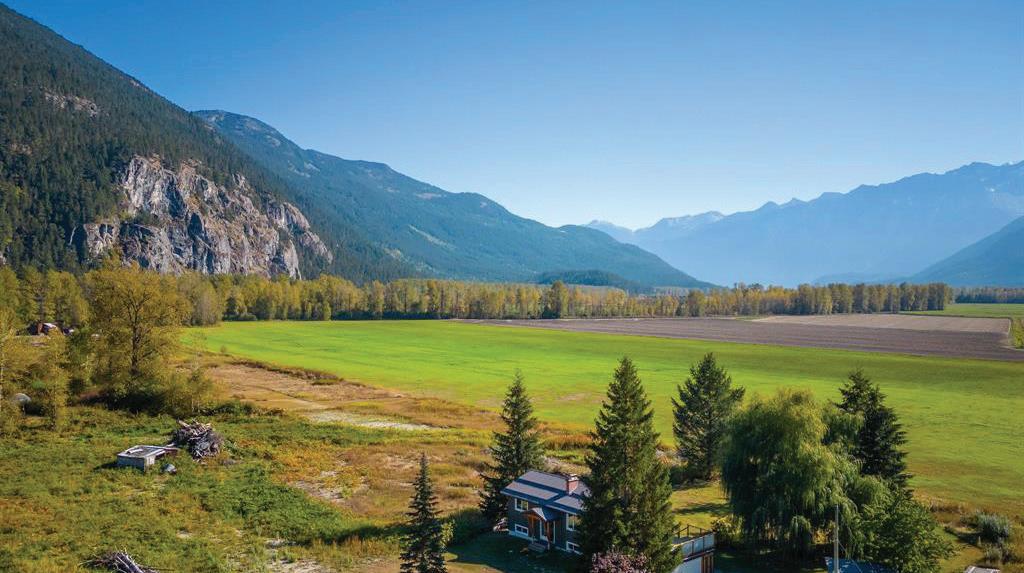




OFFICE
Portage Road,
BC V0N
or Toll Free 1.888.689.0070 WHISTLER OFFICE 106 - 7015 Nesters Road, Whistler, BC V8E 0X1 604.932.2300 or Toll Free 1.888.689.0070 *PERSONAL REAL ESTATE CORPORATION remax-whistler.com Property Management remaxseatoskypm.com Meg McLean* 604.907.2223 Sally Warner* 604.905.6326 8019 Nicklaus North Blvd. $5,695,000 With an absolutely stunning location on the 15th hole of the Nicklaus North golf course, this 5 bedroom and den home features truly spectacular lake and mountain views. Relax in the open living / dining area with vaulted ceilings and floor to ceiling windows to enjoy the breathtaking views, or soak up the sun from one of two beautiful sun decks or garden patio. 8322 Valley Drive $4,650,000 This stunning residence is ready for you to call home. Situated in the quiet, local’s neighbourhood of Alpine Meadows, it is a quick 5-minute drive north of the Village. Fully renovated in 2019 with meticulous attention to detail, this 3-story chalet offers understated luxury with a relaxed mountain ambiance. Mike Nauss 604.932.9586 Richard Grenfell 604.902.4260 #4J - 2300 Nordic Drive $349,000 At Natures Door is a 2nd to none lifestyle!! This home includes 3 spacious Bedrooms, 3.5 bathrooms, media room, and fully furnished right down to the place mats and towels. Offering its own private hot tub, bbq, as well as being Ski in, Ski out, directly onto the Dave Murray Olympic Run. 1/10th Share. 2154 Whistler Road $2,279,000 Highly sought after, rarely available 3 bed/3 bath end unit townhome in Aspen Ridge. 3 levels of light, bright, spacious living just moments to Creekside shopping and gondola. Ski out to Dusty’s after a day on the hill, grab a few groceries from the market and walk home for a quiet night in. 40889 The Crescent, Squamish $2,899,000 Modern executive home, including a one bedroom suite, backing onto greenspace in Squamish’s University Highlands - you will not find this quality and condition at this price on the North Shore or in Whistler. Live at the heart of Squamish’s world famous mountain bike trail network. Ursula Morel* 604.932.8629 Alexi Hamilton 604.902.3291 #321 - 4800 Spearhead Drive $1,199,000 Location, Location, Location! Just in time for Winter - TRUE SKI IN/OUT complex on Blackcomb mountain, a short ski down to the new 10 person gondola! Spacious 1 bedroom, 1 bathroom unit in a quiet location with balcony facing the green belt providing utmost privacy - Turn key opportunity for your rentals and/or personal usage. 6500-Lot172 In-Shuck-Ch FSR $140,000 This charming vacation home is located within the pristine wilderness of Lillooet Lake, just north of Whistler. Extensive improvements have been made on this 1/3 of an acre property that comes with a modern mobile cabin that can sleep up to seven. Walk down to the community beach where you can launch your boat or paddleboard during the summer. Ann Chiasson 604.932.7651 #310 - 4821 Spearhead Drive $1,595,000 Cozy 2 bedroom unit on 2 levels with 1 and a half bathrooms and 2 tandem underground parking spaces. This unit has not been in the rental program and was recently renovated. New hardwood flooring, Granite countertops, upgraded appliances and bathrooms. A short walk to Blackcomb ski runs. NO GST Bob Cameron* 604.935.2214 #32 - 6127 Eagle Ridge Cres. $1,759,000 The Whistler Cay Heights location of this Eagle Ridge property is one of the most desirable in all of Whistler. Whistler Village & the Valley Trail network are within a 5 minute walk offering easy access to shopping, dining, entertainment, ski lifts, golfing, biking and countless recreational opportunities. 900 Erickson Road $2,290,000 Mid-century modern home with architectural updates. 5 acres in the Pemberton Meadows with unobstructed views from majestic Mt Currie to the Pemberton Icefields. A comfortable living environment with three bed, two bath, storage, and a two-car garage, natural light, views from all rooms, radiant hot water heat, and a wood-burning stove. Theresa McCaffrey 604.902.1700 5 3 4.5 6 Dave Beattie* 604.905.8855 7055 Nesters Road $6,200,000 A very unique property with nightly rental zoning within walking distance of the village. With 7+ bedrooms, this home previously operated as Durlacher Hof, a cornerstone Pension in Whistler. All bedrooms have private ensuite bathrooms, as do the office, family room and private owner’s quarters. The 360+ sq. ft. kitchen is a chef’s dream. 2 1 3 8 Video - rem.ax/900ericksonrd 3D Tour - rem.ax/8322valley 3D Tour - rem.ax/8019nicklaus 3 Dave Sharpe 604.902.2779 #19 - 4375 Northlands Blvd. $27,900 This is it ! Ski week #4 fixed ownership in a luxury 3 bedroom townhome in the village. It is rare to find a fractional value like this one. This 3 bedroom 2.5 bath is over 1350 ft2 and just had significant renovation, new appliances, Granite topped kitchen counter, new carpet and furniture. 3 Open House Sat 1 to 3pm 3D Tour - rem.ax/310powderhorn 3D Tour - rem.ax/321eagle 3D Tour - rem.ax/7055nesters 3D Tour - rem.ax/19valhalla Open House Sun 1 to 3pm 3 3D Tour - rem.ax/2154aspenridge PEMBERTON OFFICE 1411 Portage Road, Pemberton, BC V0N 2L1 604.894.6616 or Toll Free 1.888.689.0070 WHISTLER OFFICE 106 - 7015 Nesters Road, Whistler, BC V8E 0X1 604.932.2300 or Toll Free 1.888.689.0070 *PERSONAL REAL ESTATE CORPORATION remax-whistler.com Property Management remaxseatoskypm.com Meg McLean* 604.907.2223 Sally Warner* 604.905.6326 Sherry Baker* 604.932.1315 8019 Nicklaus North Blvd. $5,695,000 With an absolutely stunning location on the 15th hole of the Nicklaus North golf course, this 5 bedroom and den home features truly spectacular lake and mountain views. Relax in the open living / dining area with vaulted ceilings and floor to ceiling windows to enjoy the breathtaking views, or soak up the sun from of two beautiful sun decks or garden patio. 8322 Valley Drive $4,650,000 This stunning residence is ready for you to call home. Situated in the quiet, local’s neighbourhood of Alpine Meadows, it is a quick 5-minute drive north of the Village. Fully renovated in 2019 with meticulous attention to detail, this 3-story chalet offers understated luxury with a relaxed mountain ambiance. Mike Nauss 604.932.9586 Richard Grenfell 604.902.4260 #4J - 2300 Nordic Drive $349,000 At Natures Door is a 2nd to none lifestyle!! This home includes 3 spacious Bedrooms, 3.5 bathrooms, media room, and fully furnished right down to the place mats and towels. Offering its own private hot tub, bbq, as well as being Ski in, Ski out, directly onto the Dave Murray Olympic Run. 1/10th Share. 2154 Whistler Road $2,279,000 Highly sought after, rarely available 3 bed/3 bath end unit townhome in Aspen Ridge. 3 levels of light, bright, spacious living just moments to Creekside shopping and gondola. Ski out to Dusty’s after a day on the hill, grab a few groceries from the market and walk home for a quiet night in. 40889 The Crescent, Squamish $2,899,000 Modern executive home, including a one bedroom suite, backing onto greenspace in Squamish’s University Highlands - you will not find this quality and condition at this price on the North Shore or in Whistler. Live at the heart of Squamish’s world famous mountain bike trail network. Ursula Morel* 604.932.8629 Alexi Hamilton 604.902.3291 #321 - 4800 Spearhead Drive $1,199,000 Location, Location, Location! Just in time for Winter - TRUE SKI IN/OUT complex on Blackcomb mountain, a short ski down to the new 10 person gondola! Spacious 1 bedroom, 1 bathroom unit in a quiet location with balcony facing the green belt providing utmost privacy - Turn key opportunity for your rentals and/or personal usage. 6500-Lot172 In-Shuck-Ch FSR $140,000 This charming vacation home is located within the pristine wilderness of Lillooet Lake, just north of Whistler. Extensive improvements have been made on this 1/3 of an acre property that comes with a modern mobile cabin that can sleep up to seven. Walk down to the community beach where you can launch your boat or paddleboard during the summer. Ann Chiasson 604.932.7651 #310 - 4821 Spearhead Drive $1,595,000 Cozy 2 bedroom unit on 2 levels with 1 and a half bathrooms and 2 tandem underground parking spaces. This unit has not been in the rental program and was recently renovated. New hardwood flooring, Granite countertops, upgraded appliances and bathrooms. A short walk to Blackcomb ski runs. NO GST Bob Cameron* 604.935.2214 #32 - 6127 Eagle Ridge Cres. $1,759,000 The Whistler Cay Heights location of this Eagle Ridge property is one of the most desirable in all of Whistler. Whistler Village & the Valley Trail network are within a 5 minute walk offering easy access to shopping, dining, entertainment, ski lifts, golfing, biking and countless recreational opportunities. 900 Erickson Road $2,290,000 Mid-century modern home with architectural updates. 5 acres in the Pemberton Meadows with unobstructed views from majestic Mt Currie to the Pemberton Icefields. A comfortable living environment with three bed, two bath, storage, and a two-car garage, natural light, views from all rooms, radiant hot water heat, a wood-burning stove. Theresa McCaffrey 604.902.1700 5 3 4.5 6 Dave Beattie* 604.905.8855 7055 Nesters Road $6,200,000 A very unique property with nightly rental zoning within walking distance of the village. With 7+ bedrooms, this home previously operated as Durlacher Hof, a cornerstone Pension in Whistler. All bedrooms have private ensuite bathrooms, as do the office, family room and private owner’s quarters. The 360+ sq. ft. kitchen is a chef’s dream. 2 1 3 8 Video - 900ericksonrdrem.ax/ 3D Tour - 8322valleyrem.ax/ 3D Tour - 8019nicklausrem.ax/ 3 Dave Sharpe 604.902.2779 #19 - 4375 Northlands Blvd. $27,900 This is it ! Ski week #4 fixed ownership in a luxury 3 bedroom townhome in the village. It is rare to find a fractional value like this one. This 3 bedroom 2.5 bath is over 1350 ft2 and just had significant renovation, new appliances, Granite topped kitchen counter, new carpet and furniture. 3 Open House Sat 1 to 3pm 3D Tour - /310powderhornrem.ax 3D Tour - 321eaglerem.ax/ 3D Tour - 7055nestersrem.ax/ 3D Tour - 19valhallarem.ax/ Open House Sun 1 to 3pm 3 3D Tour - 2154aspenridgerem.ax/
PEMBERTON
1411
Pemberton,
2L1 604.894.6616

















































































































































































































































 - STEVE ST. ARNAUD
- STEVE ST. ARNAUD


























































































































































































































































































































































































































































































































































































































































































































































































































































































































































































































































































































































































 BY LESLIE ANTHONY
BY LESLIE ANTHONY
 SEARCH PARTY The RECCO system uses harmonic radar to bounce a signal off of a reflector source, and has evolved into an essential tool for SAR crews.
SEARCH PARTY The RECCO system uses harmonic radar to bounce a signal off of a reflector source, and has evolved into an essential tool for SAR crews.







































































 - CHRIS SPRING
- CHRIS SPRING





































 BY ALYSSA NOEL
BY ALYSSA NOEL















































































































































































































































